An expatriate, or “expat”, is someone who has deliberately moved away from their native country for the specific purpose of establishing a new life in a foreign land. I’m not talking about a temporary relocation for work, or a semester abroad for school. An expat isn’t one of those vagabond types who takes off on a road trip and somehow manages to stay gone for months, or years. They’re not the folks who live in motor homes, and most definitely not the snowbirds who migrate for the winter to avoid cold weather. Expats are the folks who choose to leave the familiar, permanently, in exchange for the strange.
Some do it for love: love of a person, love of a place, or love of an exotic profession that doesn’t exist back in their original home. Most often? It’s about money–and, typically, it’s not about making money, it’s about stretching what you’ve already got. There are many retirees, especially among those who exit the work force early, who flock to countries with a slower pace of life and a lower cost of living. There are regions in Europe that qualify–the Costa del Sol in Spain, most of southern Italy, even parts of France can be a bargain when compared to New York, or California. Some Asian countries, like Thailand, Malaysia, and Viet Nam–those can be wonderful places to live, at a fraction of what it costs in Dallas or Detroit (especially when you factor in the cost of health care, which is almost always far cheaper overseas). For citizens of the U.S. and Canada, Latin America is highly attractive, if only because it’s so close, and there are several countries south of the border that actively seek to attract the AARP crowd: Panama, Ecuador, Costa Rica. They make it easy to get long term Visas, easy to buy and sell property, and you’ll be entitled to discounted rates on everything from bus fare to your electric bill.
Click the link (above) to access the International Living website
International Living is a monthly magazine specifically geared toward expatriates and expatriate wannabes, and every year, in January, they publish an admittedly subjective ranking of the world’s top retirement havens, based on an averaged score of ten different lifestyle factors, from Infrastructure to Health Care, Cost of Living to Climate. This year, Panama took top honors with an averaged score of 93.5 (out of a possible 100). Ecuador was a close second, at 92.4, and number three? Mexico, at 89.3! That’s surprising, but in a good way, because a lot of folks are still gun shy (literally) about Mexico. Most of the people I know are wary of traveling there, much less living there, because of all the negative press about drug gang violence, particularly in the northern border areas. But the thing is, the border areas are not the spots where the expats tend to cluster. Most of the country is perfectly safe, and while there are some common sense precautions that you should take when traveling in Mexico (or anywhere else), it’s not something you need to fear. (See my recent post, Mexican Road Trip: 2015, for details about my own recent experience). All told, there are close to a million U.S. Citizens living in Mexico. Did you just do a slight double-take? Yes, you heard me right–a million! Some are dual nationals, many travel back and forth between the two countries, but there are a dozen cities and towns that I can name off the top of my head that host large expat communities, and plenty of those folks live in Mexico year ’round. Puerto Vallarta, made famous by Liz Taylor and Richard Burton back in the ’60’s, and just as beautiful as ever. La Paz, in Baja California Sur, world famous for its fishing. Merida, a colonial city in the Yucatan that I’ve touched on in this blog (a recent post titled Southern Colonials). Then there’s Lake Chapala, south of Guadalajara, with one of the largest concentrations of American retirees outside the United States. At least 10,000 American ‘pensionados‘ call the Lake Chapala area home!
One place in particular always rises to the top in any discussion of Mexican expat havens: that’s the lovely colonial city of San Miguel de Allende, in the state of Guanajuato. San Miguel is located in the central mountains, 170 miles north of Mexico City, and just 630 miles south of Piedras Negras on the Texas border.
At an elevation of 6200 feet, and a tropical latitude (just south of the Tropic of Cancer), the climate is as ideal as the location, with average highs around 80 degrees and lovely cool nights. The city itself is another of those charming colonials, a UNESCO World Heritage site with beautifully preserved, centuries-old buildings lining steep cobblestone streets. Between the out-and-out expatriates and the chilangos, (a somewhat disparaging term for people from Mexico City), close to 20% of the population is from somewhere else, and San Miguel has what is generally considered the second largest concentration of American expat retirees after Lake Chapala, somewhere between 5,000 and 8,000 seemingly very happy people.
A portion of San Miguel’s American Expat contingent, hamming it up on the Dia de Los Muertos. Representative? I hope so! These guys were great!
Some would say that the mere presence of so many foreigners in a relatively small city like San Miguel permanently alters it. That may be true. In fact, it most certainly IS true, but it isn’t necessarily such a bad thing. I was there for the three day celebration of the Dia de los Muertos, and the first day, which coincides with Halloween, was a celebration for families. El Jardin, the main plaza in San Miguel, was a scene of absolute joy, and unanimity–families, all in costume, children laughing, everyone posing for photographs, calling their friends over, everyone posing together and wall to wall smiles. I don’t think I’ve ever felt so thoroughly included in any celebration I’ve ever attended in a foreign country, and I’m sure a lot of that had to do with the fact that so many Americans live there, and were such a big part of the crowd that night. The division between nationalities was less pronounced than I’ve ever seen it, and I found that very, very refreshing. One thing I will say (and I can’t emphasize it strongly enough): if you’re going to do any serious traveling in Latin America, much less if you’re contemplating living there? Learn Spanish. Make an effort. It’s not only appreciated by the people that you deal with, once you get it down? It will open up a whole new world to you. (Click thumbnails to expand photos).
There’s a lot more that I could write about San Miguel de Allende, surely, but nothing that hasn’t been done, and re-done, by people far closer to the source of the story than I could ever hope to be. Suffice to say that it’s a wonderful town, with a fascinating history, beautiful architecture, and some great people, of just about every nationality–but most especially Mexican. No matter how many foreigners move to San Miguel de Allende, no matter how many foreign businesses are opened or how many tourists flood the streets, it will always be, at its heart, pure Mexico.
One thing about it that deserves a mention: because of its popularity, the cost of living, particularly as regards rents and the cost of real estate, is higher than in most other parts of the country. You won’t find bargains here, so if that’s what motivates you, best to look at other locations that are, perhaps, less traveled.
Click any photo in the slide show below to expand the images to full screen, with captions:
(Unless otherwise noted, all of these images are my original work, and are protected by copyright. They may not be duplicated for commercial purposes.)
READ MORE LIKE THIS:
This is an interactive Table of Contents. Click the pictures to open the pages.
ON THE ROAD IN MEXICO
MEXICAN ROAD TRIP: HOW TO PLAN AND PREPARE FOR A DRIVE TO THE YUCATAN
The published threat levels are a “full-stop” deal breaker for the average tourist. That’s unfortunate, because Mexican road trips are fantastic! Yes, there are risks, but all you have to do to reduce those risks to to an acceptable level is follow a few simple guidelines.
<<CLICK to Read More!>>
Mexican Road Trip: Heading South, From Laredo to Villahermosa
When it was our turn, soldiers in SWAT gear surrounded my Jeep, and an officer with a machine gun gestured for me to roll down my window. He asked me where we were going. I’d learned my lesson in customs, and knew better than to mention the Yucatan. “We’re going to Monterrey,” I said, without elaborating.
He checked our ID’s and our travel documents, then handed them back. “Don’t stop along the way,” he advised. “You need to get off this road and to a safe place as quickly as you can!”
<<CLICK to Read More!>>
Mexican Road Trip: Zapatista Road Blocks in Chiapas
“Good morning,” I said. “We’re driving to Palenque. Will you allow us to pass?”
The leader of the group, a young Mayan lad, walked up beside my Jeep, and fixed me with a menacing glare. “The road is closed,” he said, keeping his hand on the hilt of his machete. “By order of the Ejército Zapatista de Liberación Nacional!”
“Is it closed to everyone?” I asked innocently. “How about if we pay a toll? How much would the toll be?”
He gave me an even more menacing glare. “That will cost you everything you’ve got,” he said gruffly, brandishing his machete, while his companions did the same.
<<CLICK to Read More!>>
Mexican Road Trip: Mayan Ruins and Waterfalls in the Lacandon Jungle
The next morning, we were waiting at the entrance to the Archaeological Park a half hour before they opened for the day. We were the only ones there, so they let us through early, and I had the glorious privelege of photographing that wonderful ruin in the golden light of early morning, without a single fellow tourist cluttering my view.
<<CLICK to Read More!>>
Mexican Road Trip: Cancun, Tulum, and the Riviera Maya
The millions of tourists who fly directly to Cancun from the U.S. or Canada are seeing the place out of context. They can’t possibly appreciate the fact that they’re 2,000 miles south of the border; a whole country, a whole culture, a whole history away from the U.S.A. Just looking around, on the surface? The second largest city in southern Mexico could easily pass for a beach town in Florida.
<<CLICK to Read More!>>
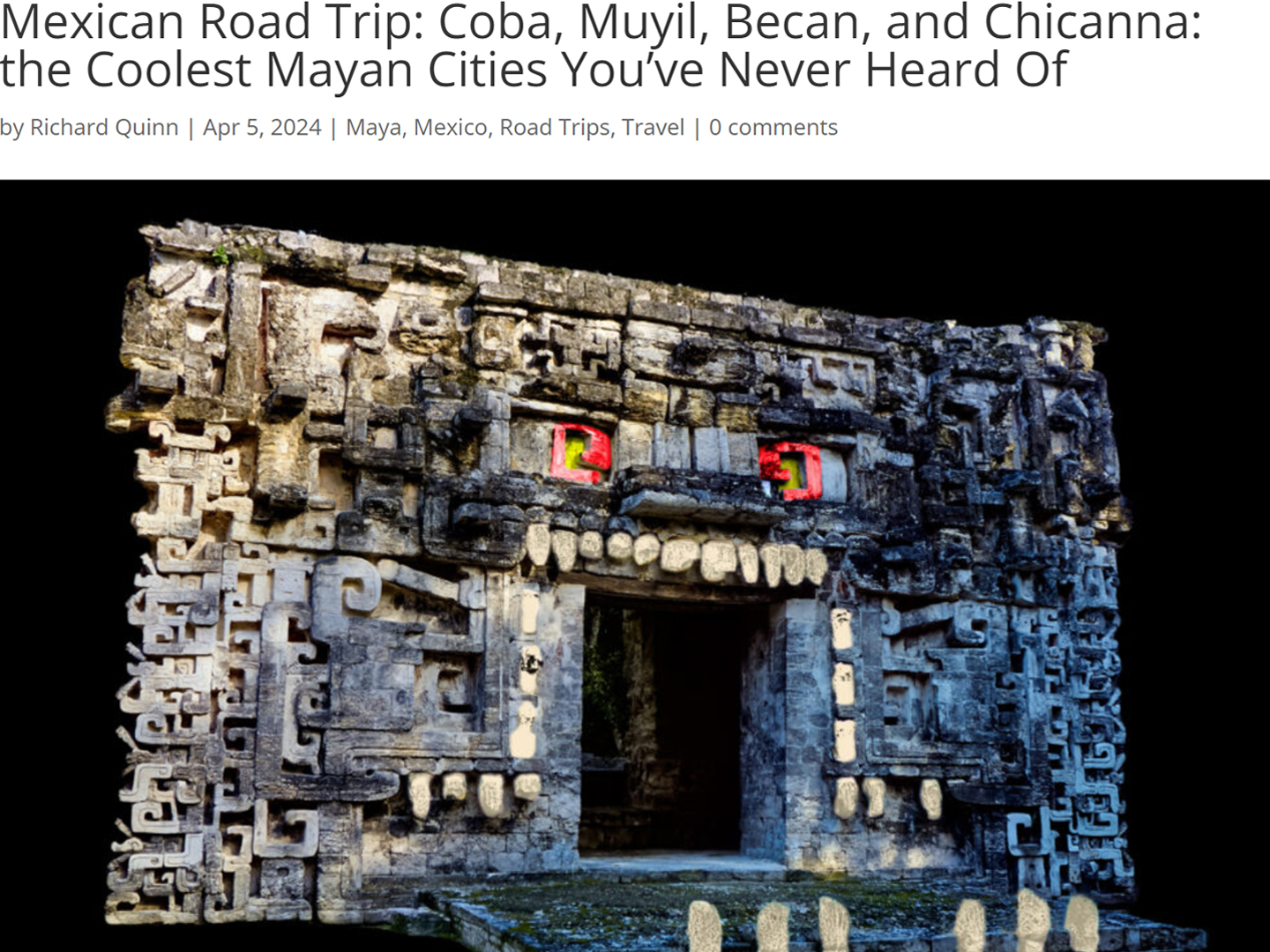
Mexican Road Trip: Cobá, Muyil, Becán, and Chicanná: the Coolest Mayan Cities You've Never Heard Of
After Tulum, we drove south, then west, headed back to Campeche. Along the way, we visited some Mayan ruins that are less well known, starting with Cobá. the major Mayan city northwest of Tulum, followed by Muyil, Becan, and Chicanná. Each site was unique, and each of them added another piece to the puzzle of the ancient Maya.
(This post is a work in progress. Anticipated publication: April, 2024)
<<CLICK to Read More!>>
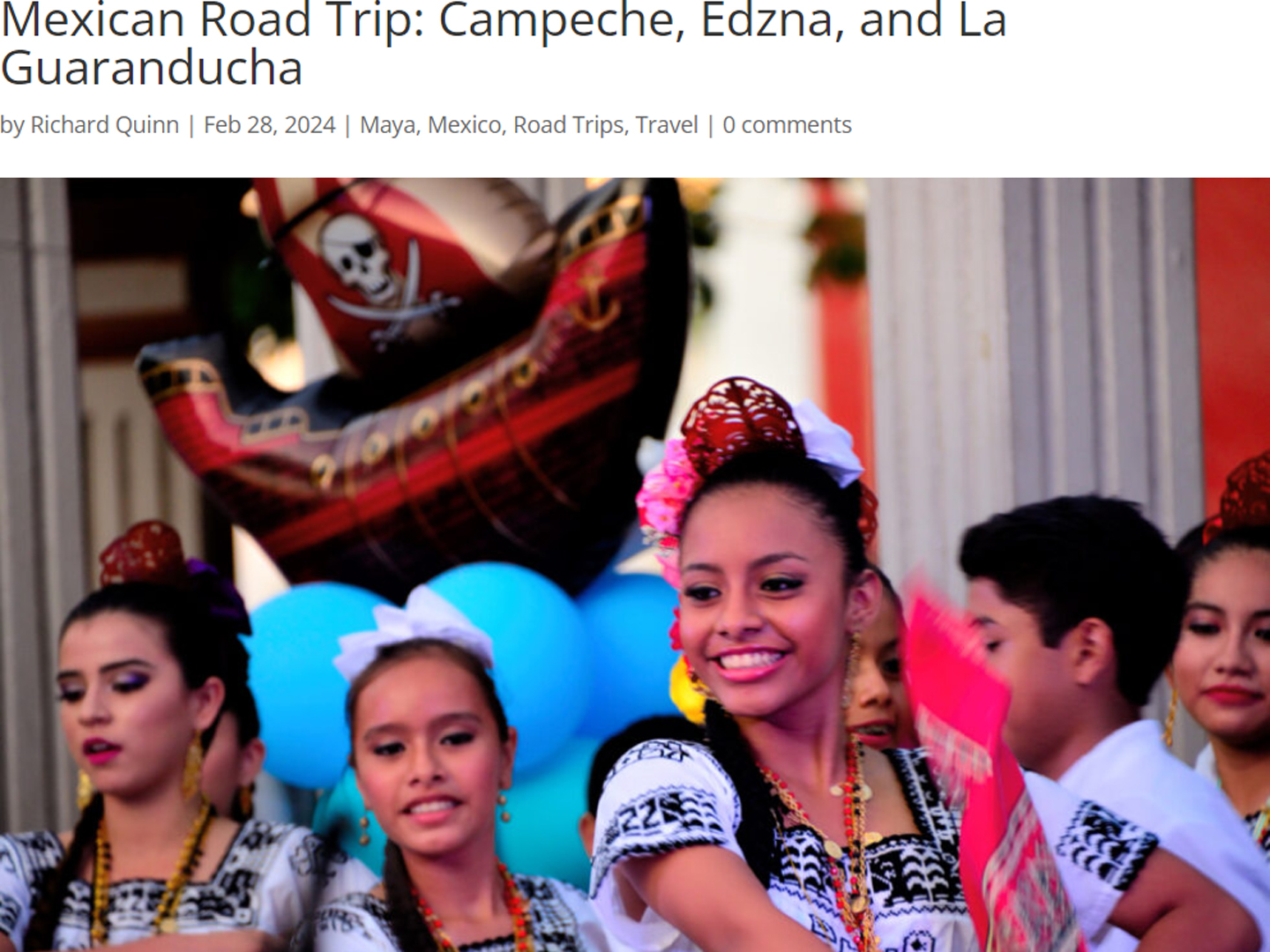
Mexican Road Trip: Campeche, Edzna, and La Guaranducha
(This post is a work in progress. Anticipated publication: May, 2024)
<<CLICK to Read More!>>
Southern Colonials: Merida, Campeche, and San Cristobal
Visiting the Spanish Colonial cities of Mexico is almost like traveling back in time. Narrow cobblestone streets wind between buildings, facades, and stately old mansions that date back three hundred years or more, along with beautiful plazas, parks, and soaring cathedrals, all of similar vintage.
<<CLICK to Read More!>>
San Miguel de Allende, Mexico's Colonial Gem
If you include the chilangos, (escapees from Mexico City), close to 20% of the population of San Miguel de Allende is from somewhere else, a figure that includes several thousand American retirees.
<<CLICK to Read More!>>
Day of the Dead in San Miguel de Allende
In San Miguel de Allende, they've adopted a variation on the American version of Halloween and made it a part of their Day of the Dead celebration. Costumed children circle the square seeking candy hand-outs from the crowd of onlookers. It's a wonderful, colorful parade that's all about the treats, with no tricks!
<<CLICK to Read More!>>
IN THE LAND OF THE MAYA
Palenque: Mayan City in the Hills of Chiapas
Palenque! Just hearing the name conjures images of crumbling limestone pyramids rising up out of the the jungle, of palaces and temples cloaked in mist, ornate stone carvings, colorful parrots and toucans flitting from tree to tree in the dense forest that constantly encroaches, threatening to swallow the place whole.
<<CLICK to Read More!>>
Uxmal: Architectural Perfection in the Land of the Maya
The Pyramid of the Magician is one of the most impressive monuments I've ever seen. There's a powerful energy in that spot--maybe something to do with all the blood that was spilled on the altars of human sacrifice at the top of those impossibly steep steps--but more than any building or other structure at any ancient ruin I've ever visited, more than any demonic ancient sculpture I've ever seen, that pyramid at Uxmal quite frankly scared the hell out of me!
<<CLICK to Read More!>>
Photographer's Assignment: Chichén Itzá
To get the best photos, arrive at the park before it opens at 8 AM. There will only be a handful of other visitors, and you’ll have the place practically all to yourself for as much as two hours! Take your time composing your perfect shot.There won’t be a single selfie stick in sight.
<<CLICK to Read More!>>
Tulum: The City that Greets the Dawn
Tulum is not all that large, as Mayan sites go, but its spectacular location, right on the east coast of the Yucatan Peninsula, makes it one of the best known, and definitely one of the most picturesque.
<<CLICK to Read More!>>
Cobá and Muyil: Mayan Cities in Quintana Roo
Cobá was a trading hub, positioned at the nexus of a network of raised stone and plaster causeways known as the sacbeob, the white roads, some of which extended for as much as 100 kilometers, connecting far-flung Mayan communities and helping to cement the influence of this powerful city.
<<CLICK to Read More!>>
Becan and Chicanná: Mayan Cities in the Rio Bec Style
Much about the Rio Bec architectural style was based on illusion: common elements include staircases that go nowhere and serve no function, false doorways into alcoves that end in blank walls, and buildings that appear to be temples, but are actually solid structures with no interior space.
<<CLICK to Read More!>>
The Puuc Hills: Apex of Mayan Architecture
The Puuc style was a whole new way of building. The craftsmanship was unsurpassed, and some of the monumental structures created in this period, most notably the Governor’s Palace at Uxmal, rank among the greatest architectural achievements of all time.
<<CLICK to Read More!>>
The Amazing Mayan Murals of Bonampak
Out of that handful of Mayan sites where mural paintings have survived, there is one in particular that stands head and shoulders above the rest. One very special place. Down by the Guatemalan border, in a remote corner of the Mexican State of Chiapas: a small Mayan ruin known as Bonampak.
<<CLICK to Read More!>>
A shout out to my old friend Mike Fritz (aka Mr. Whiskers), my shotgun rider on my Mexican Road Trip. "Drive to the Yucatan and See Mayan Ruins" was at the top of my post-retirement bucket list, right after "Drive the Alaska Highway and see Denali." We checked off the whole Yucatan thing in a major way, and Mike was a heck of a good sport about it.
Road trips with old friends are the absolute best. We laugh and we laugh until we run out of breath, and laughter is good for the soul!
There's nothing like a good road trip. Whether you're flying solo or with your family, on a motorcycle or in an RV, across your state or across the country, the important thing is that you're out there, away from your town, your work, your routine, meeting new people, seeing new sights, building the best kind of memories while living your life to the fullest.
Are you a veteran road tripper who loves grand vistas, or someone who's never done it, but would love to give it a try? Either way, you should consider making the Southwestern U.S. the scene of your own next adventure.
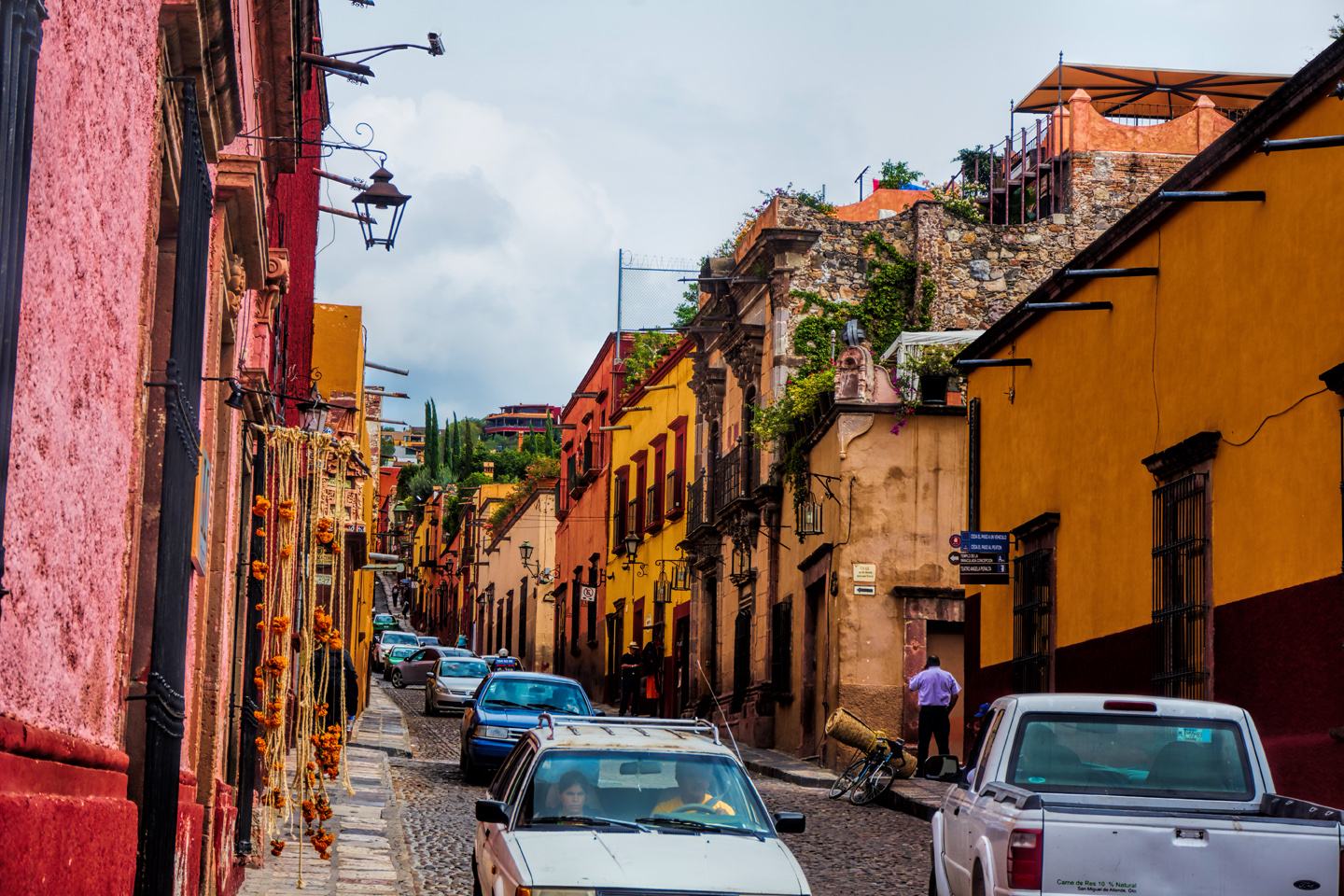

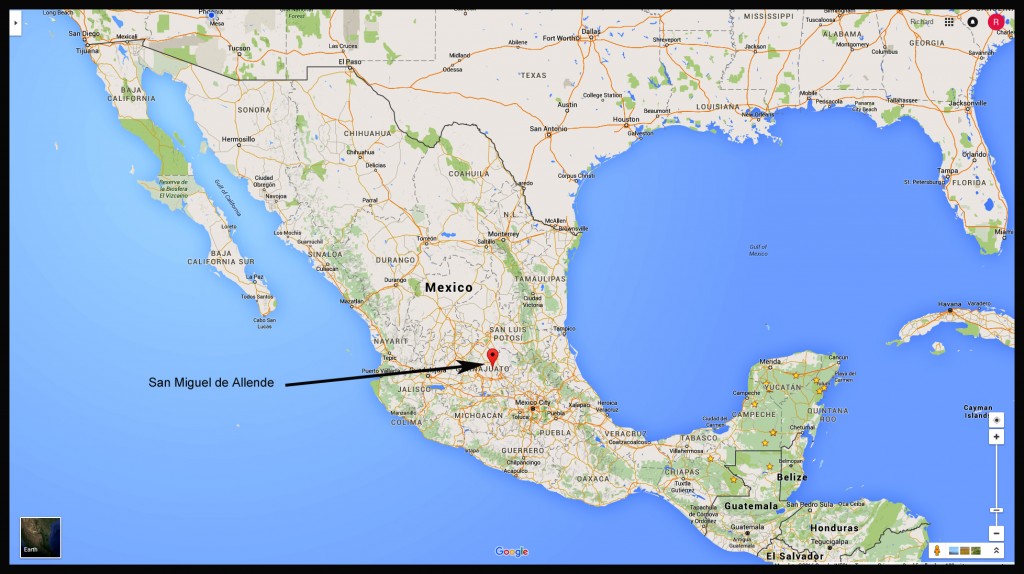
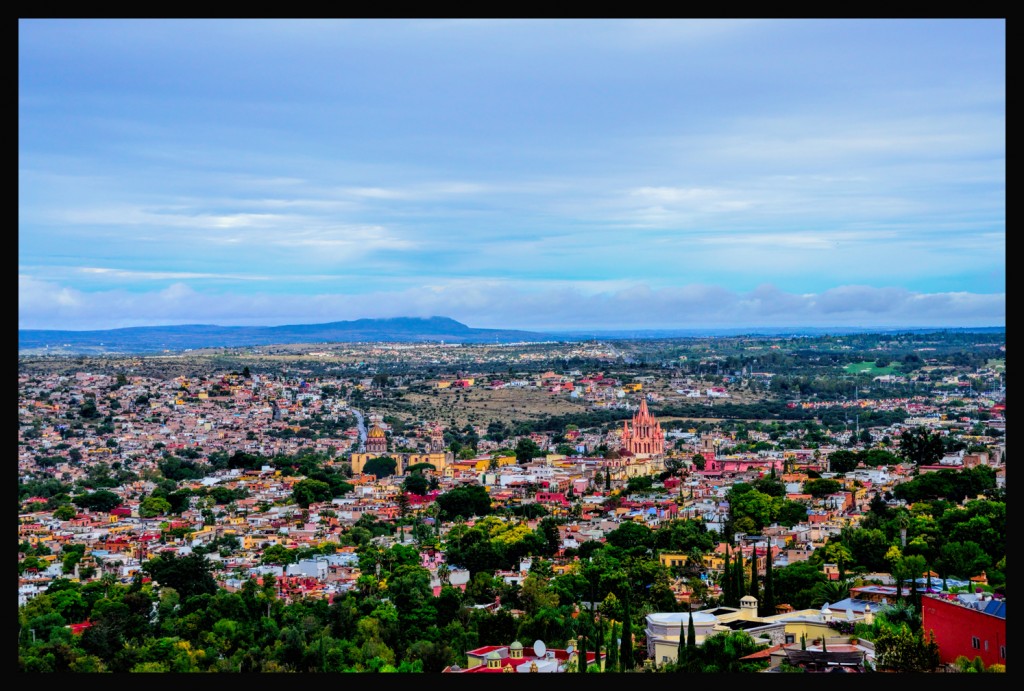
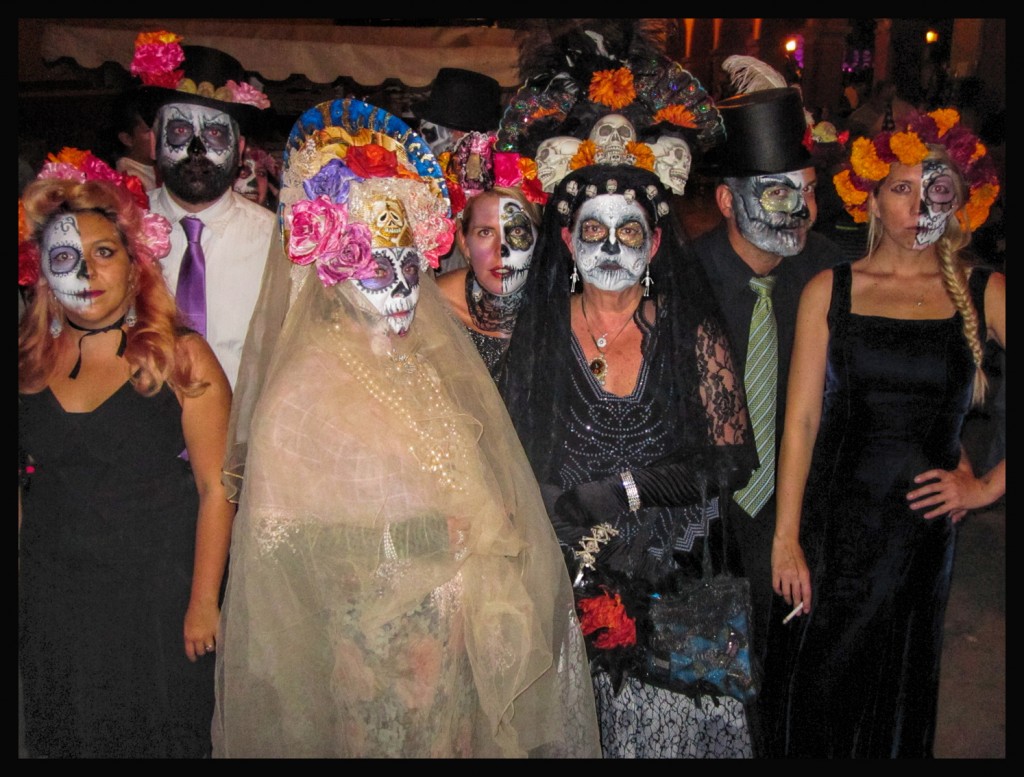
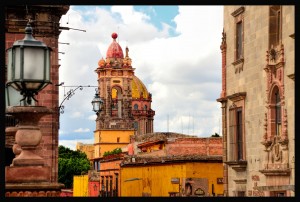
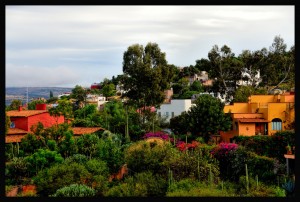
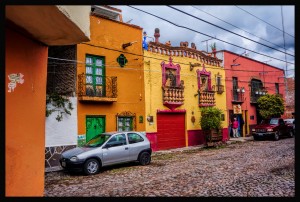
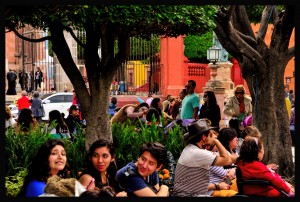
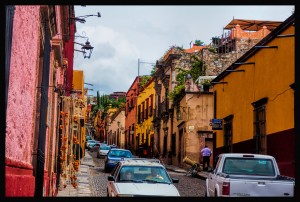
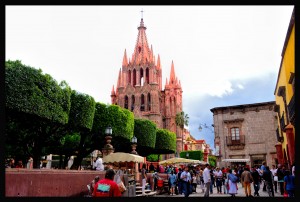
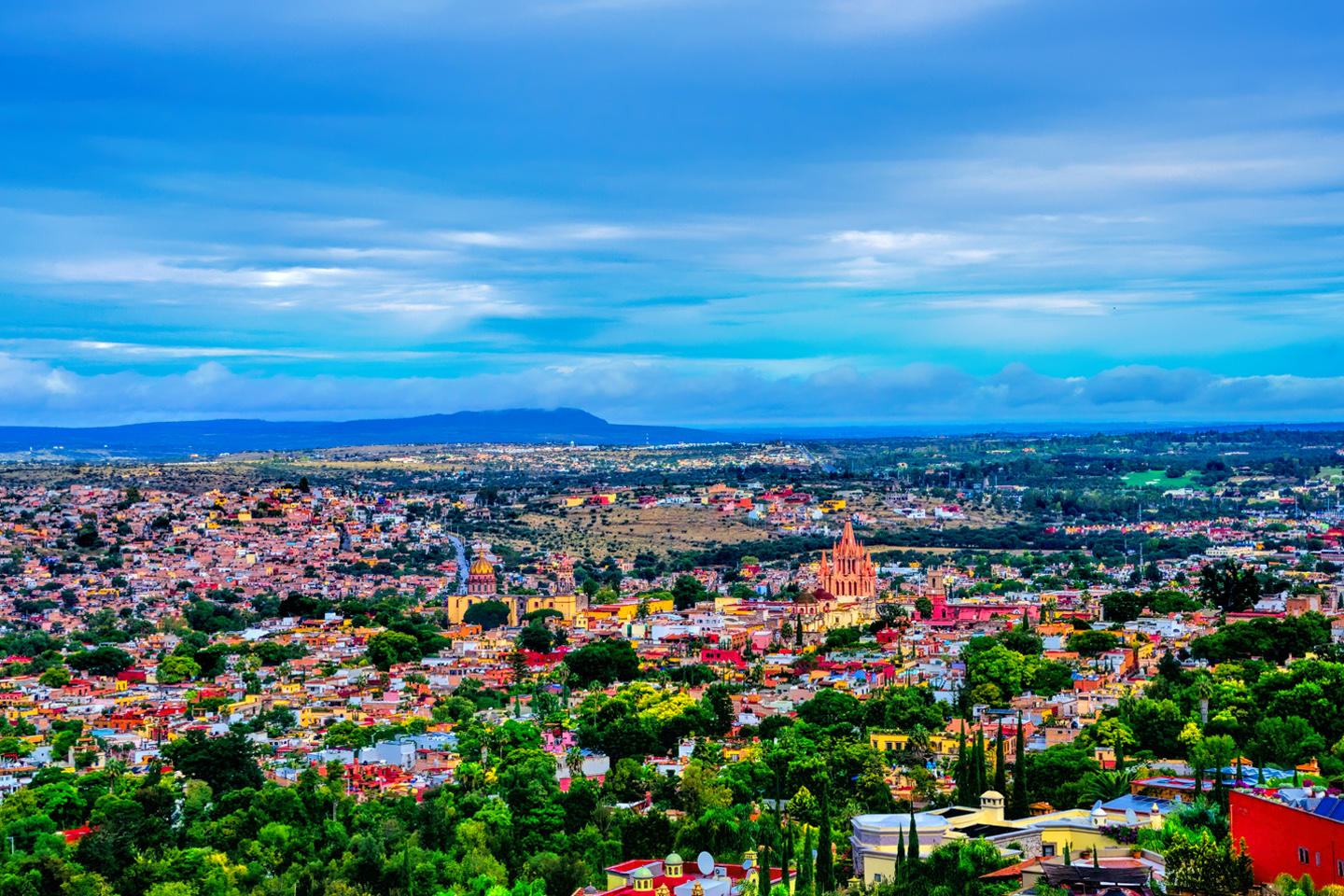
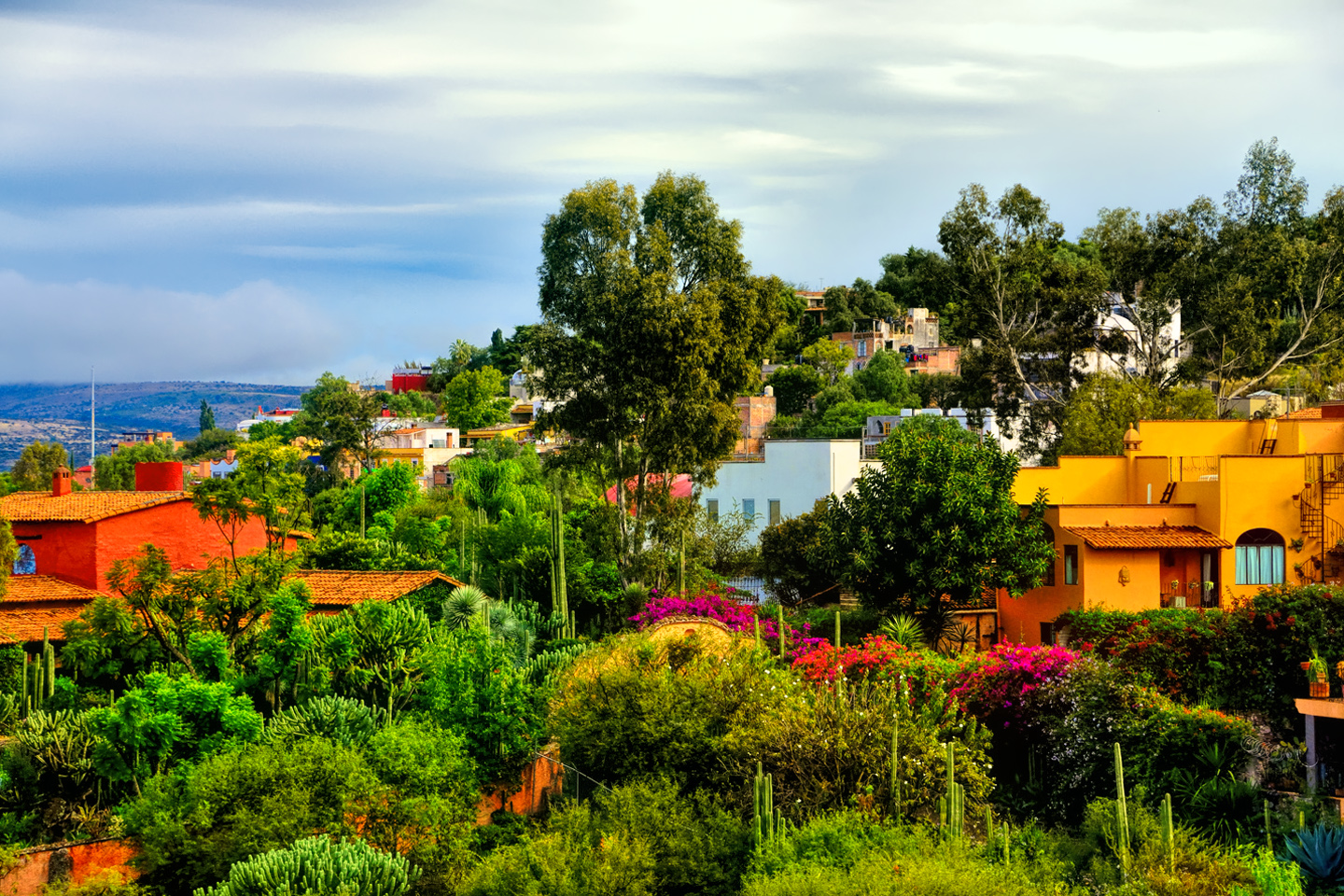
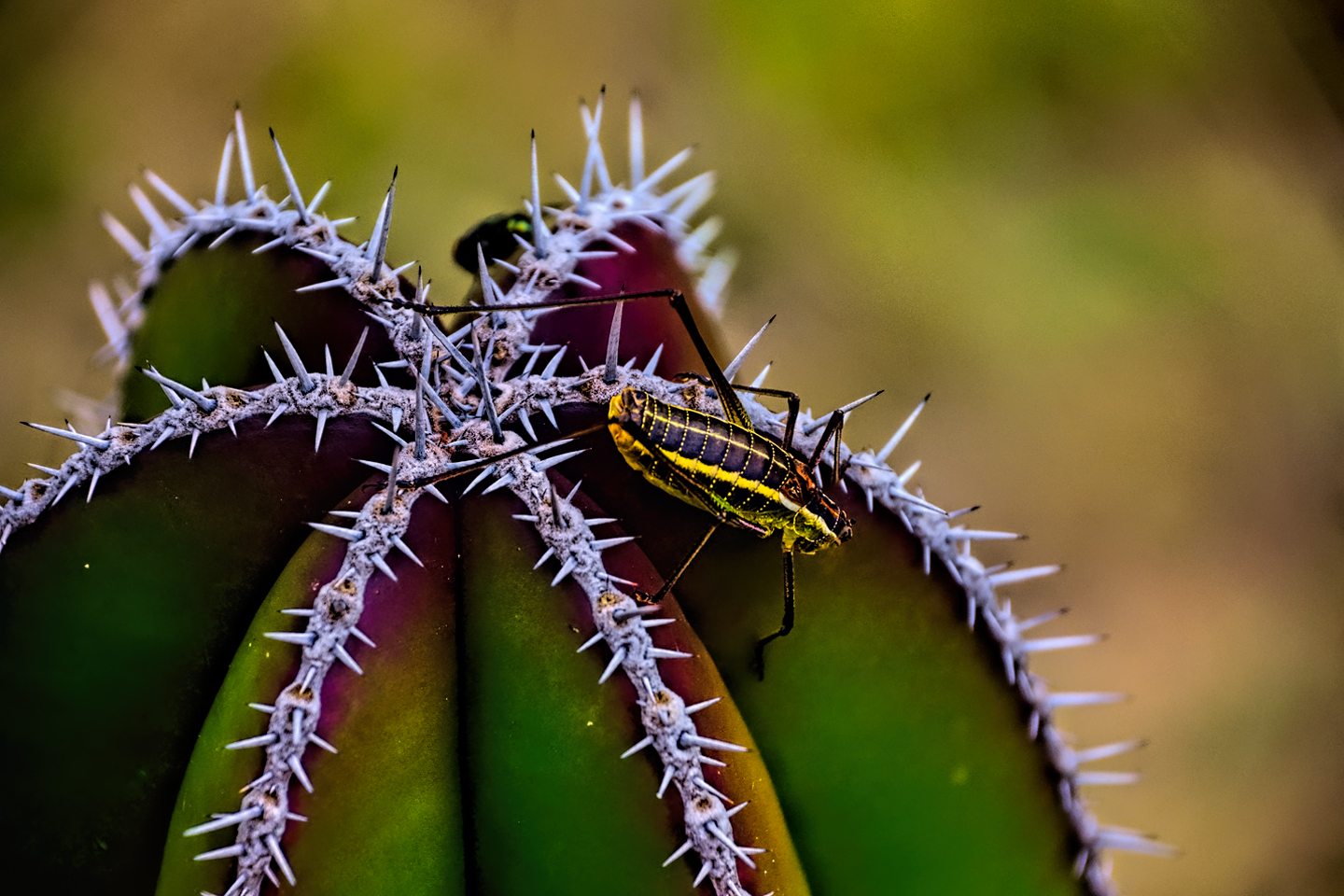
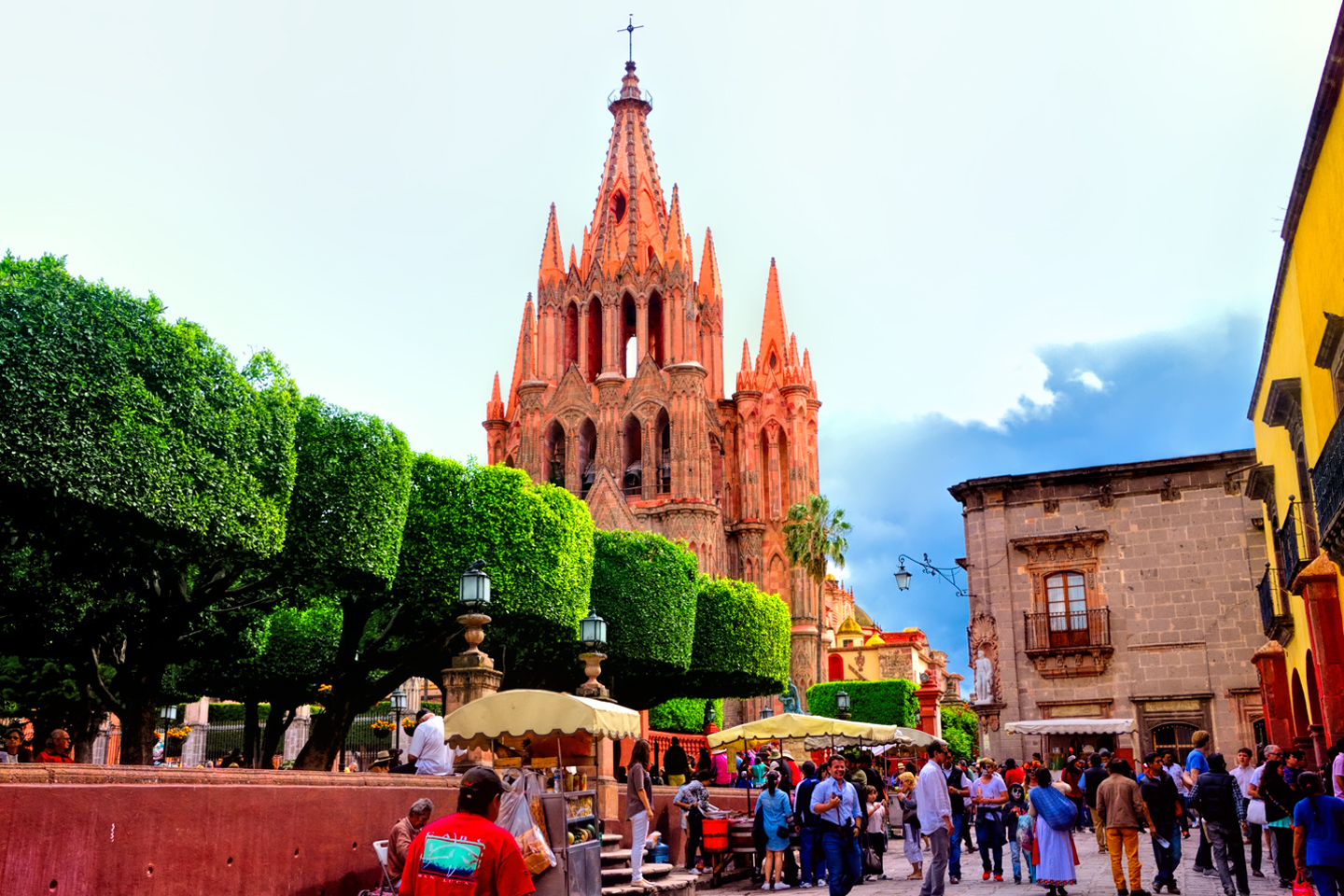
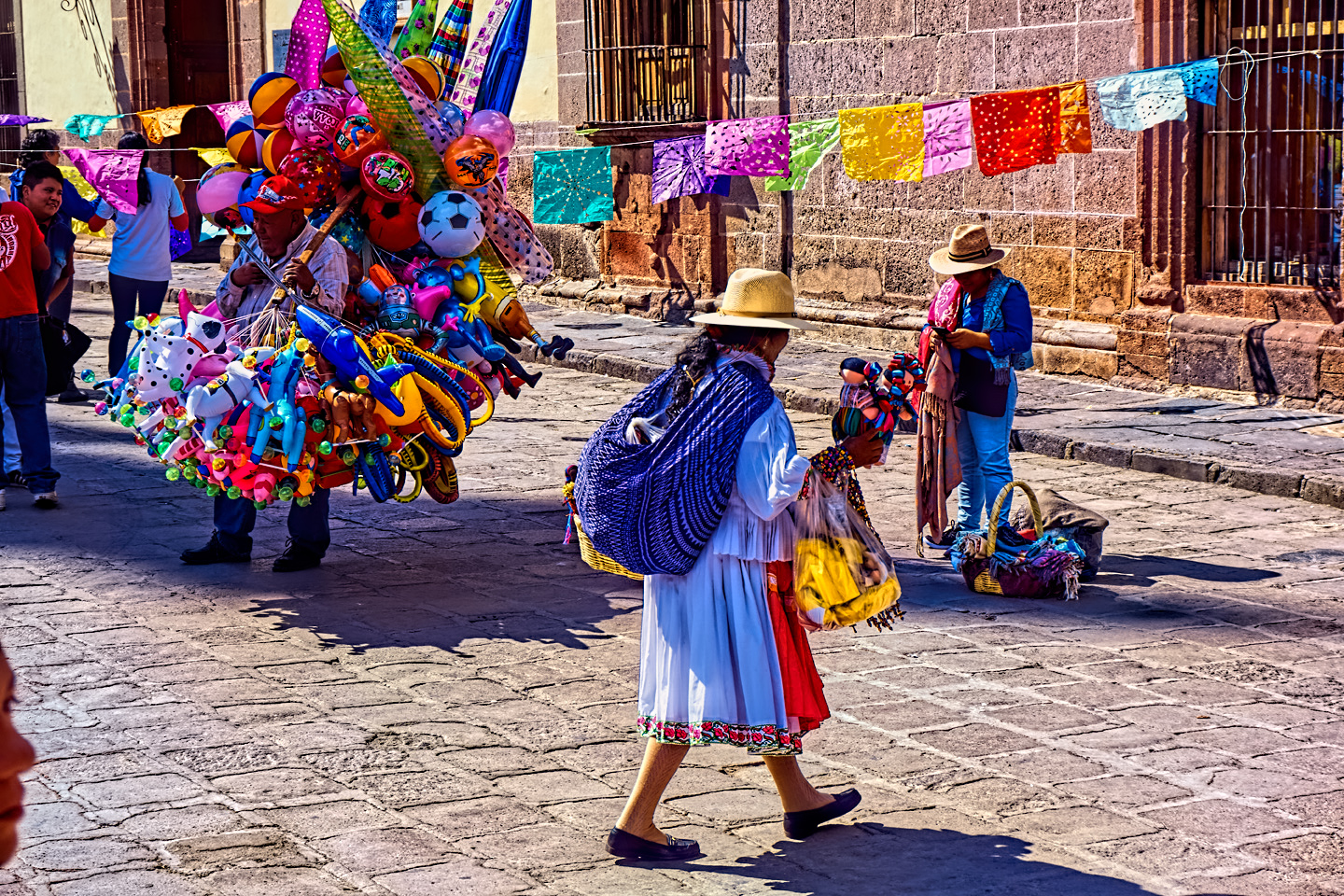
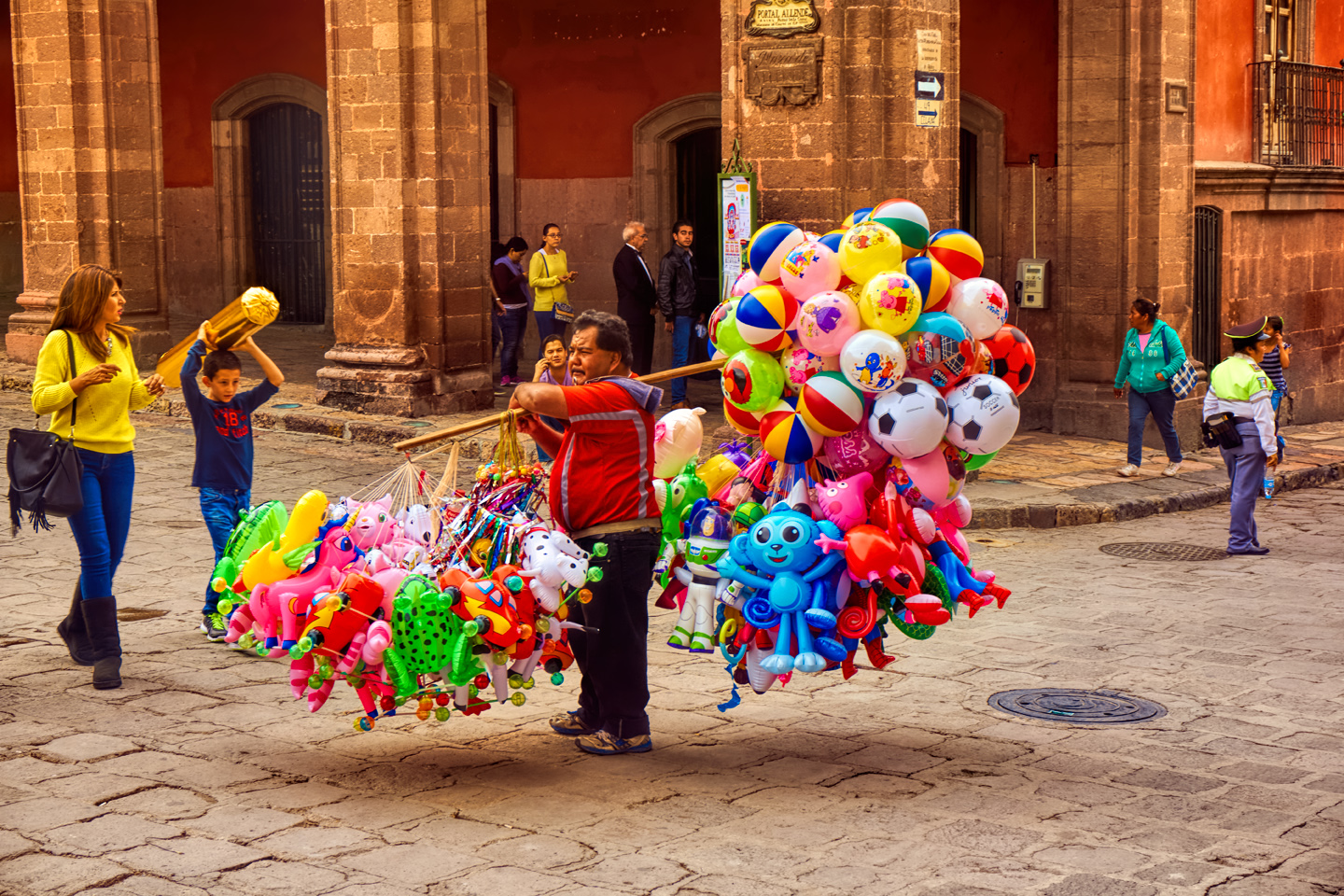
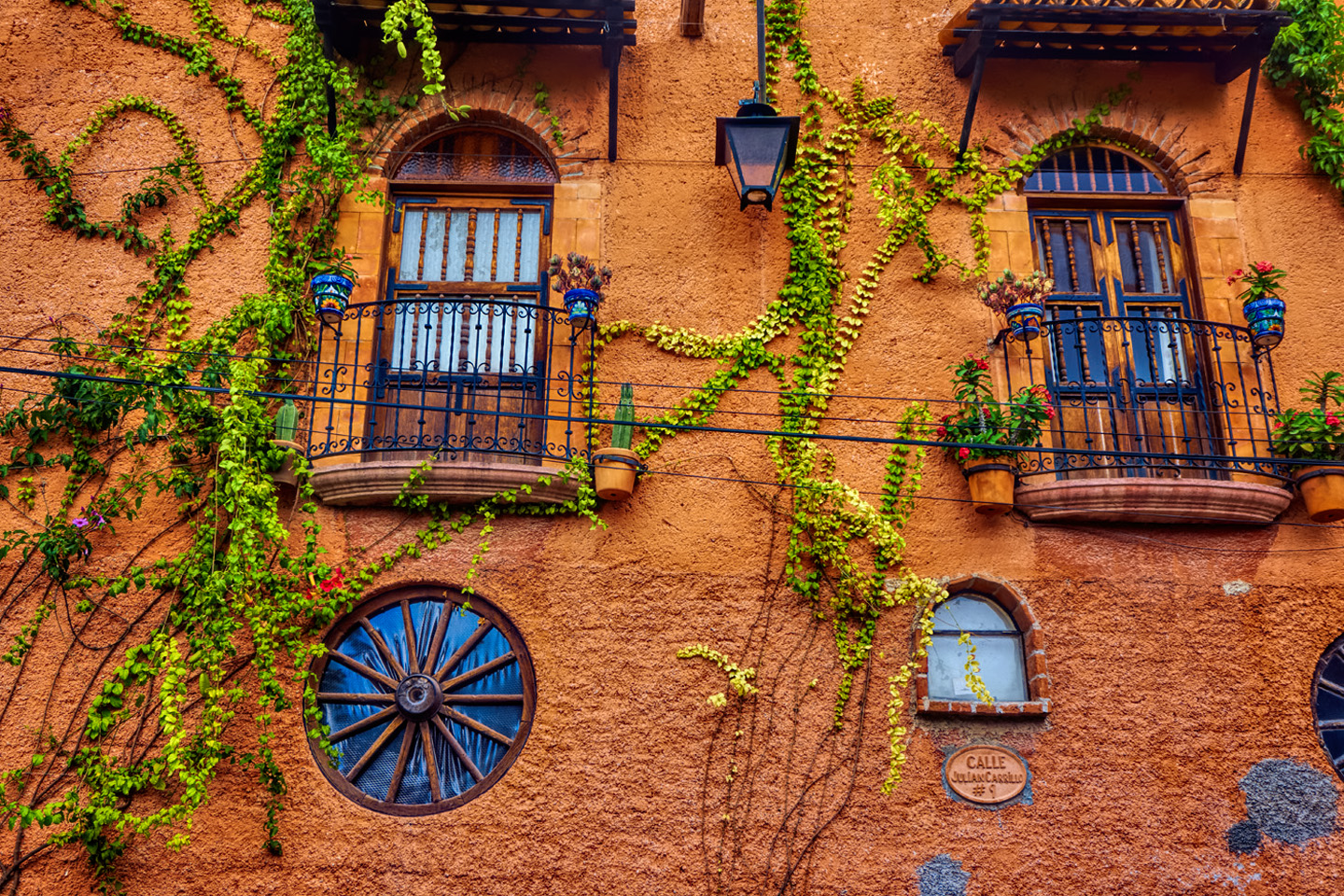
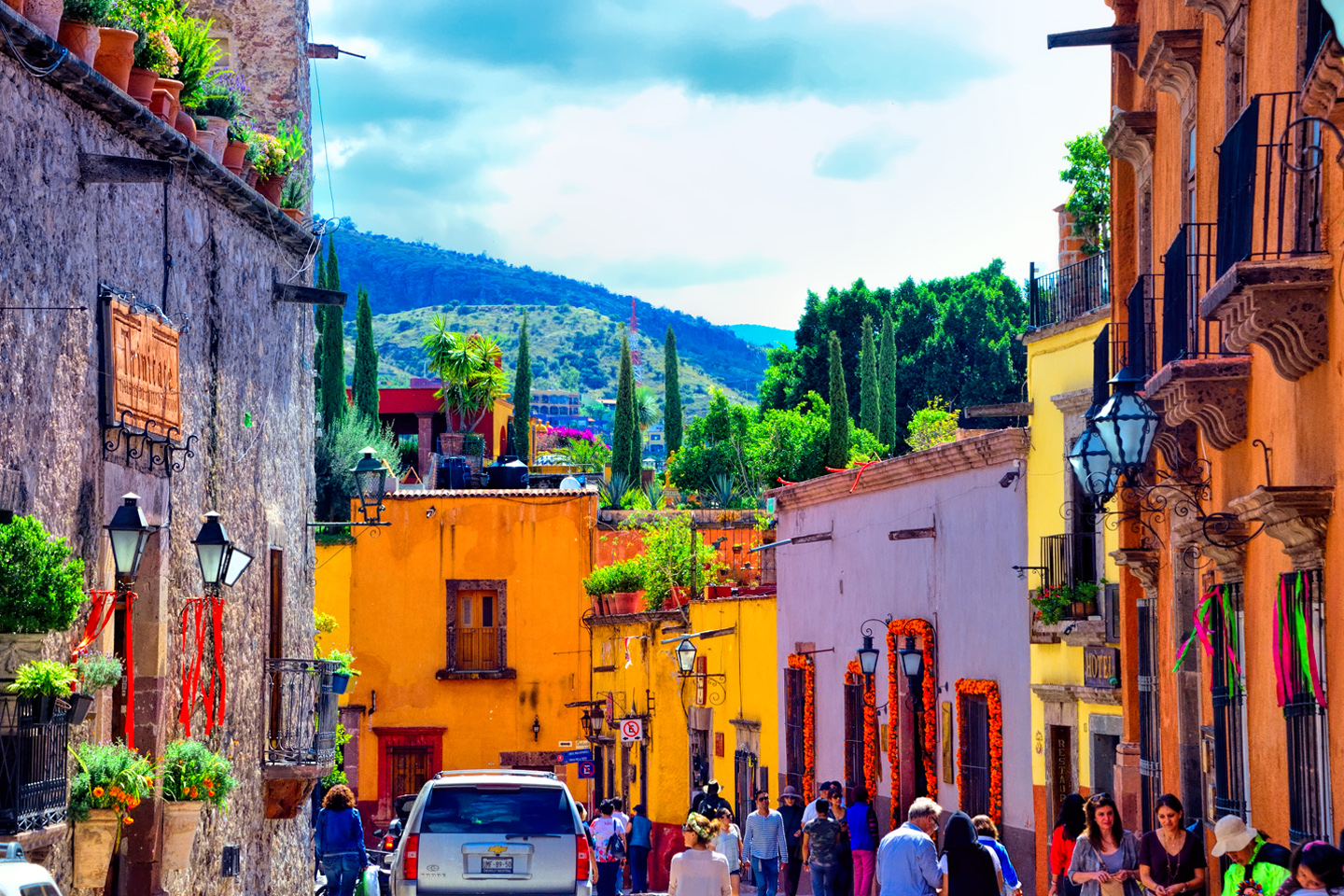
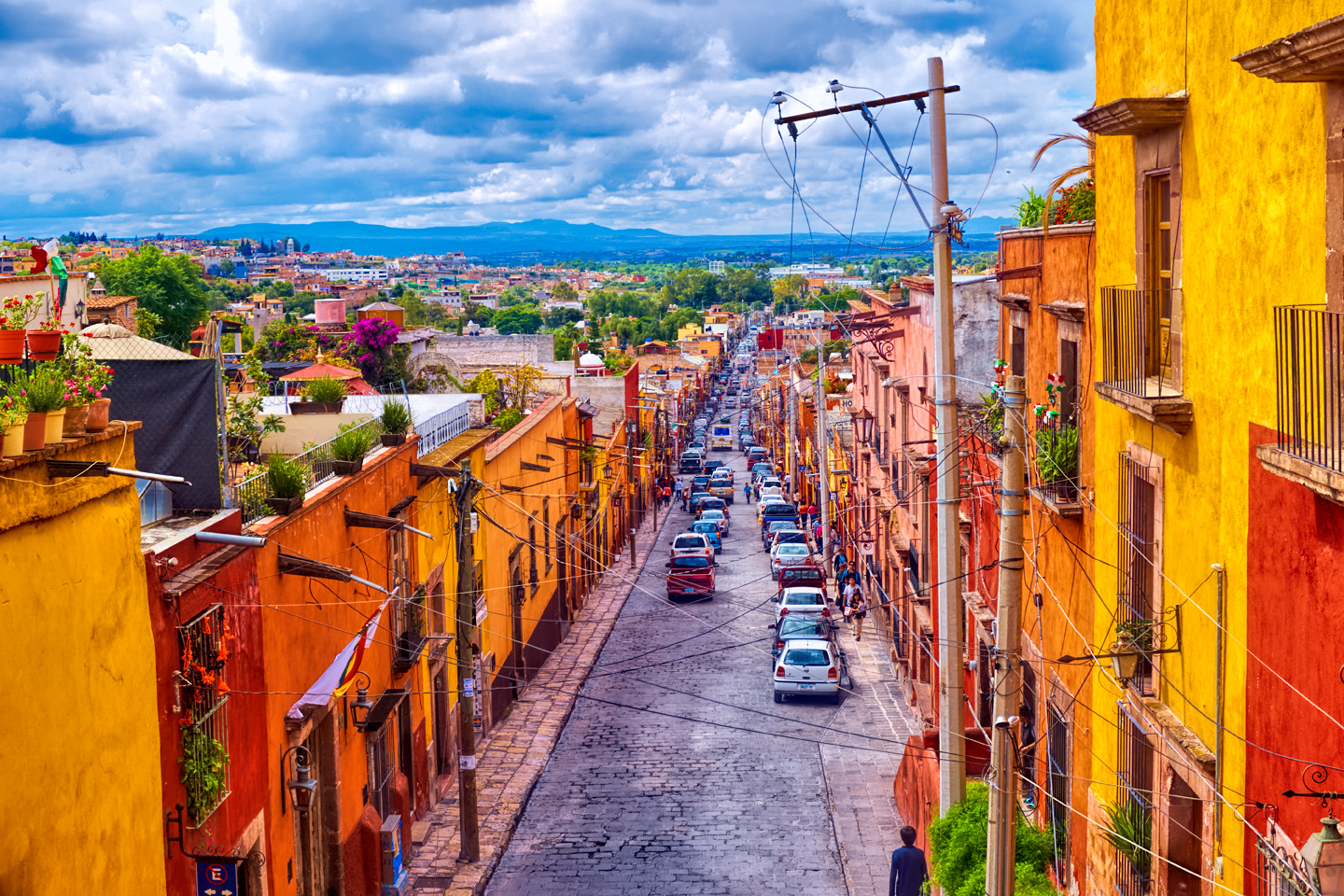
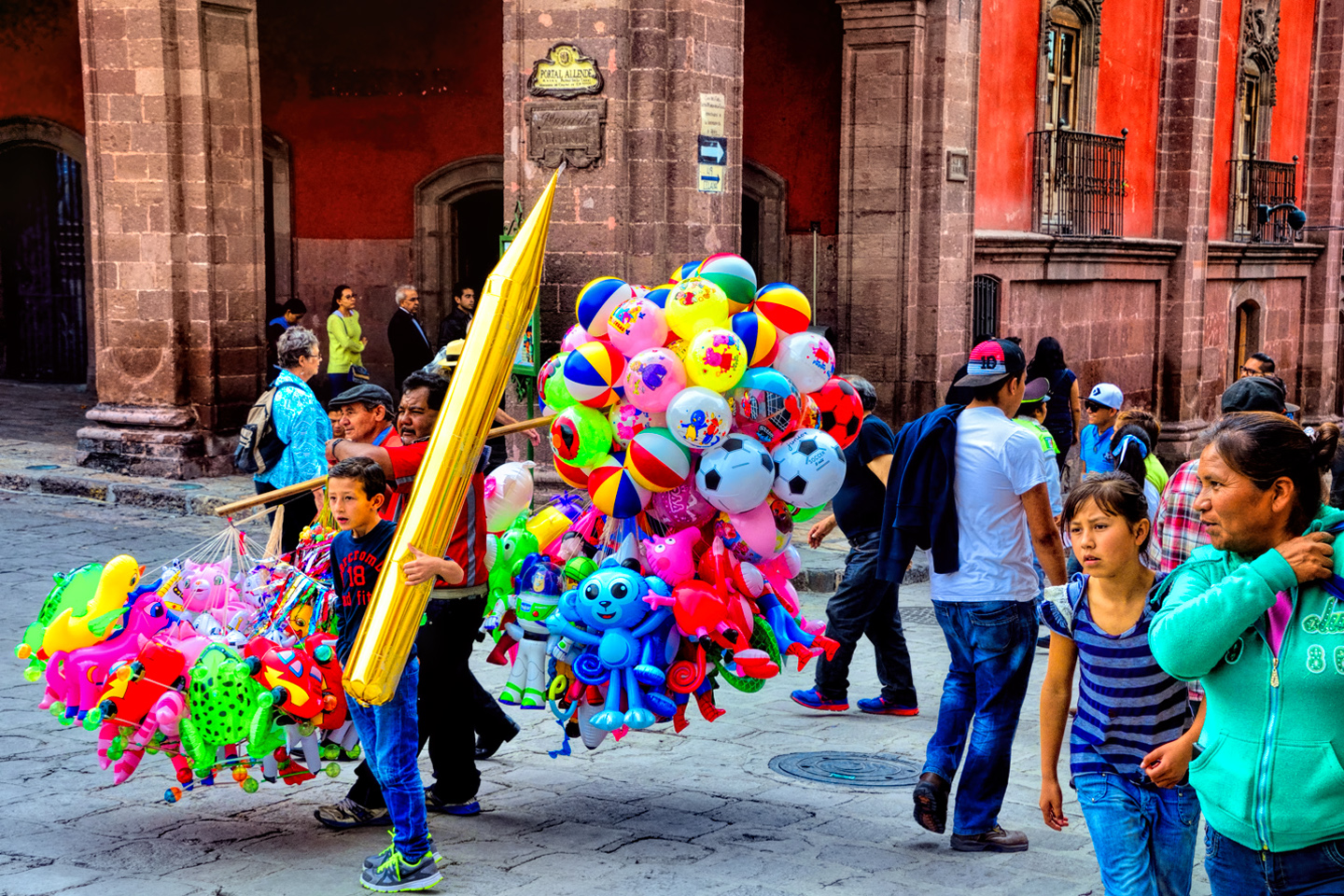
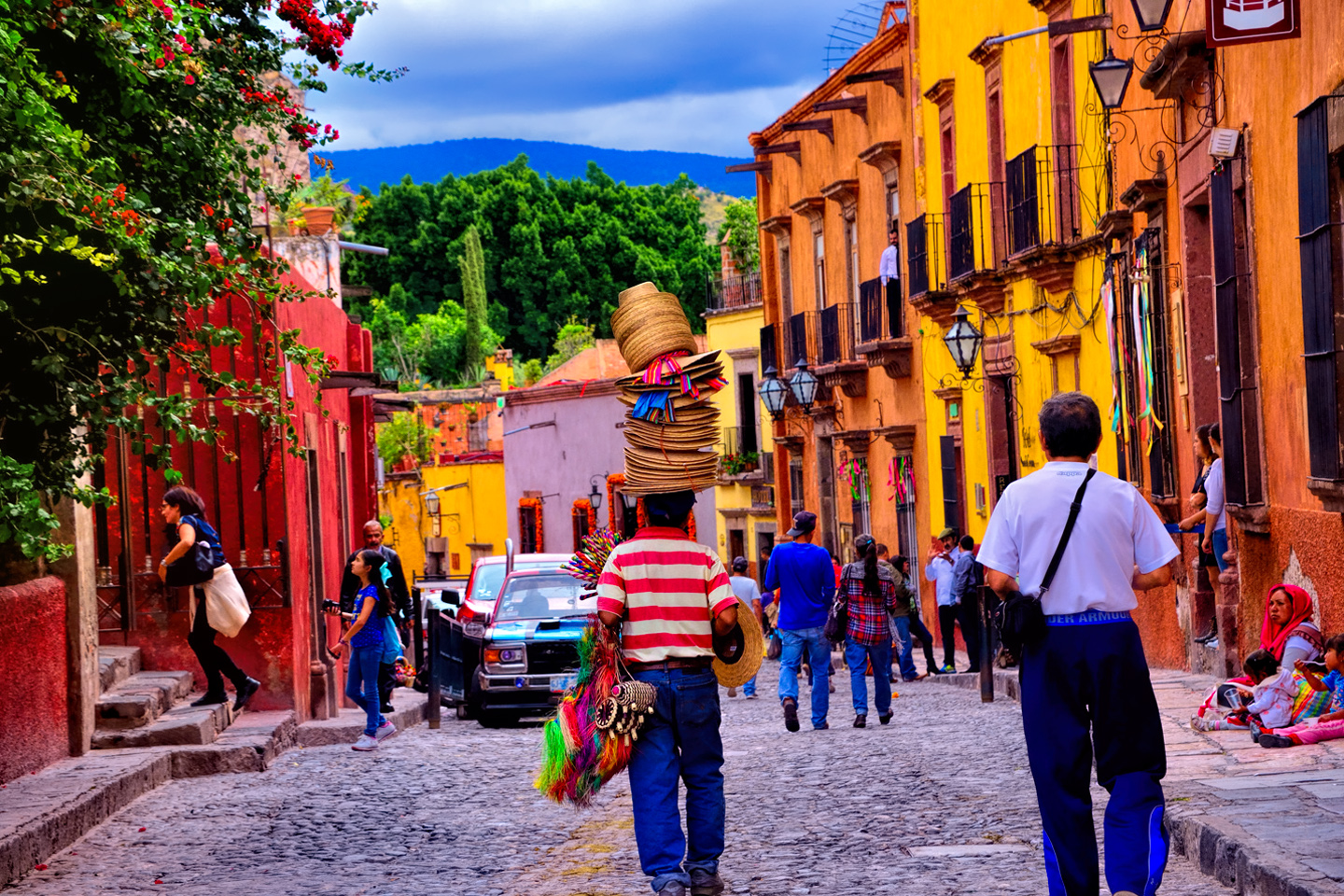
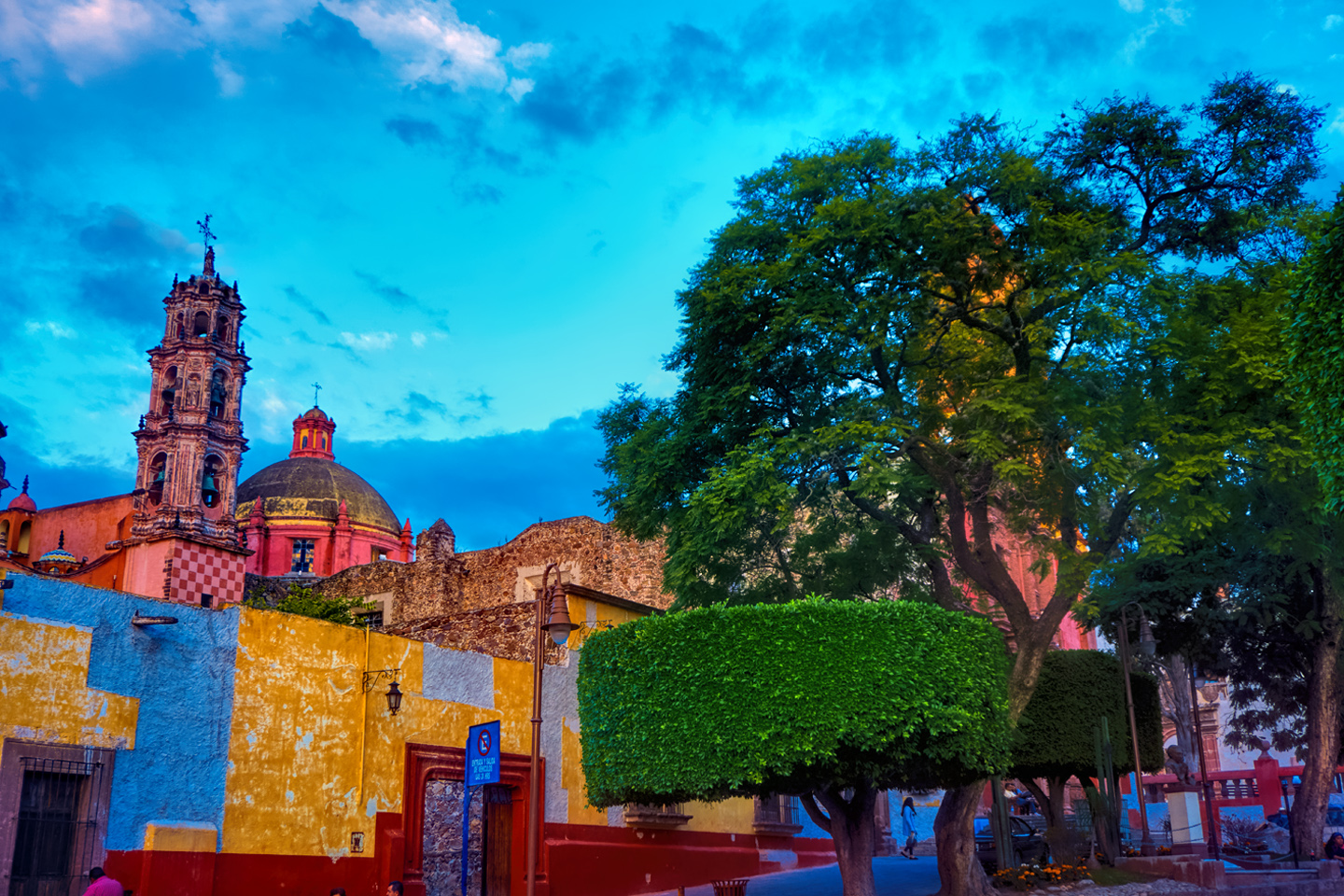
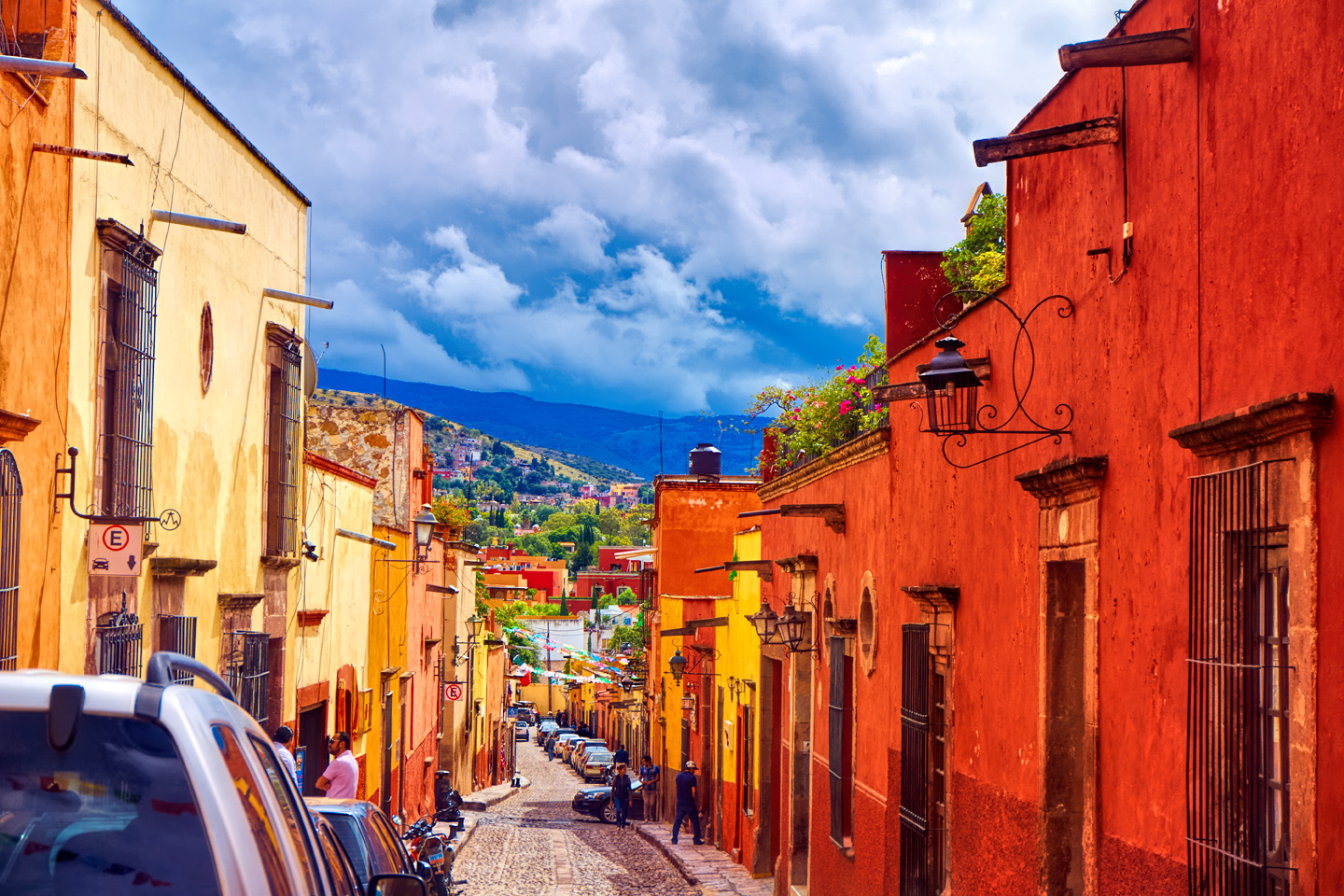
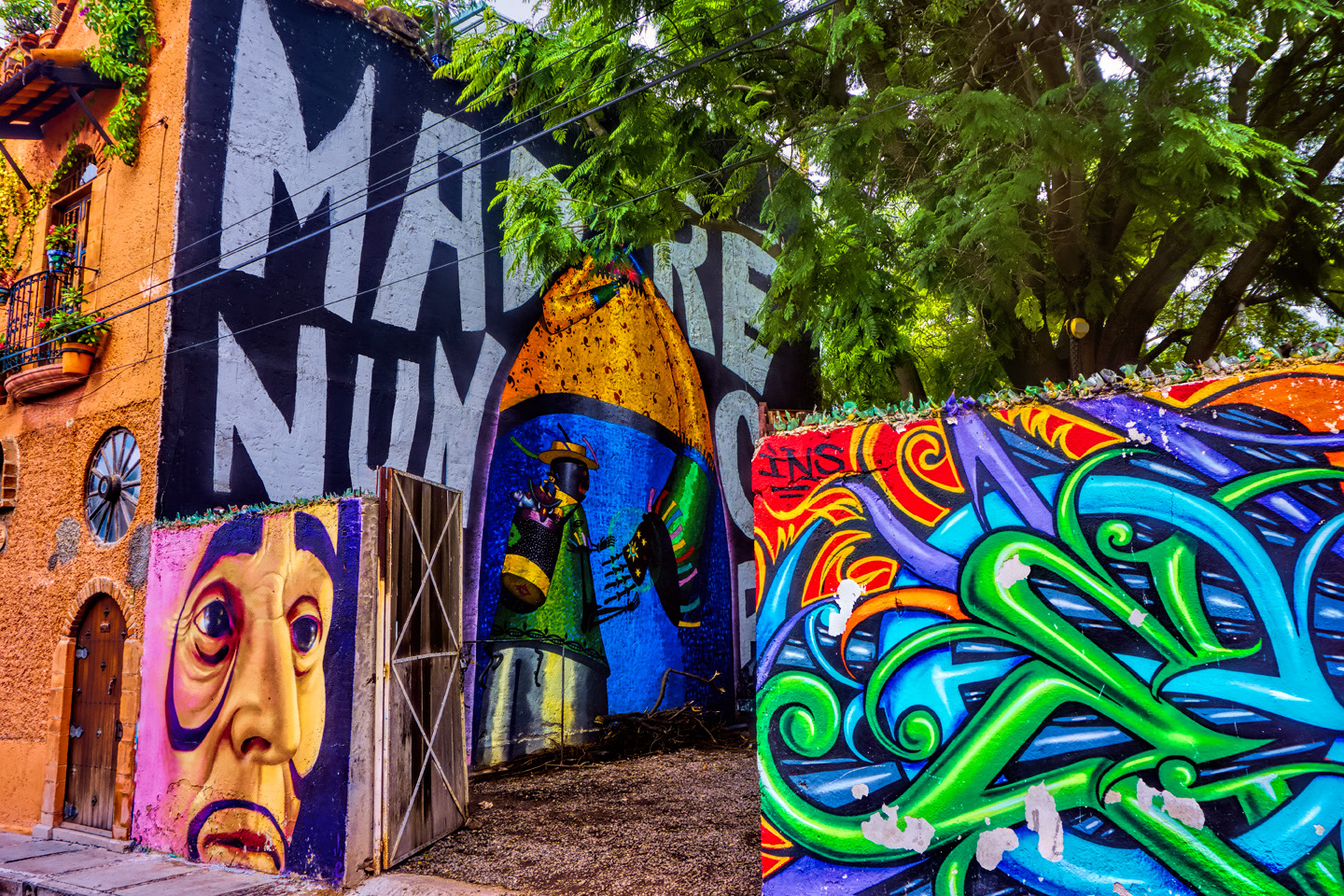
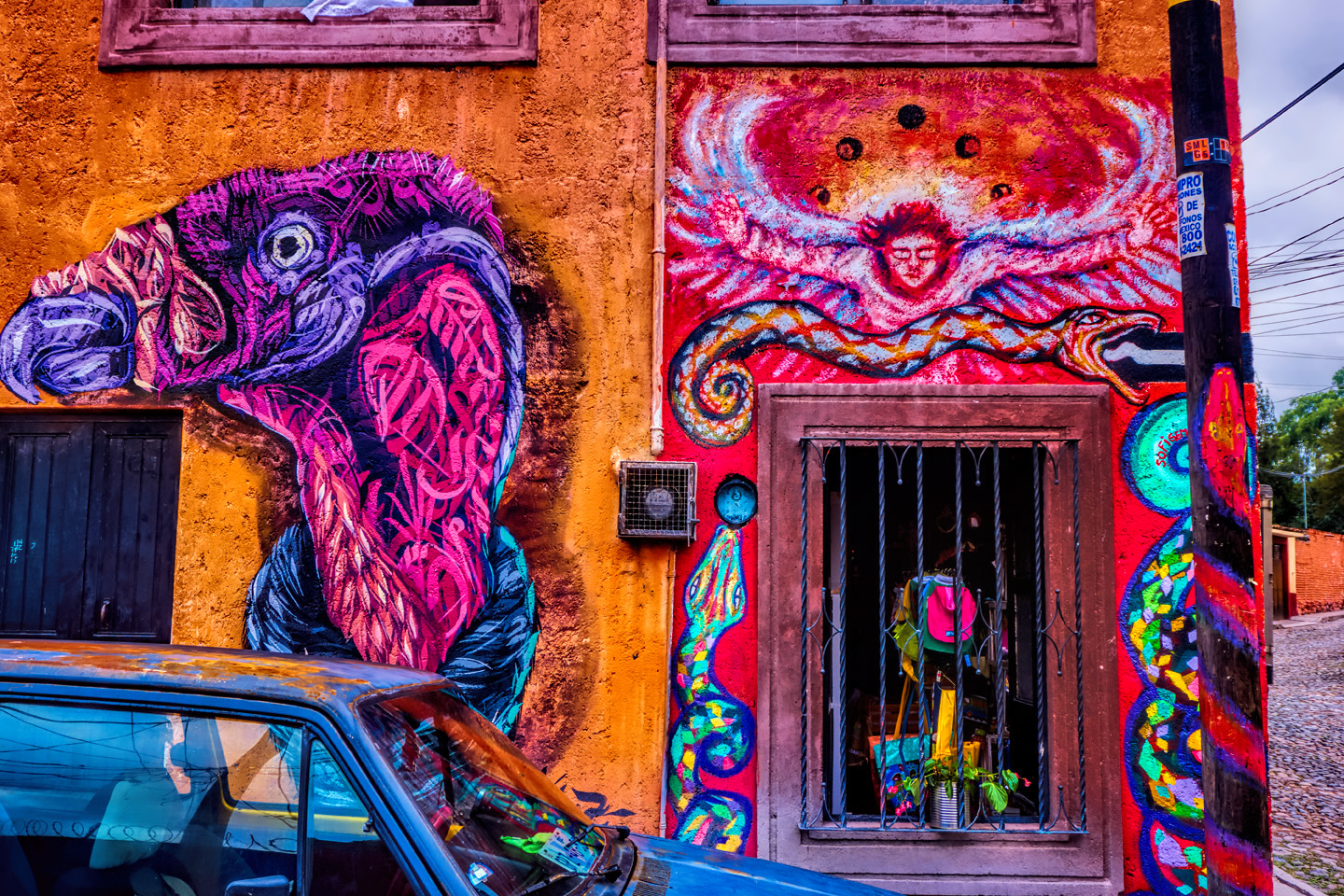
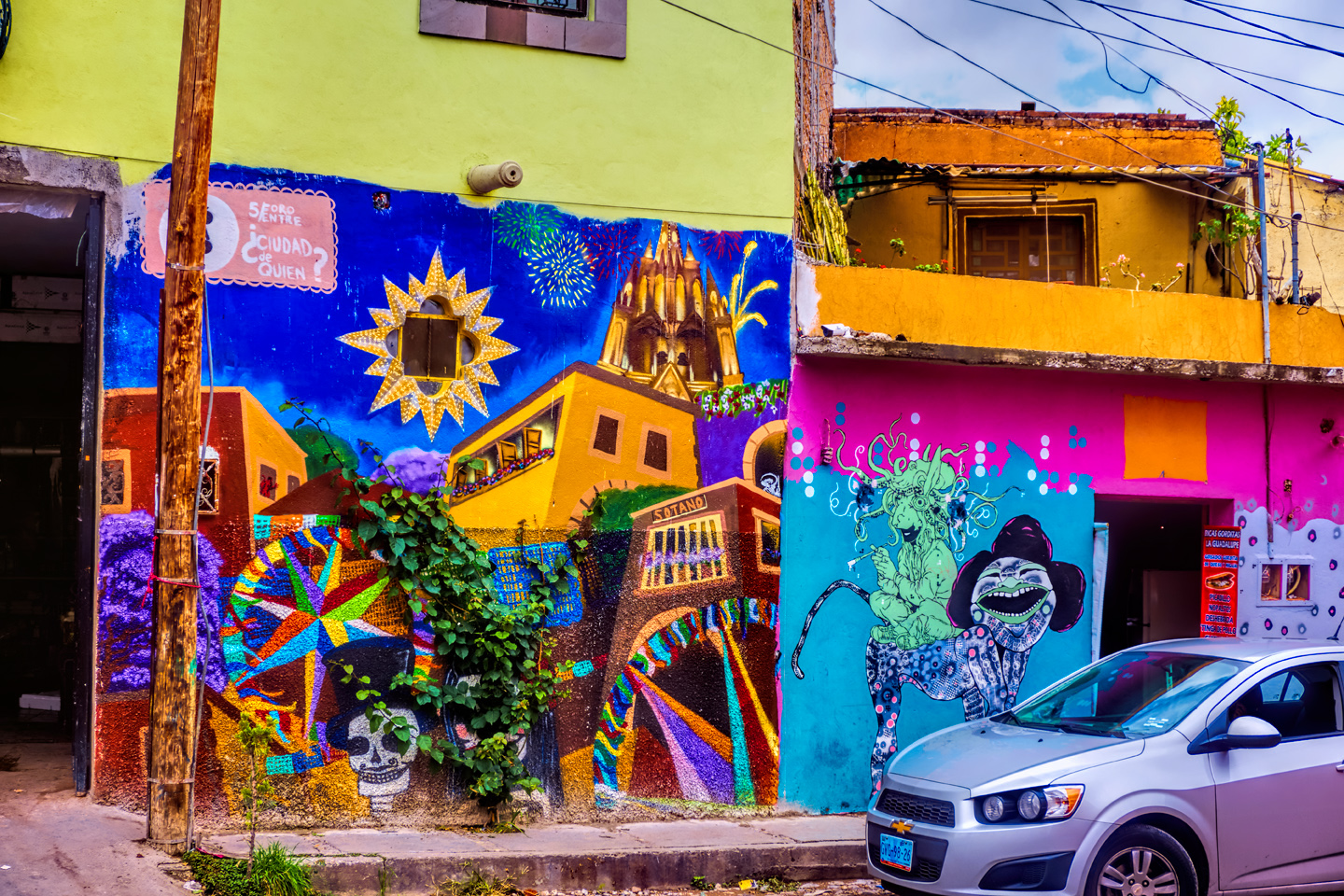
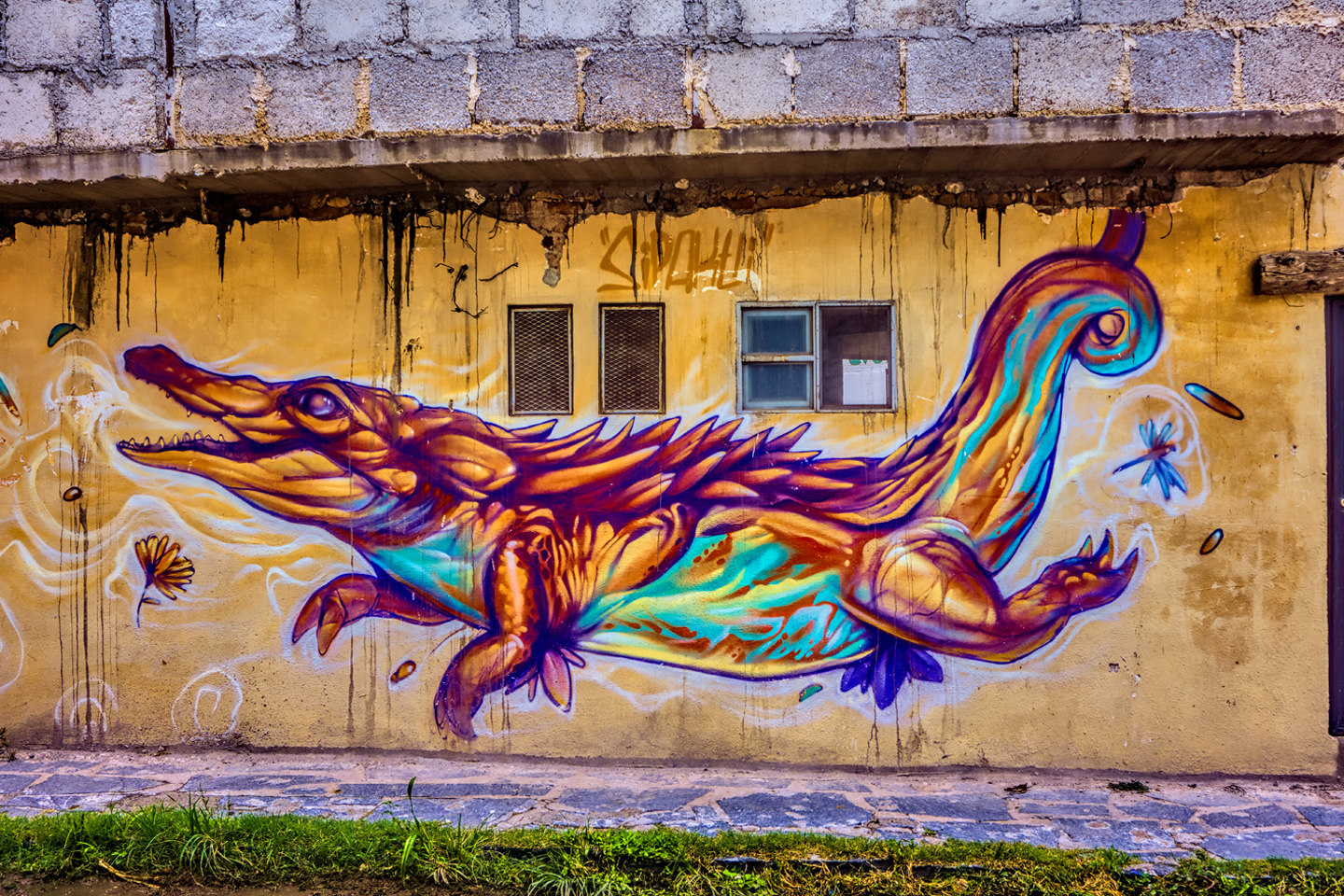
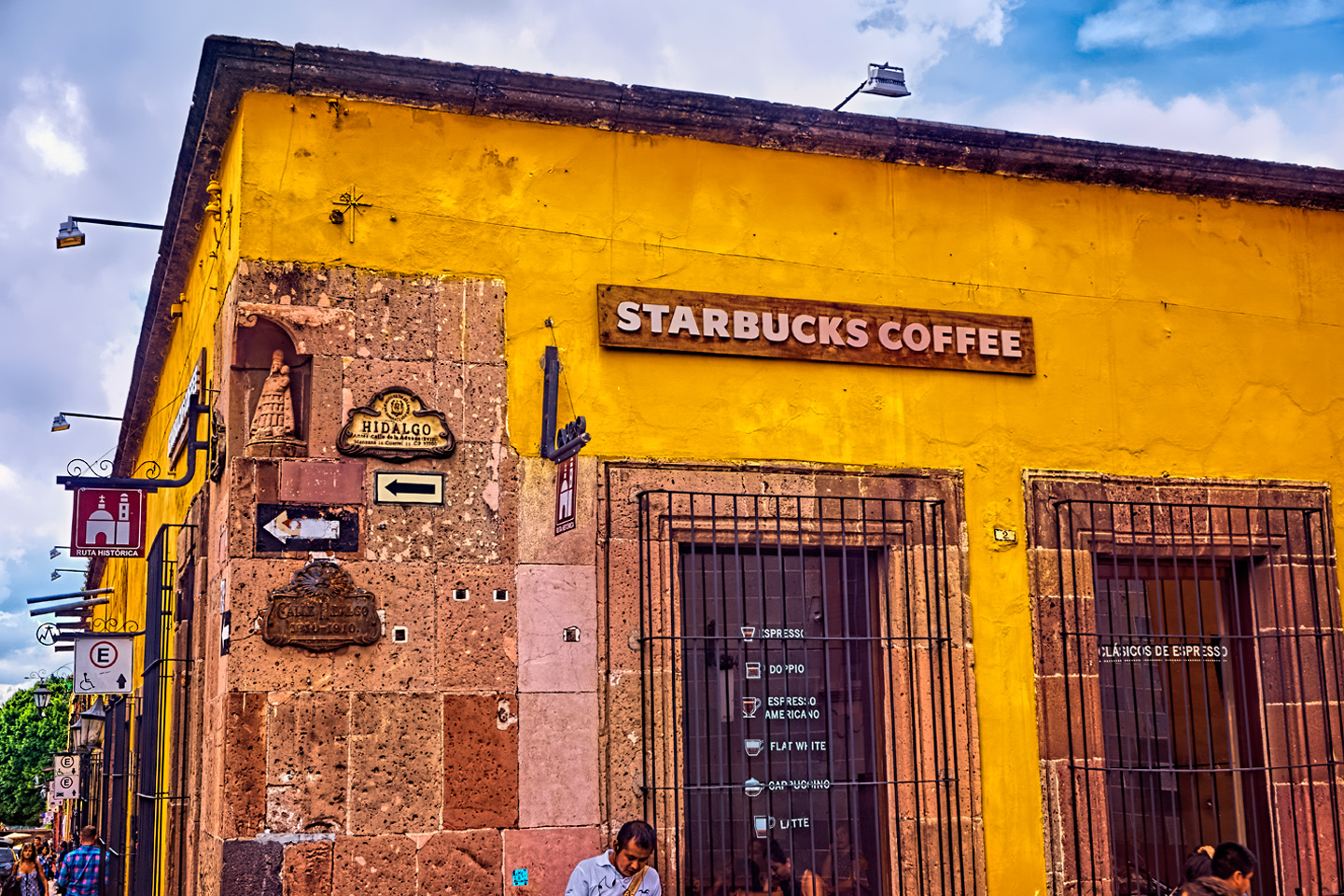
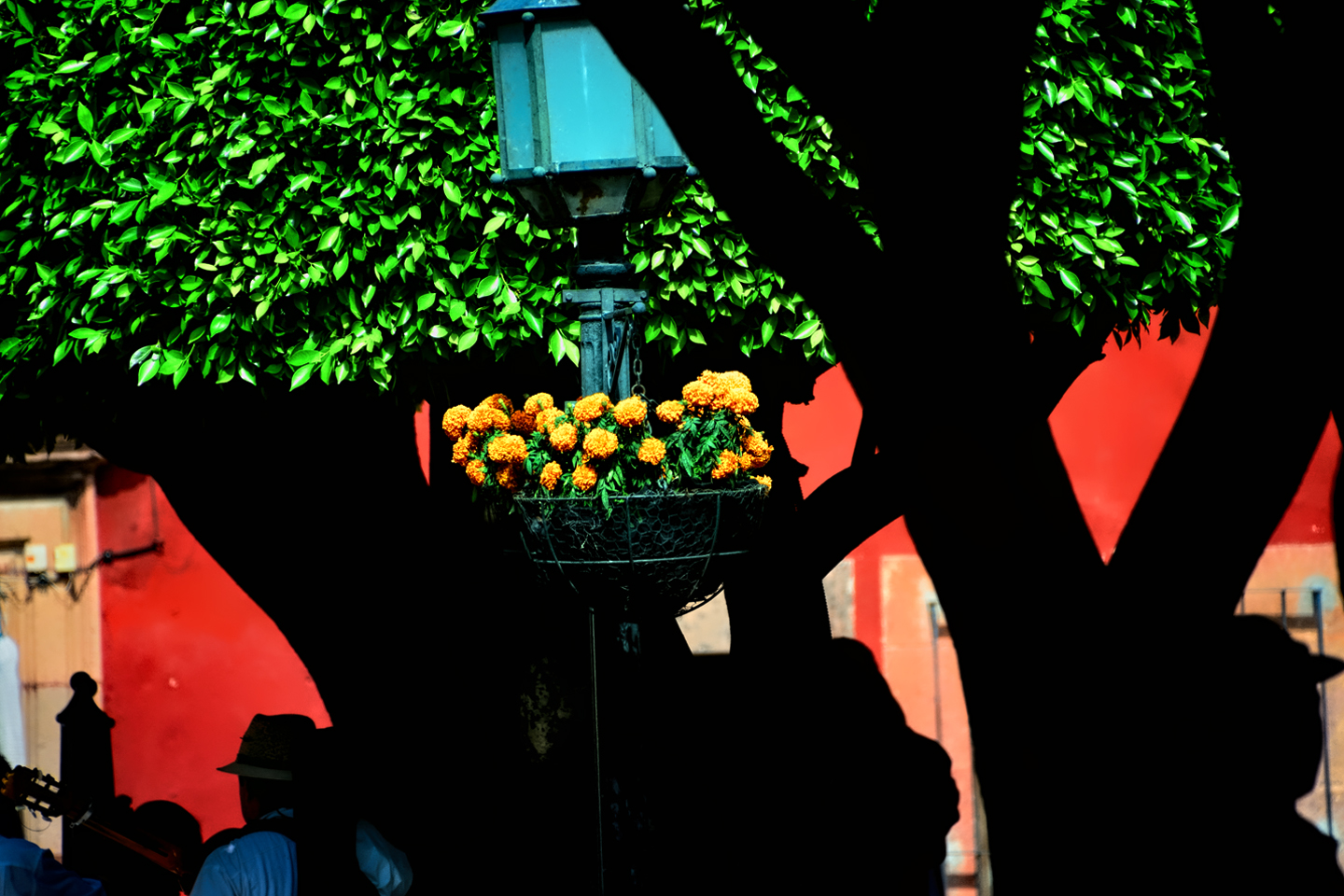
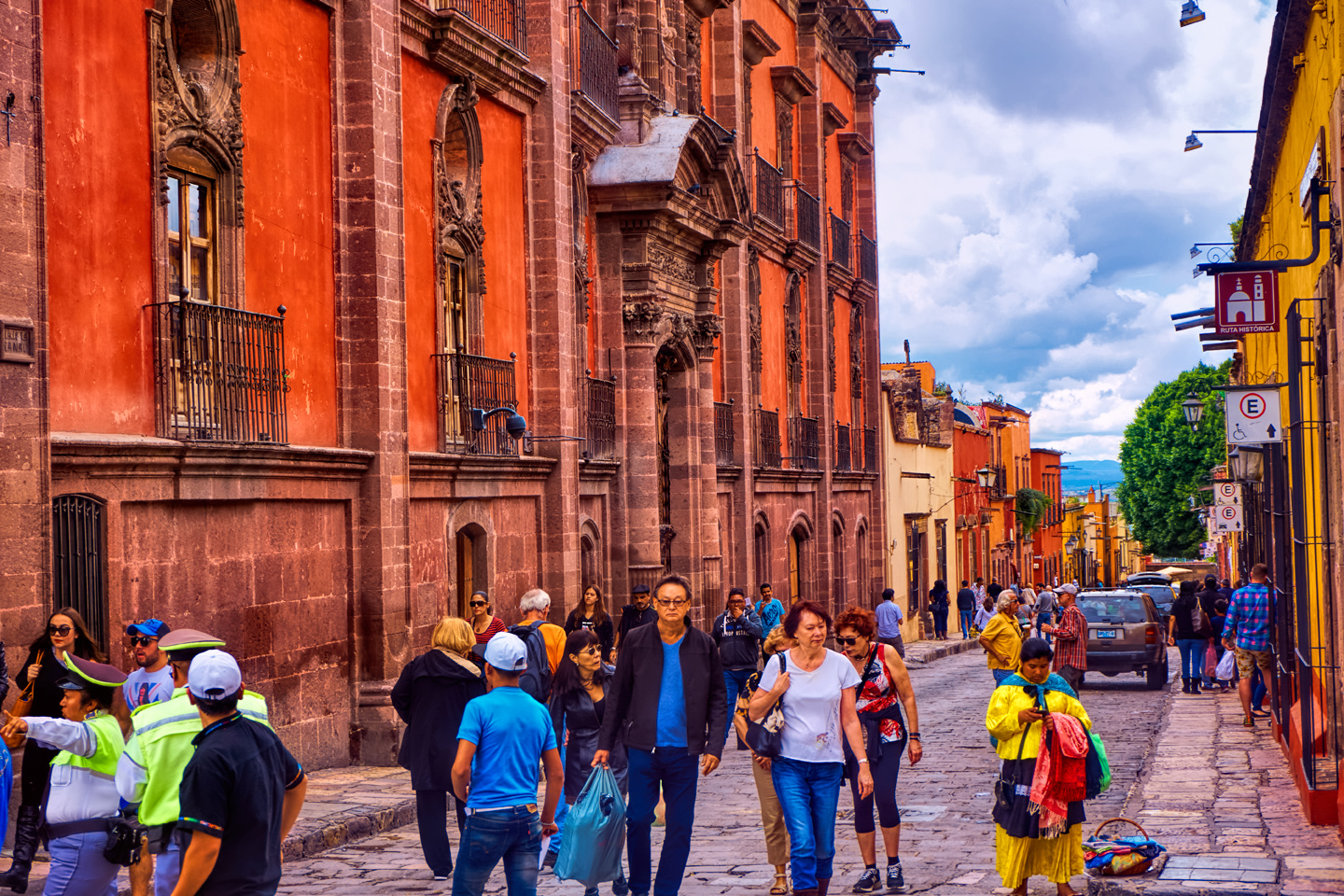
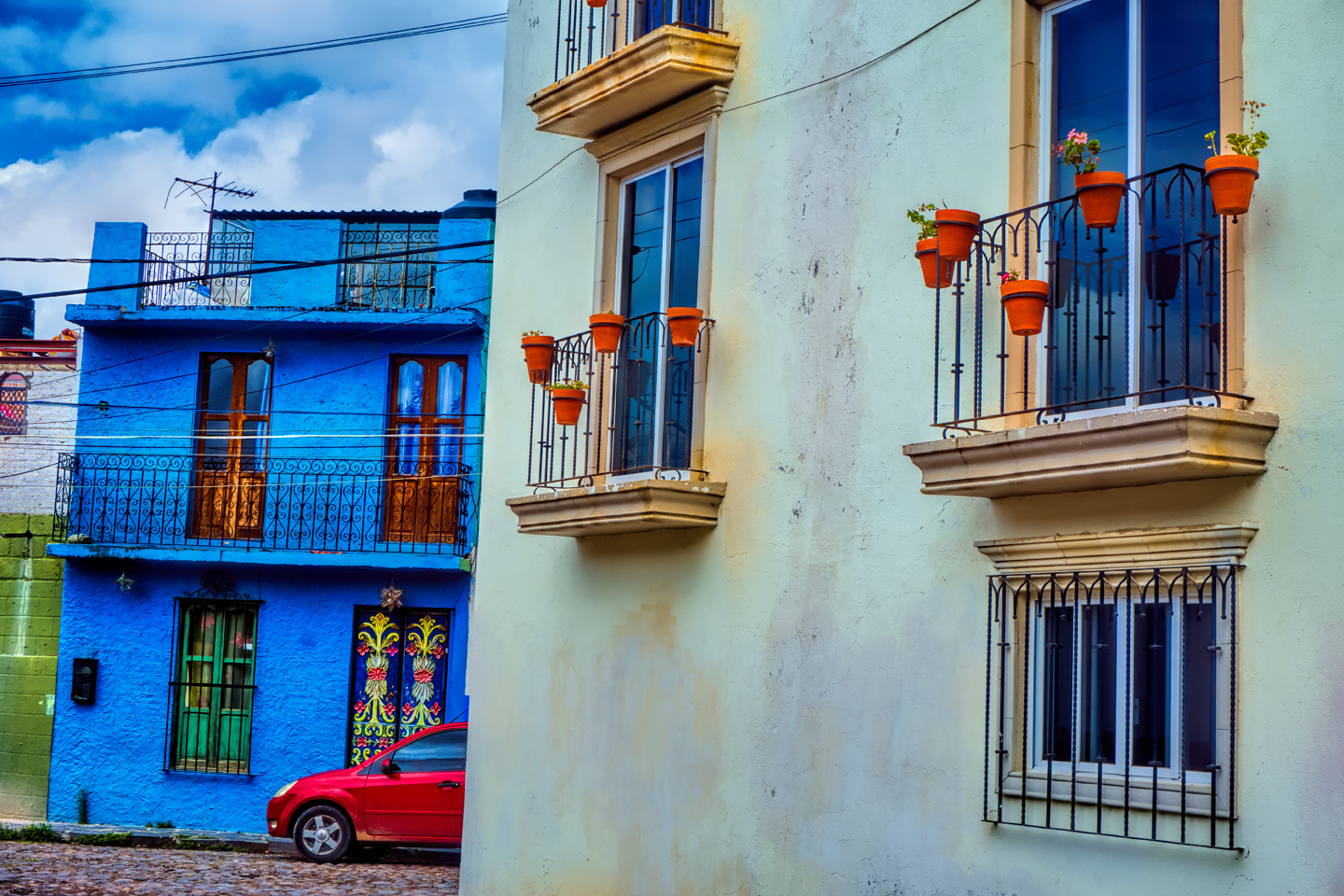
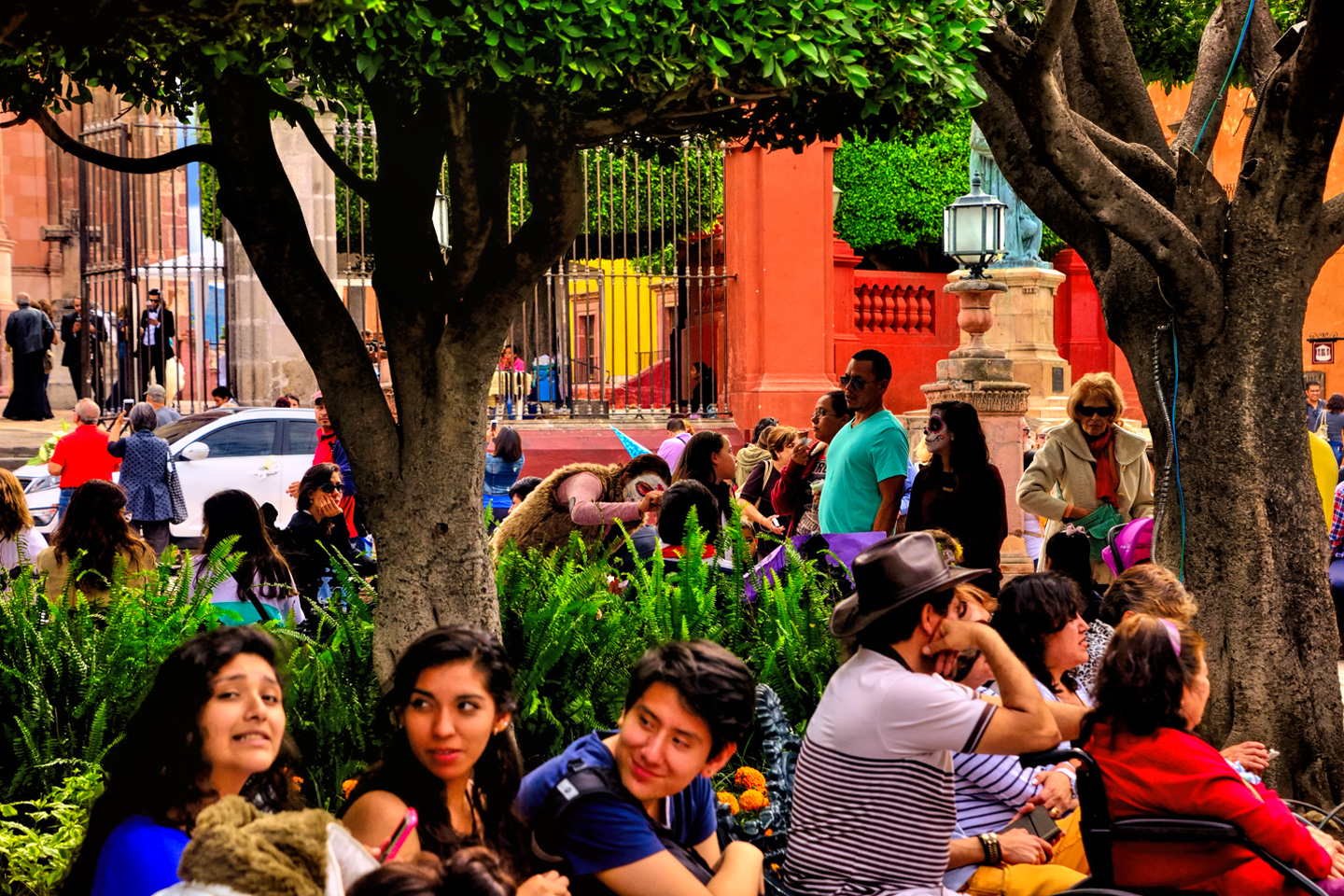
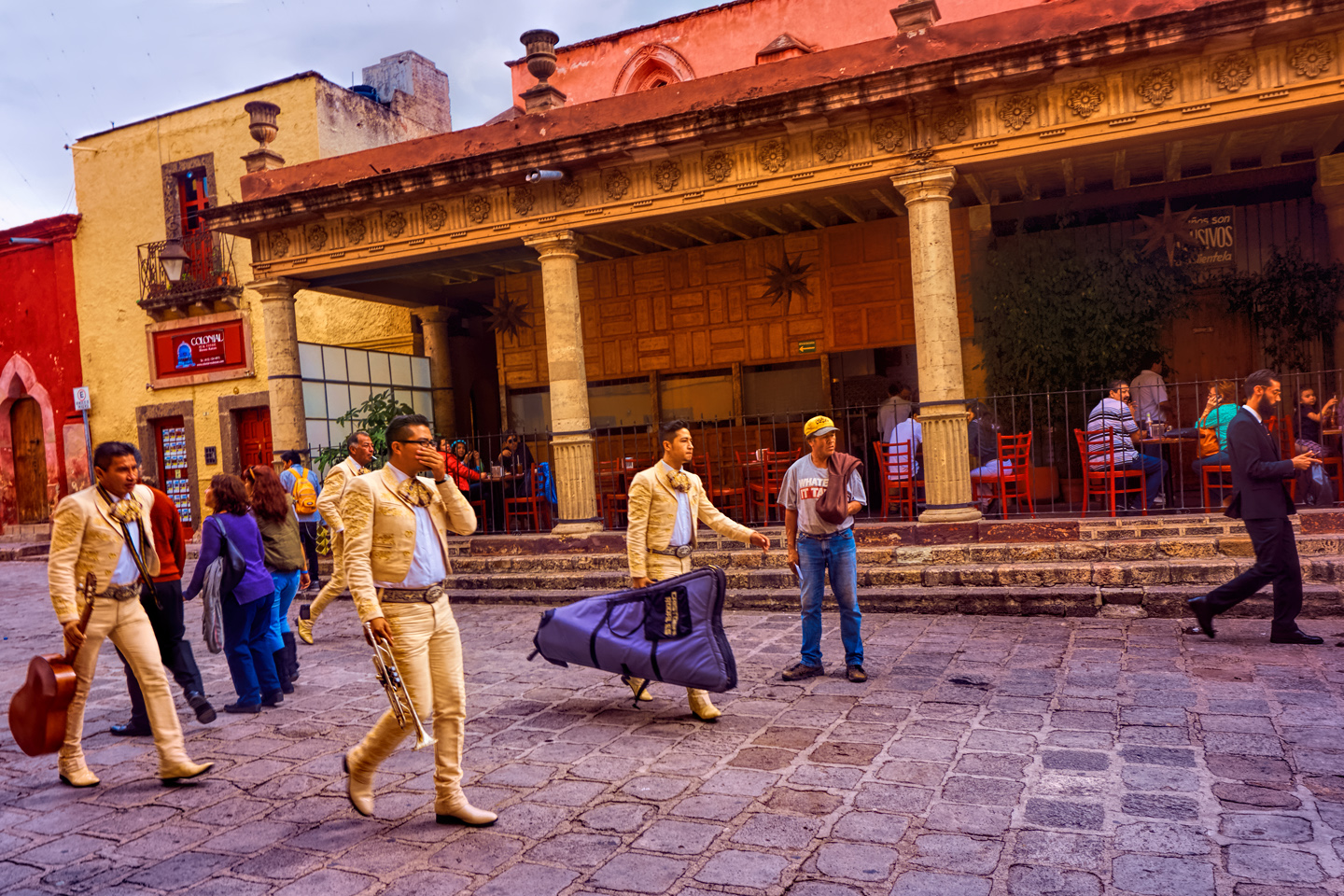
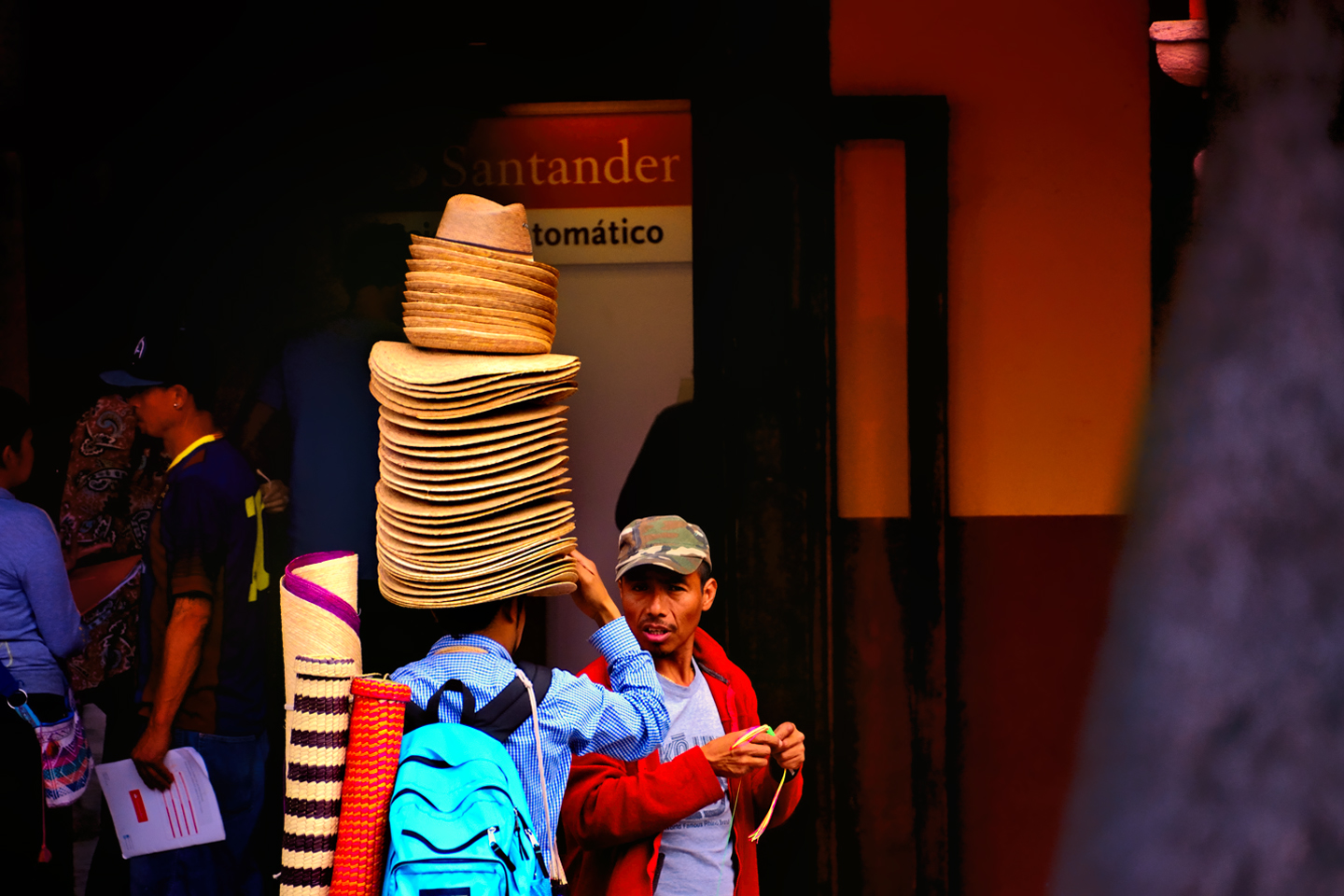
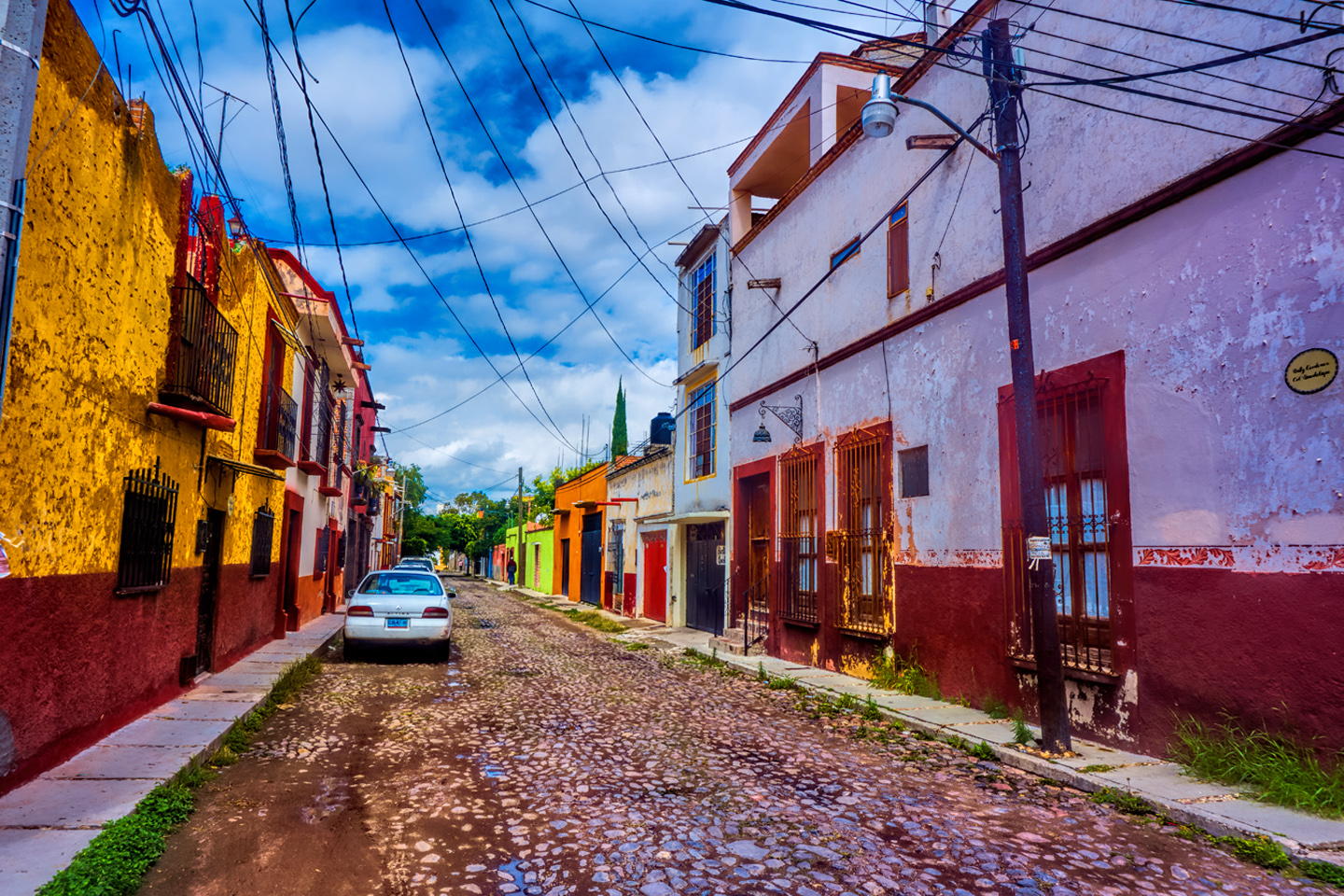
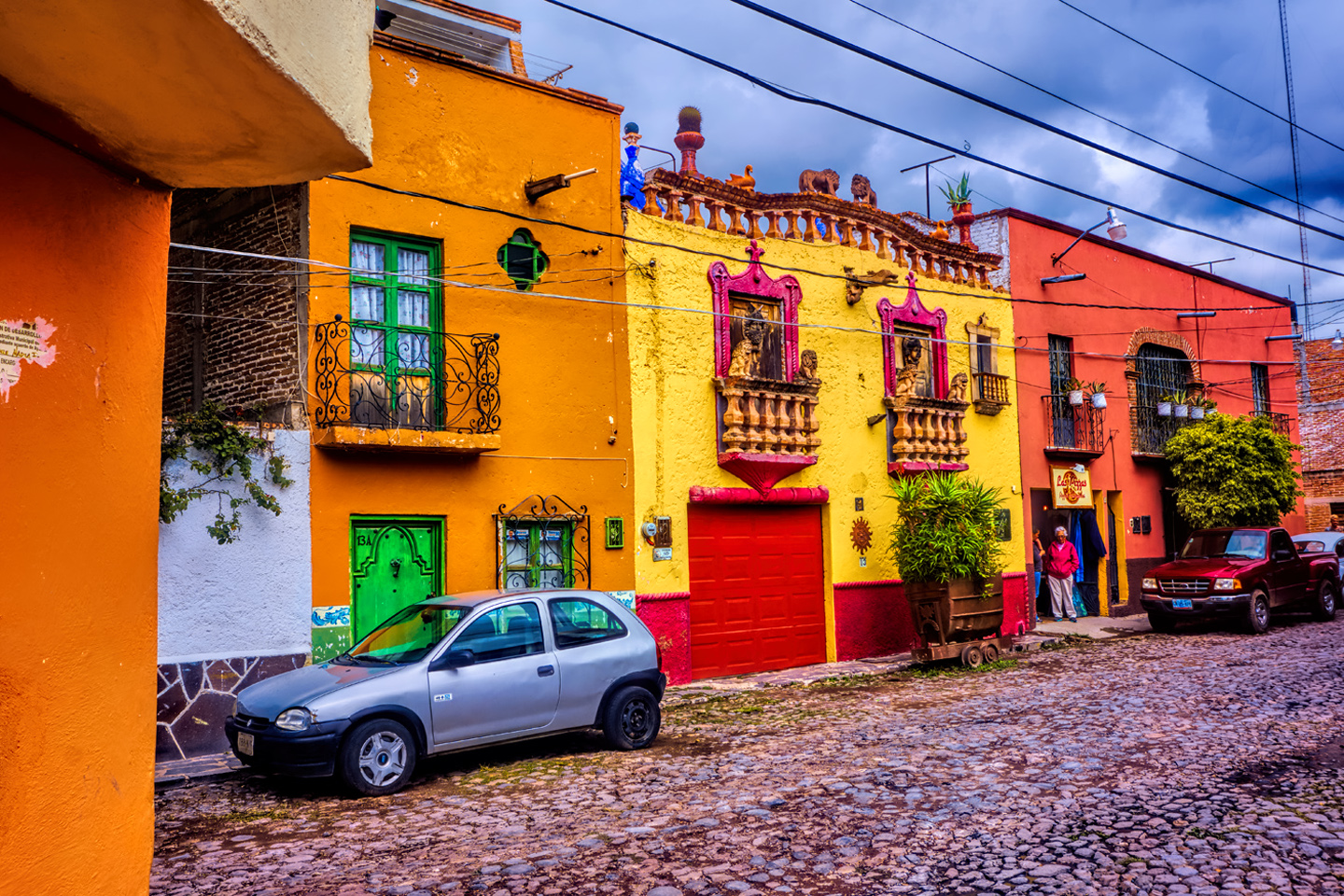
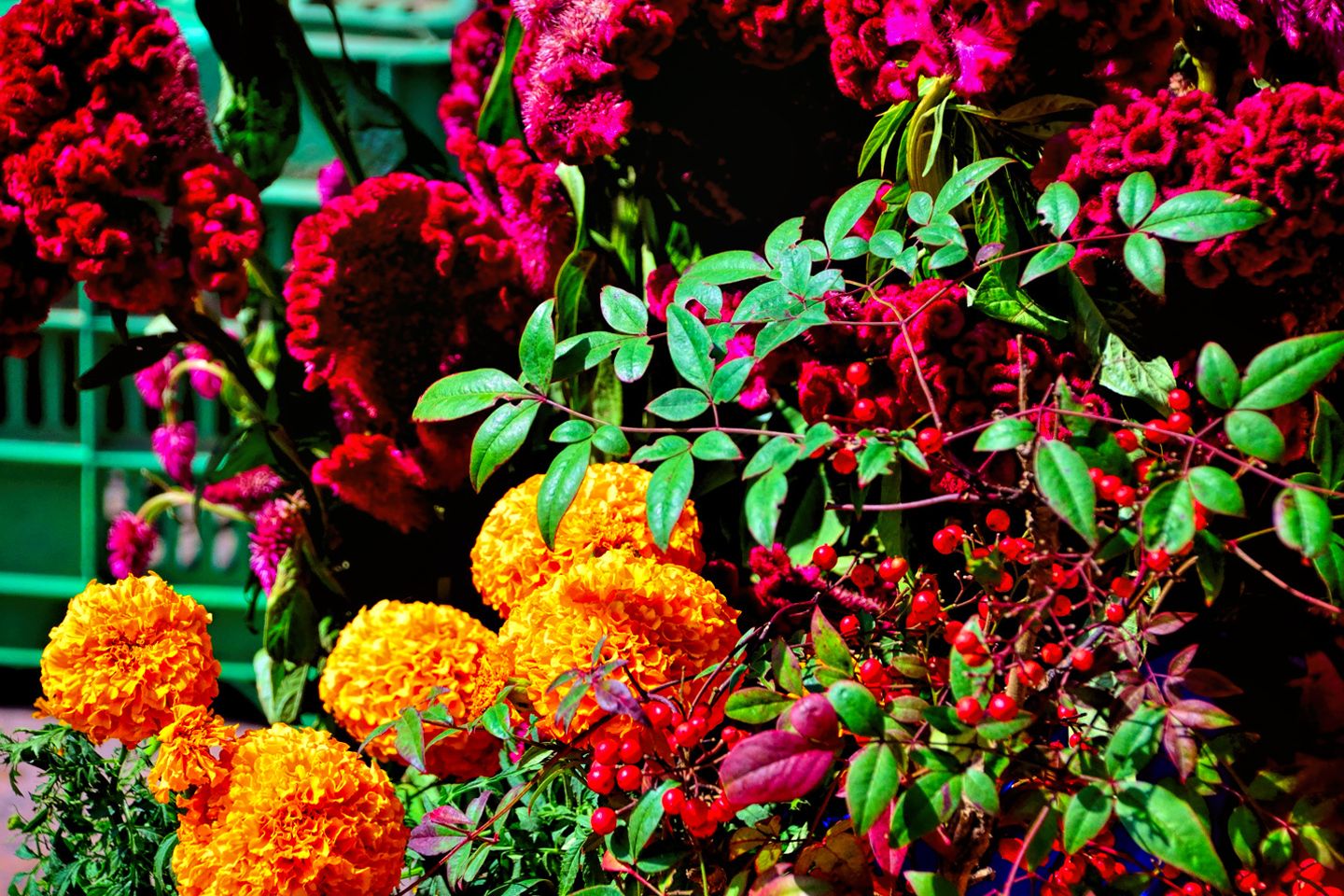
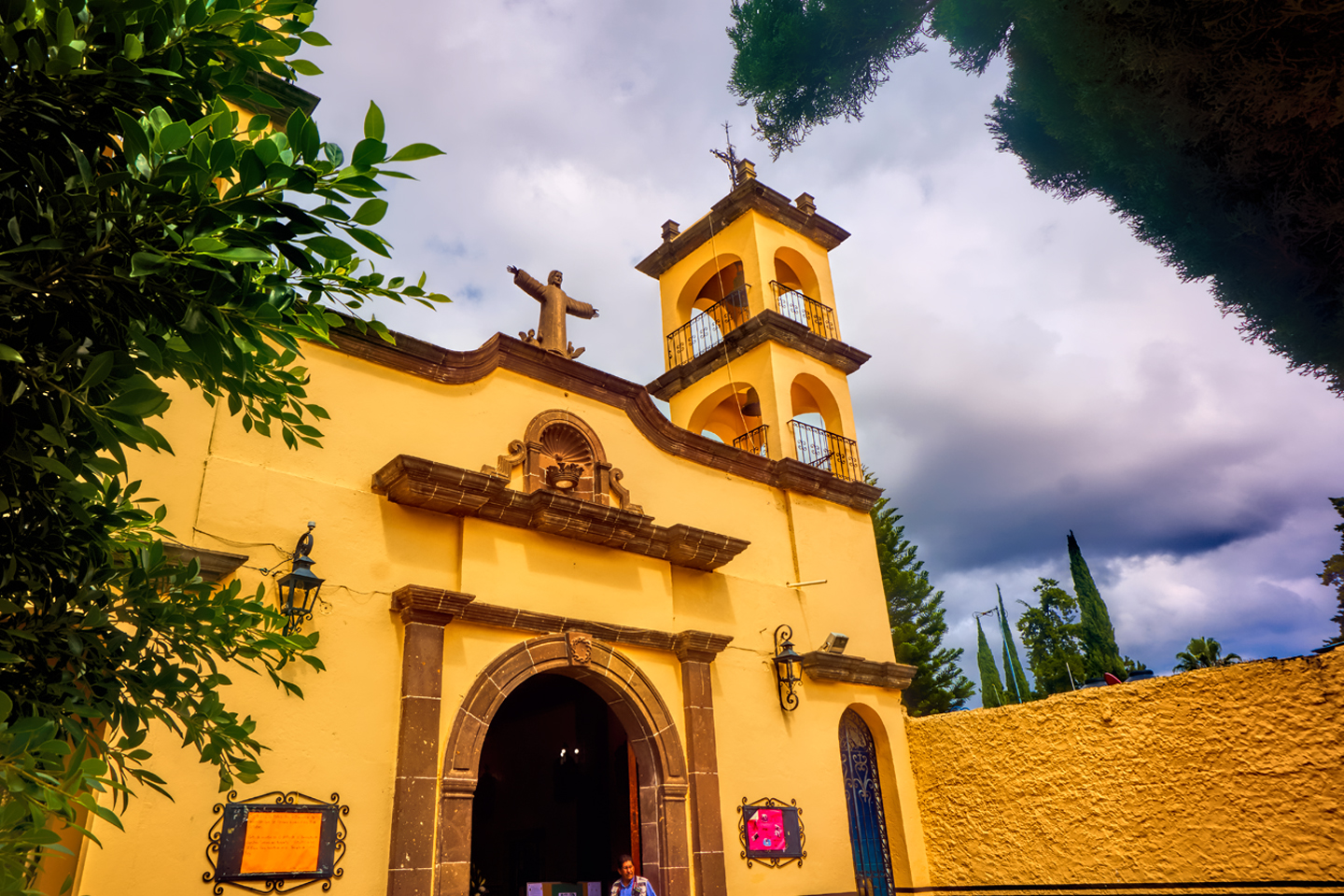
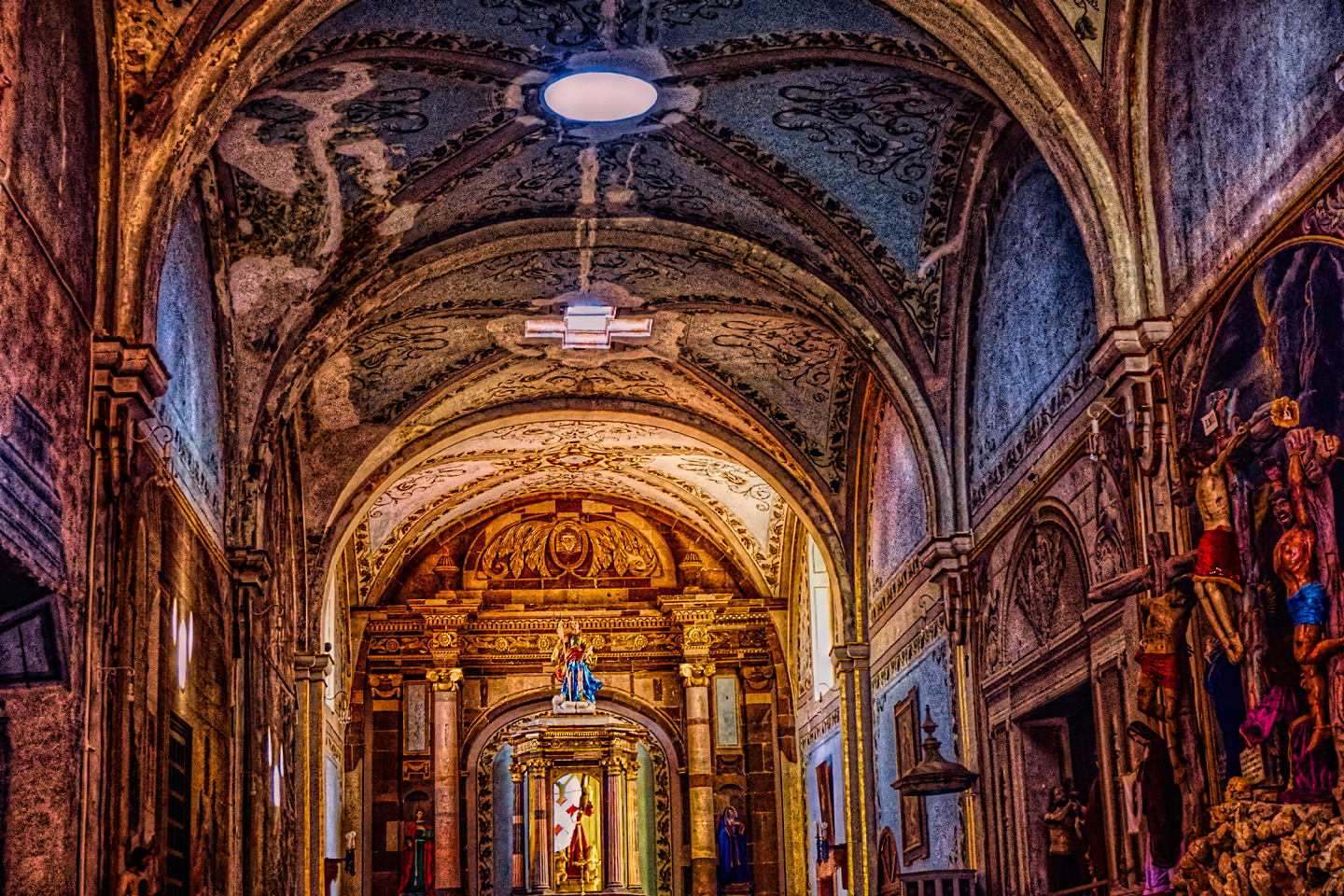
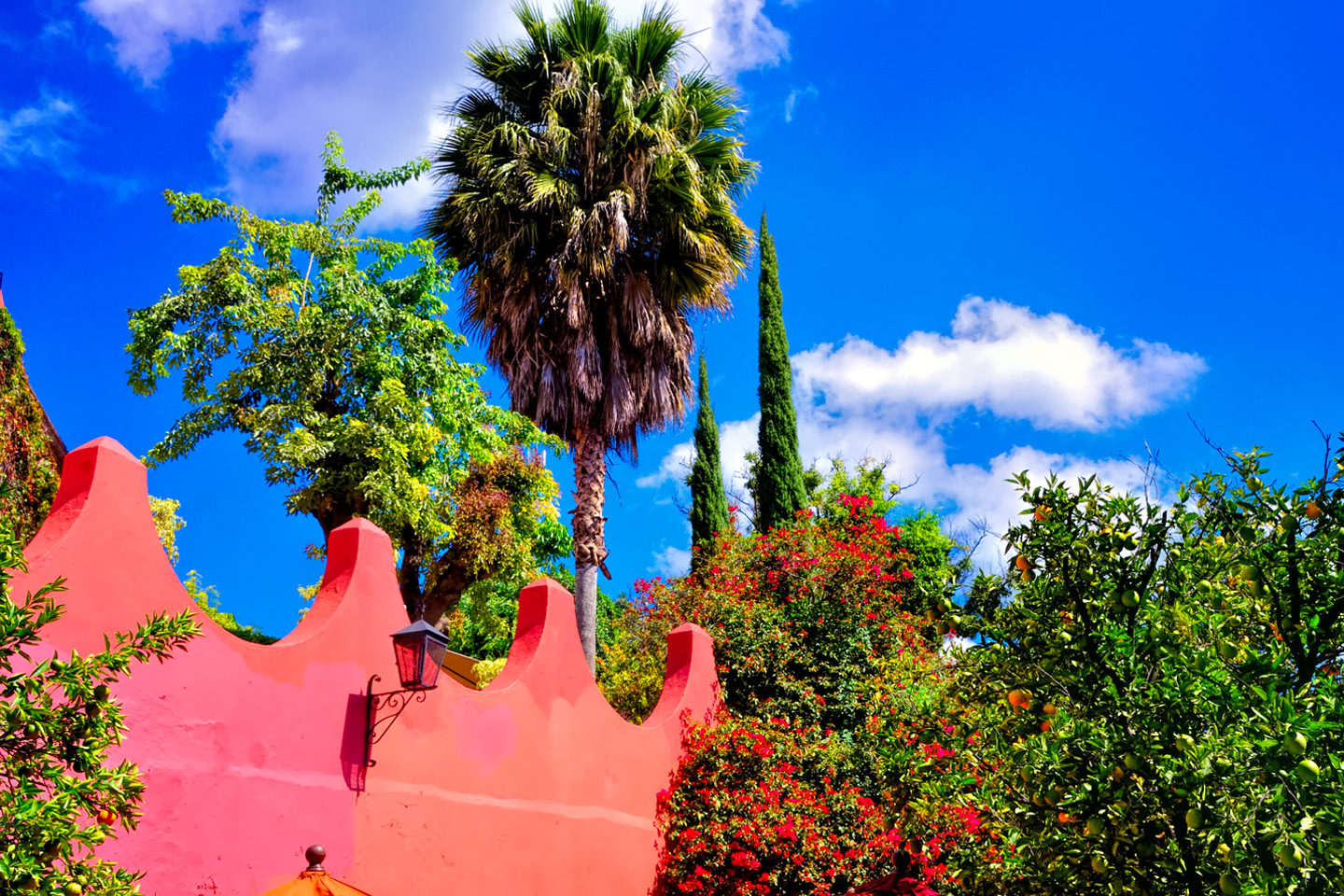
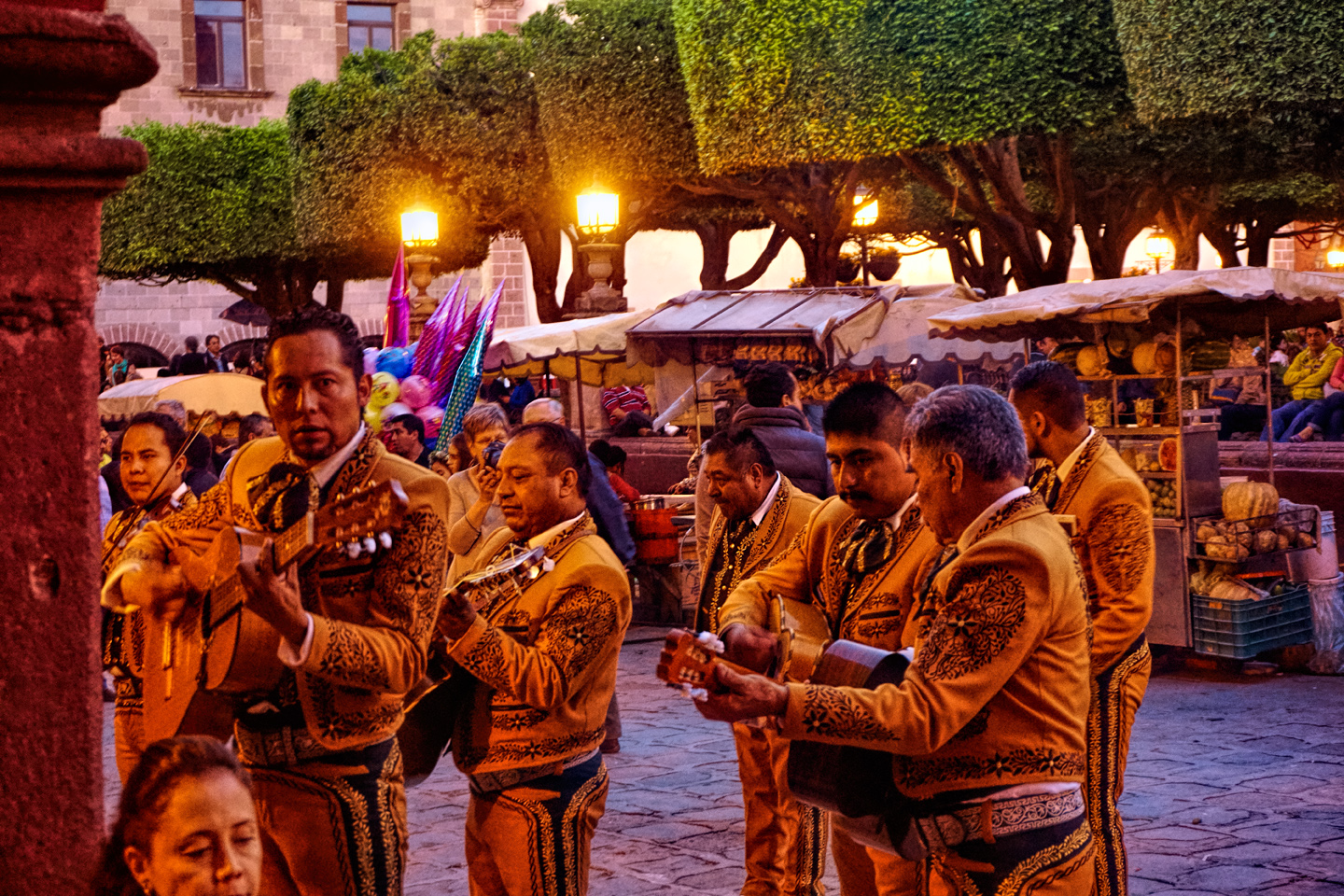
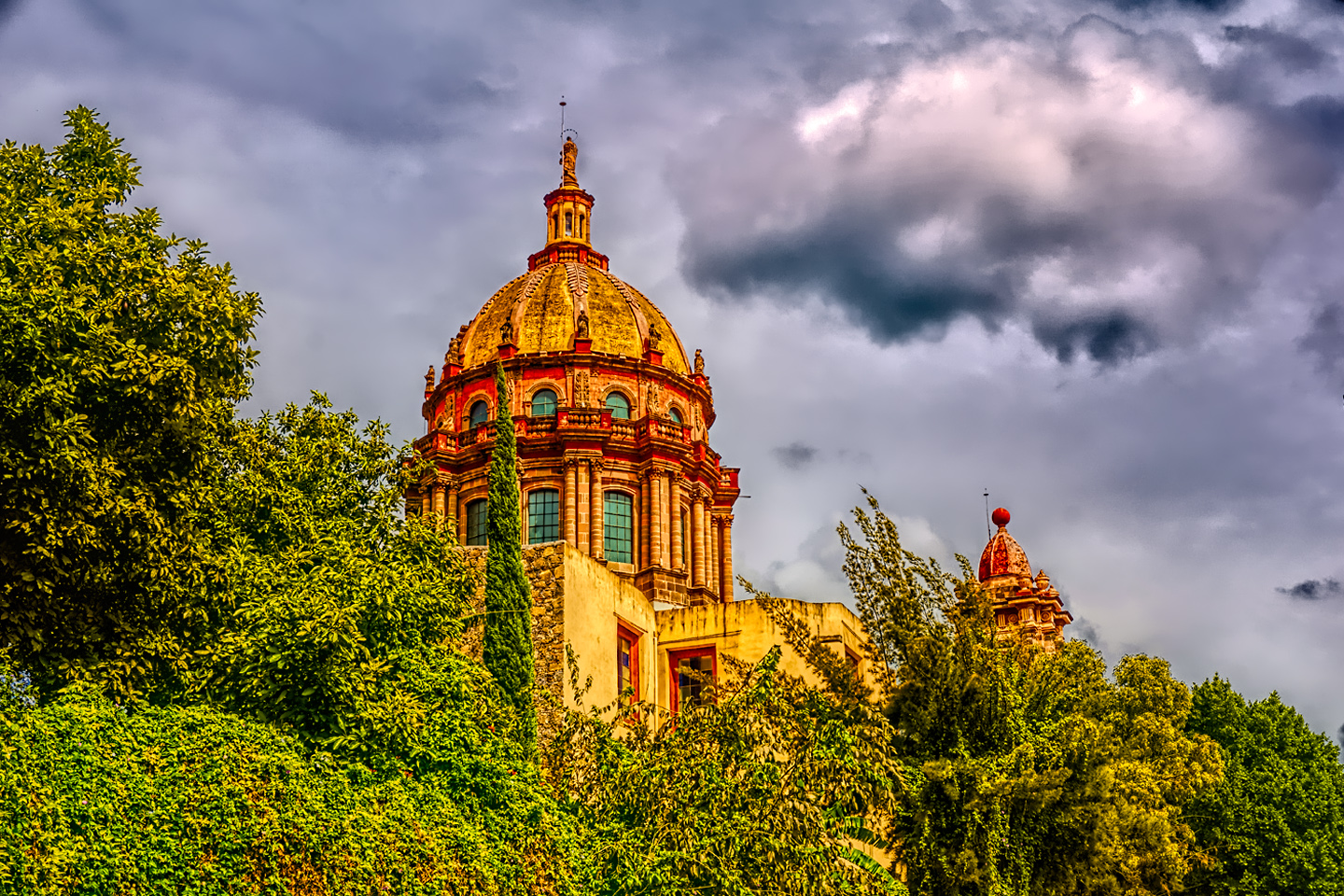
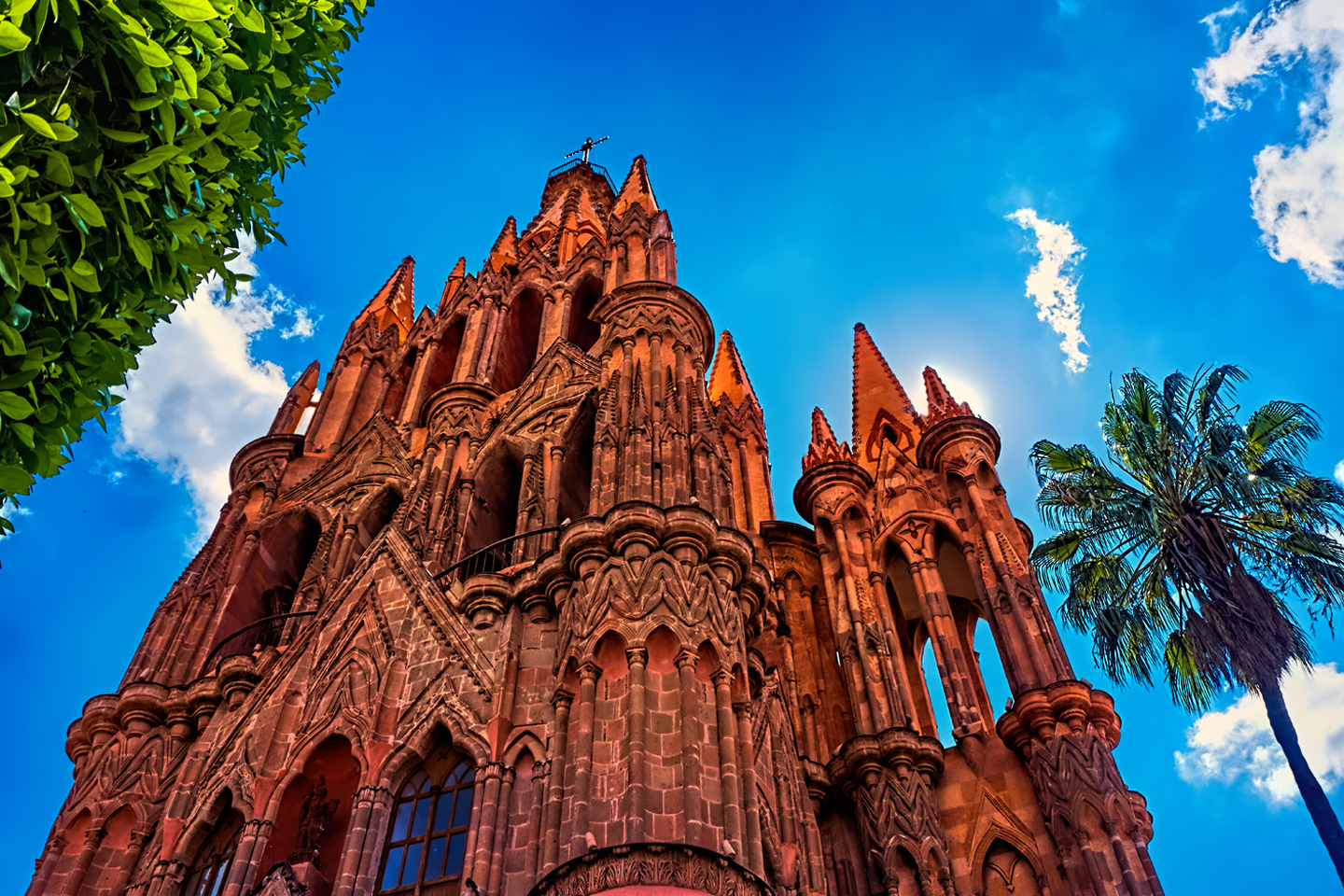
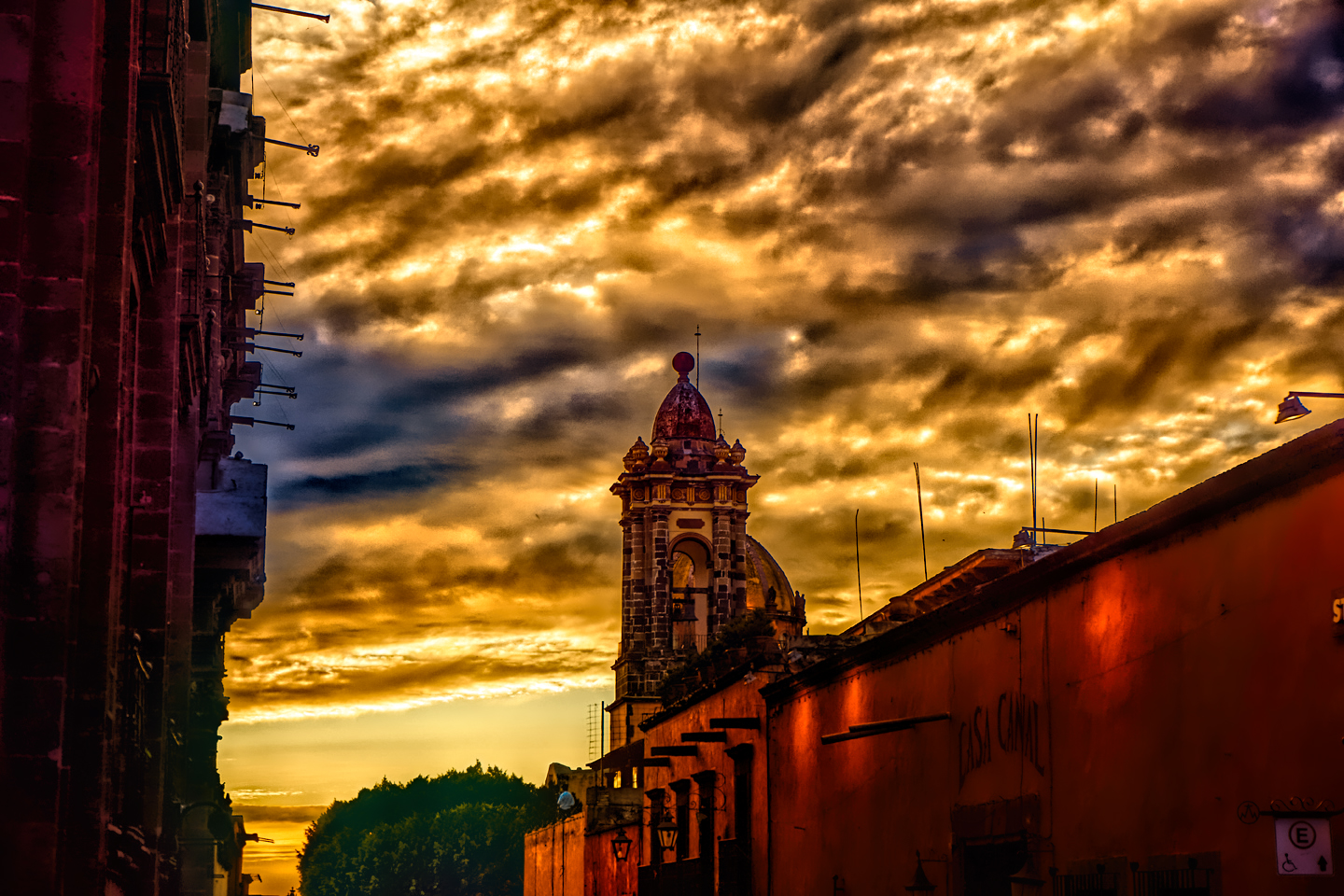
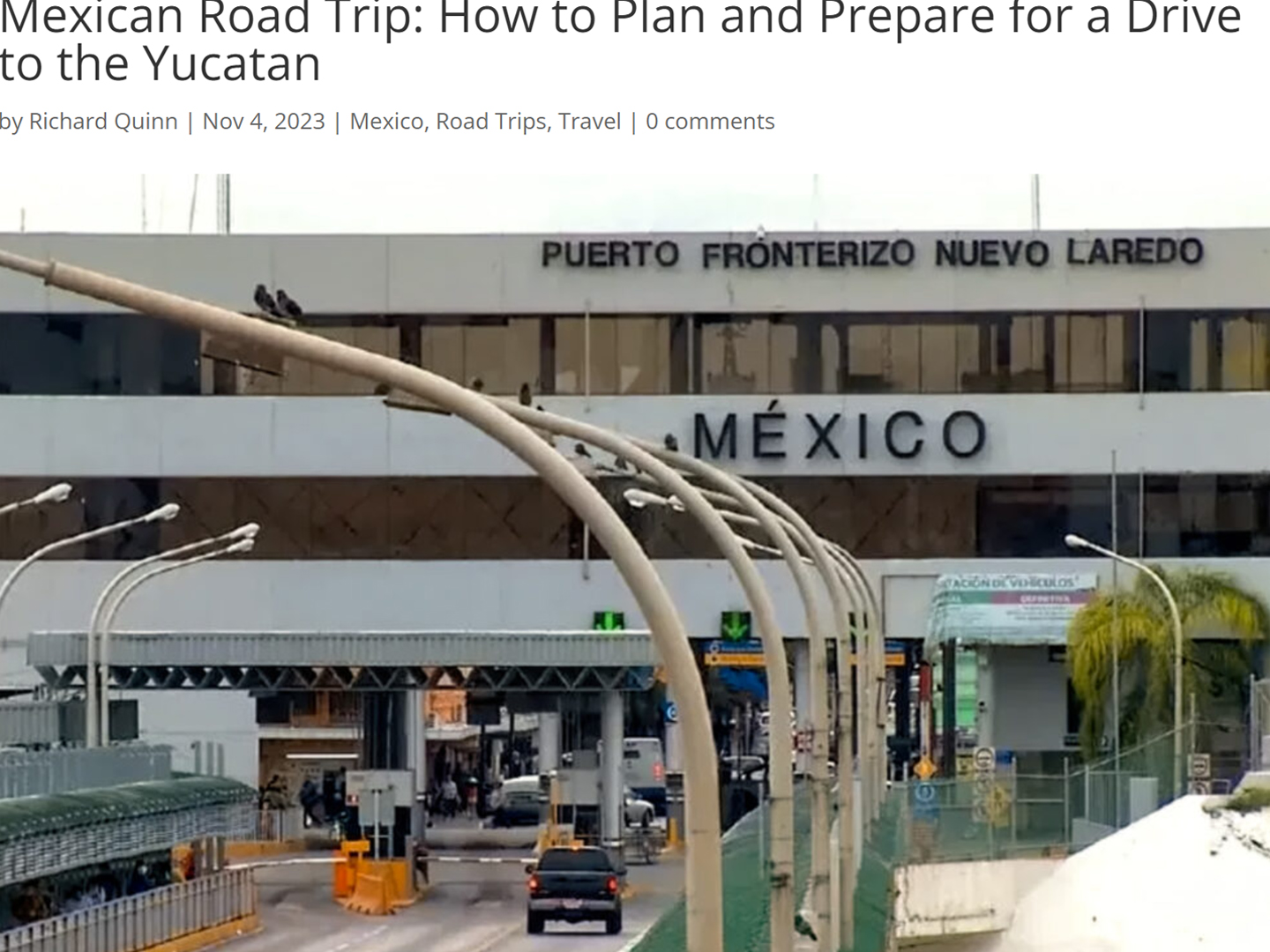
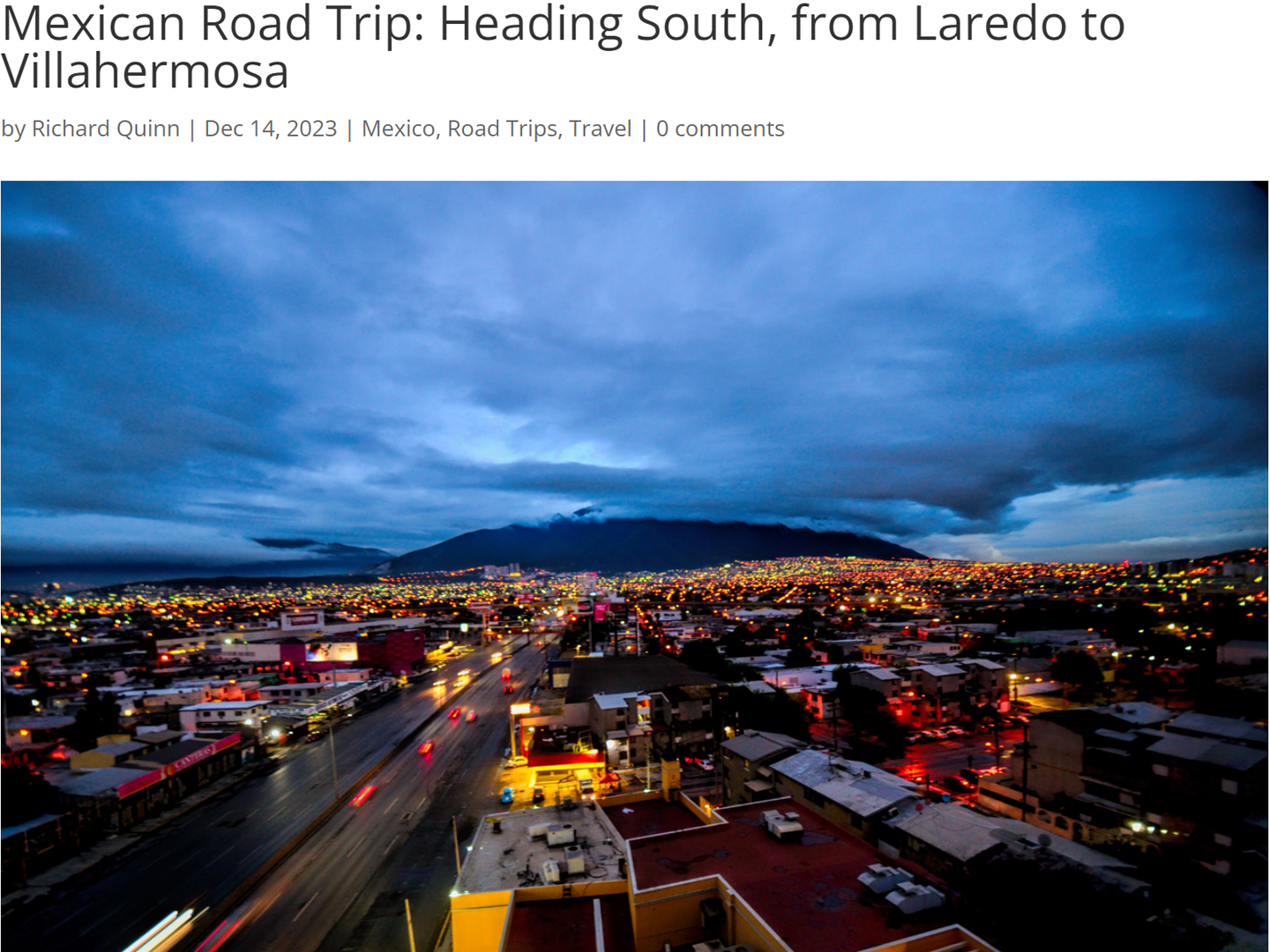
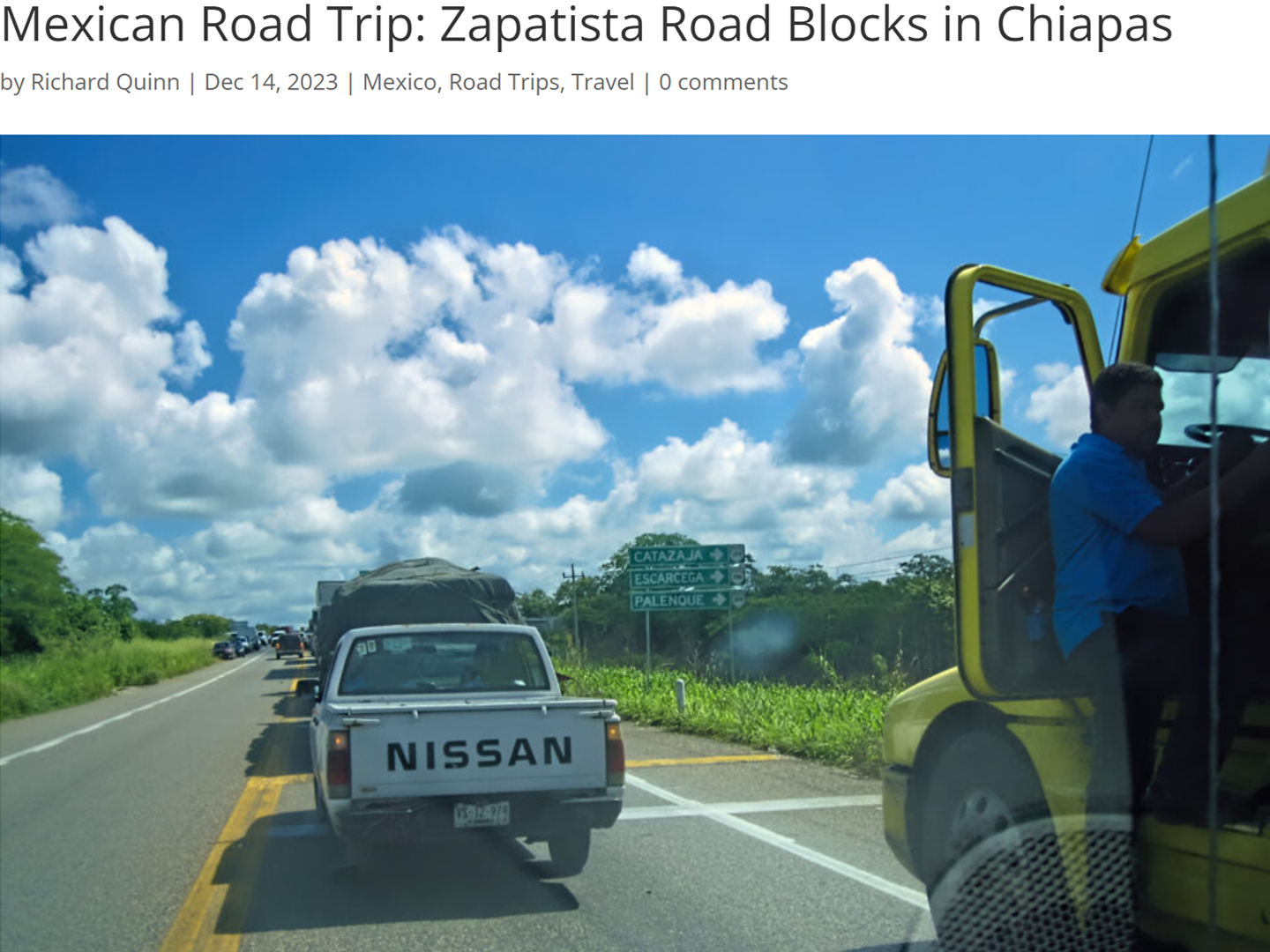
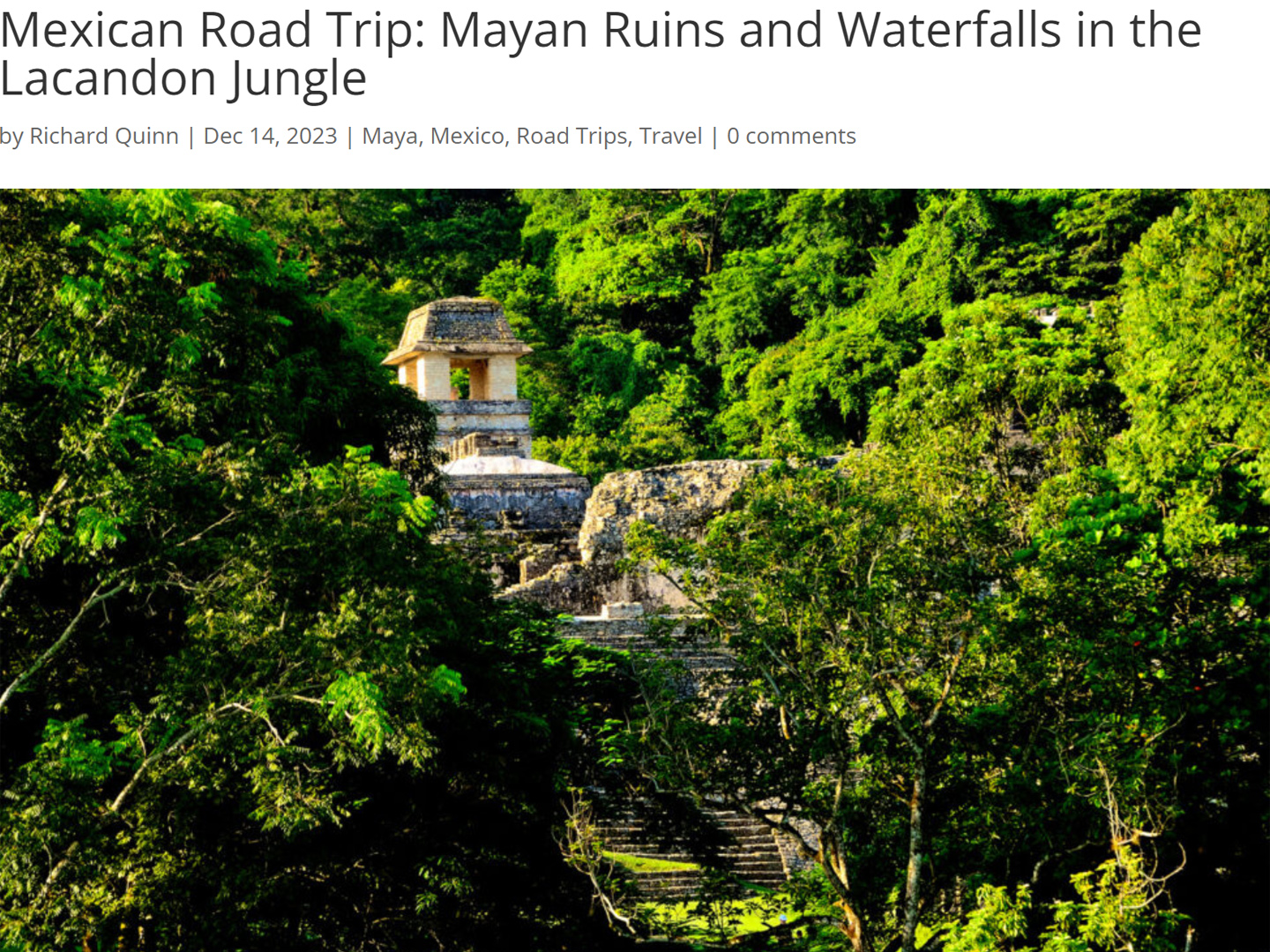
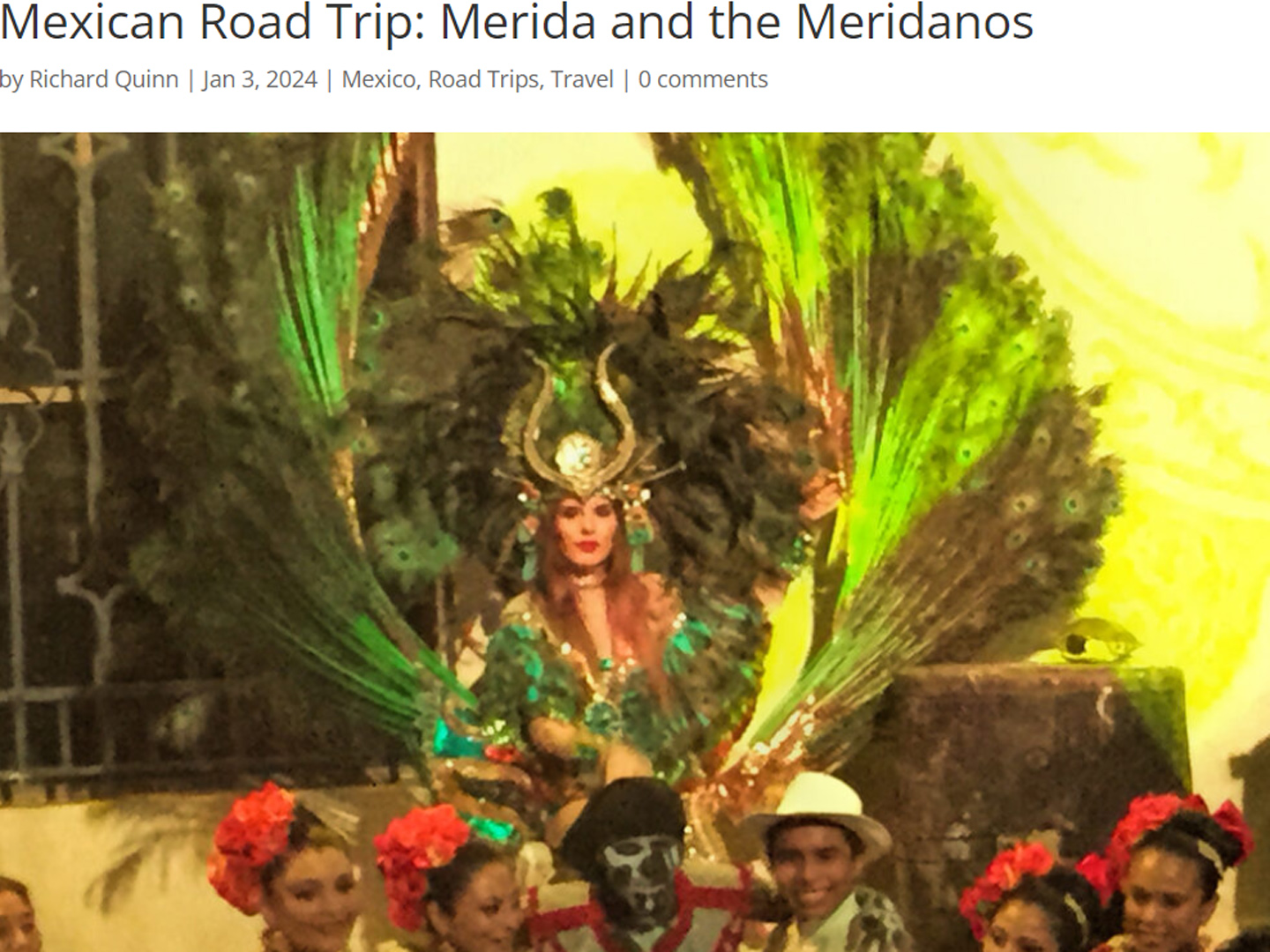
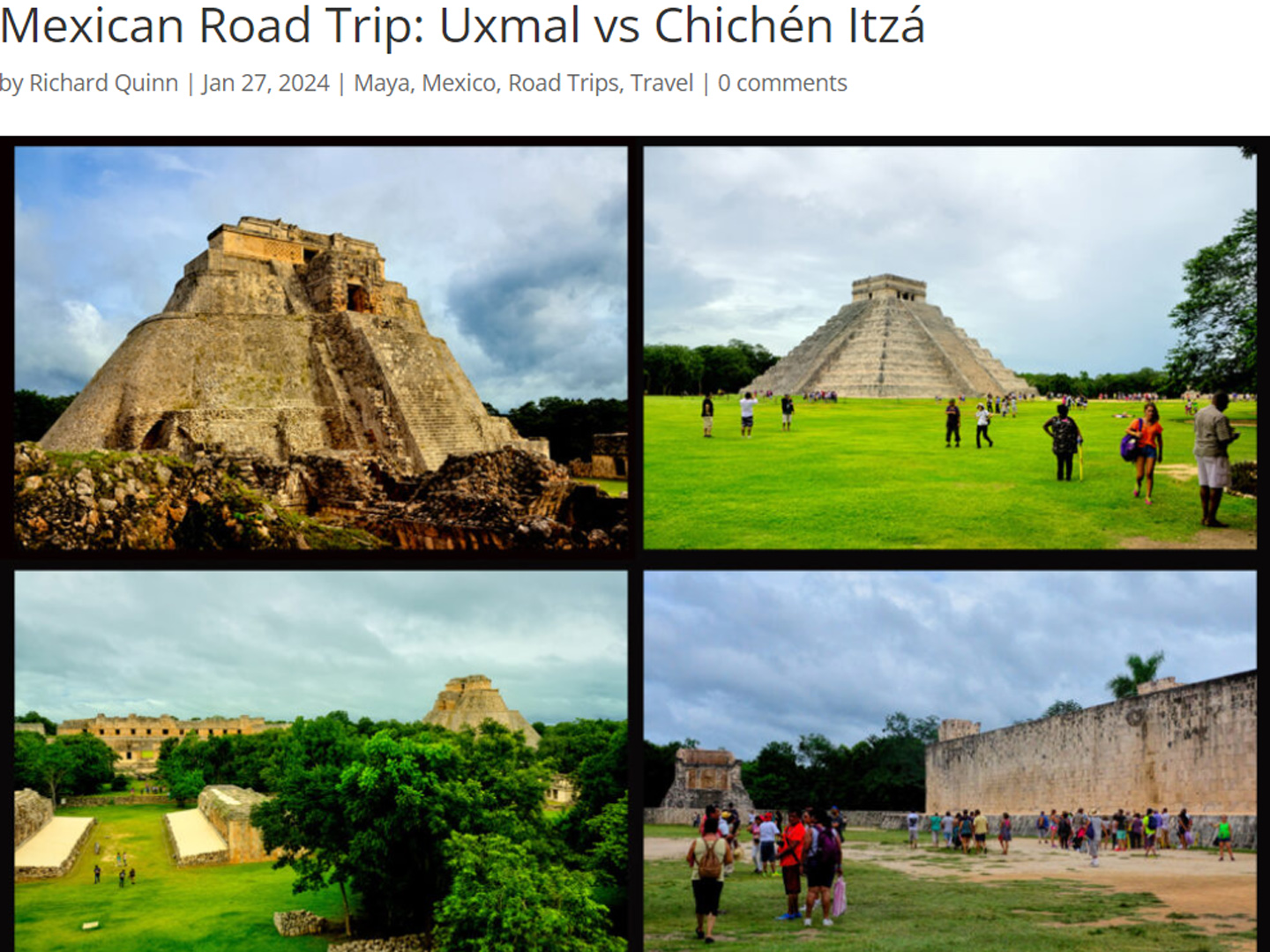
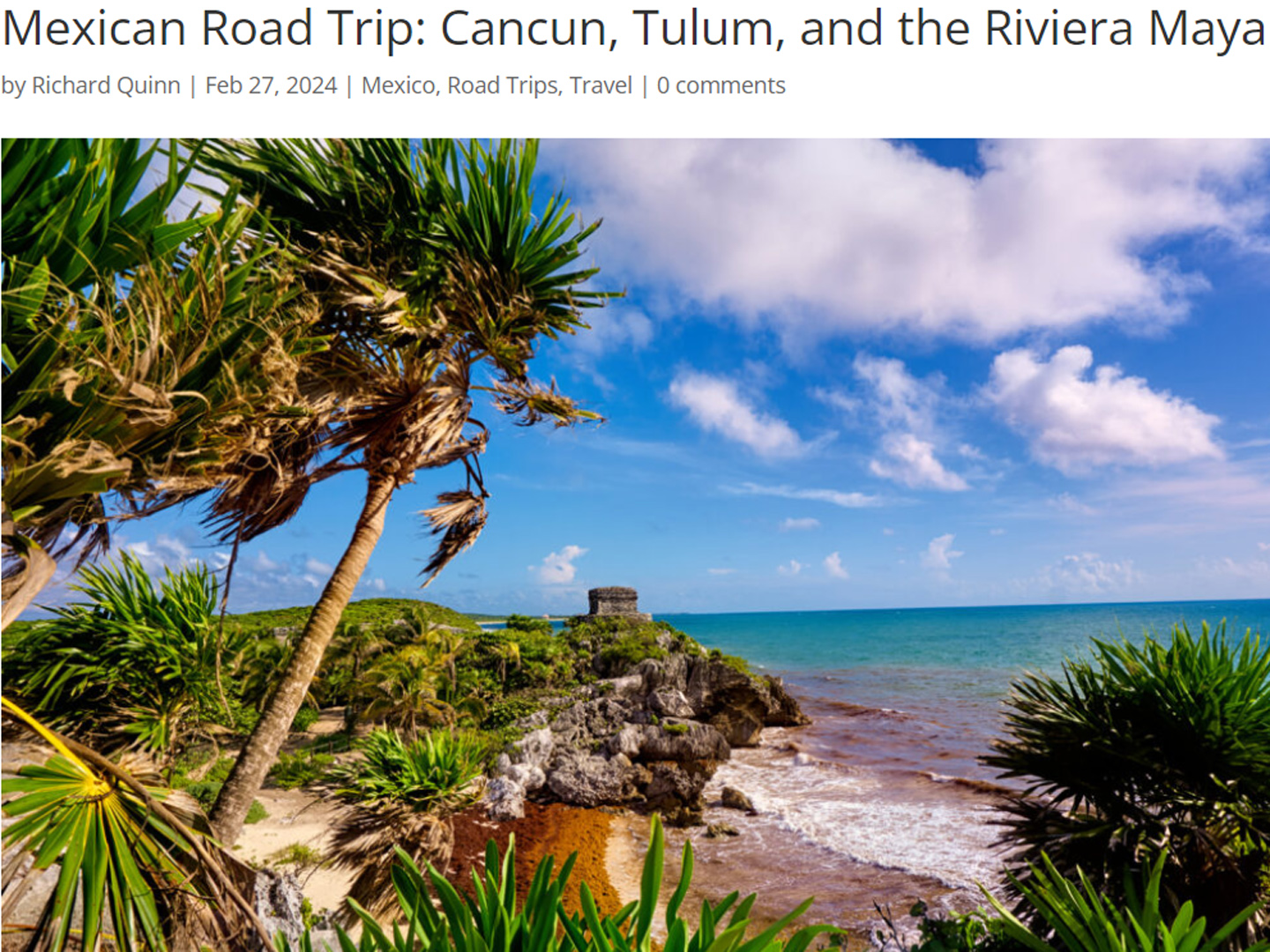
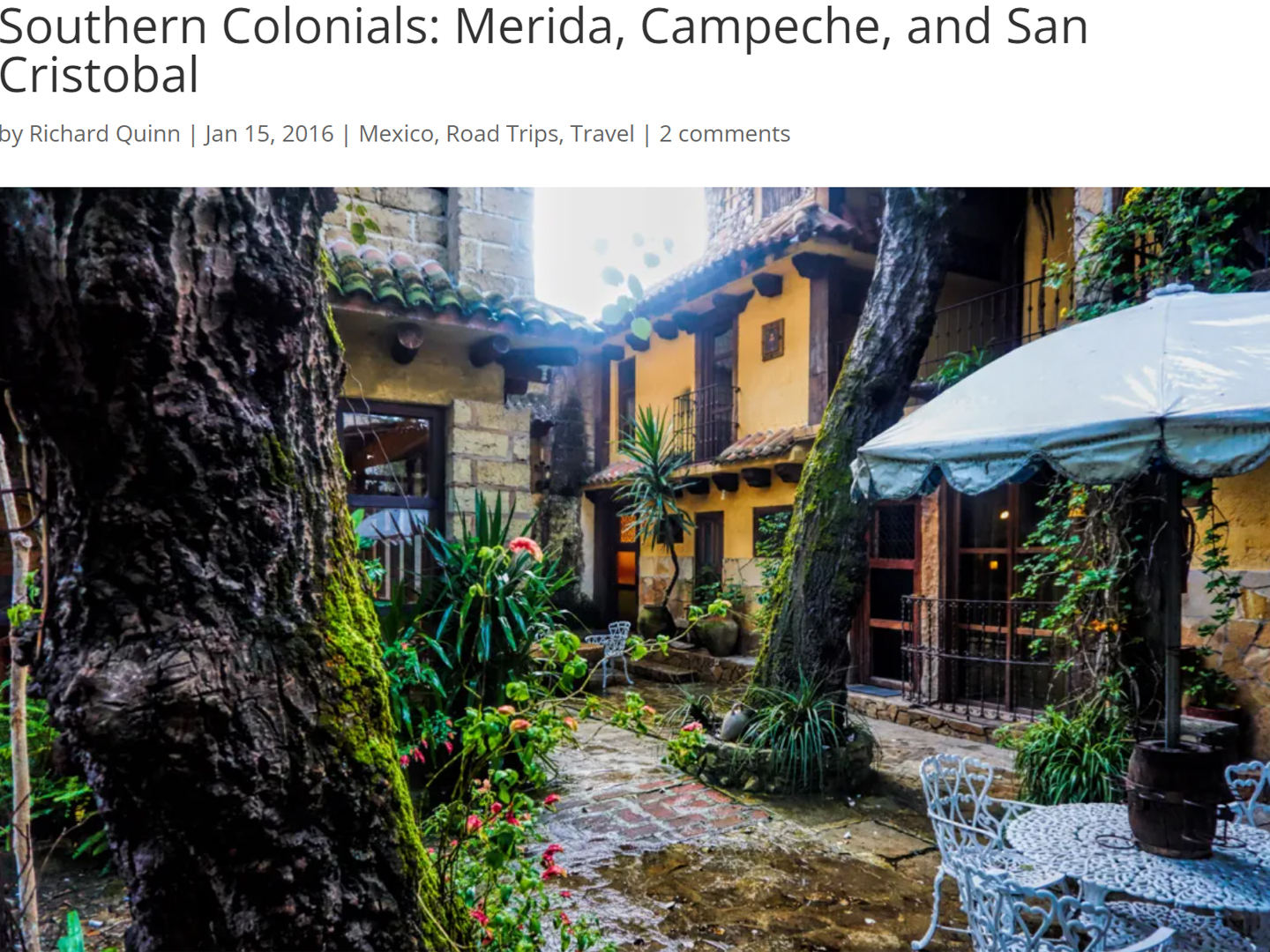
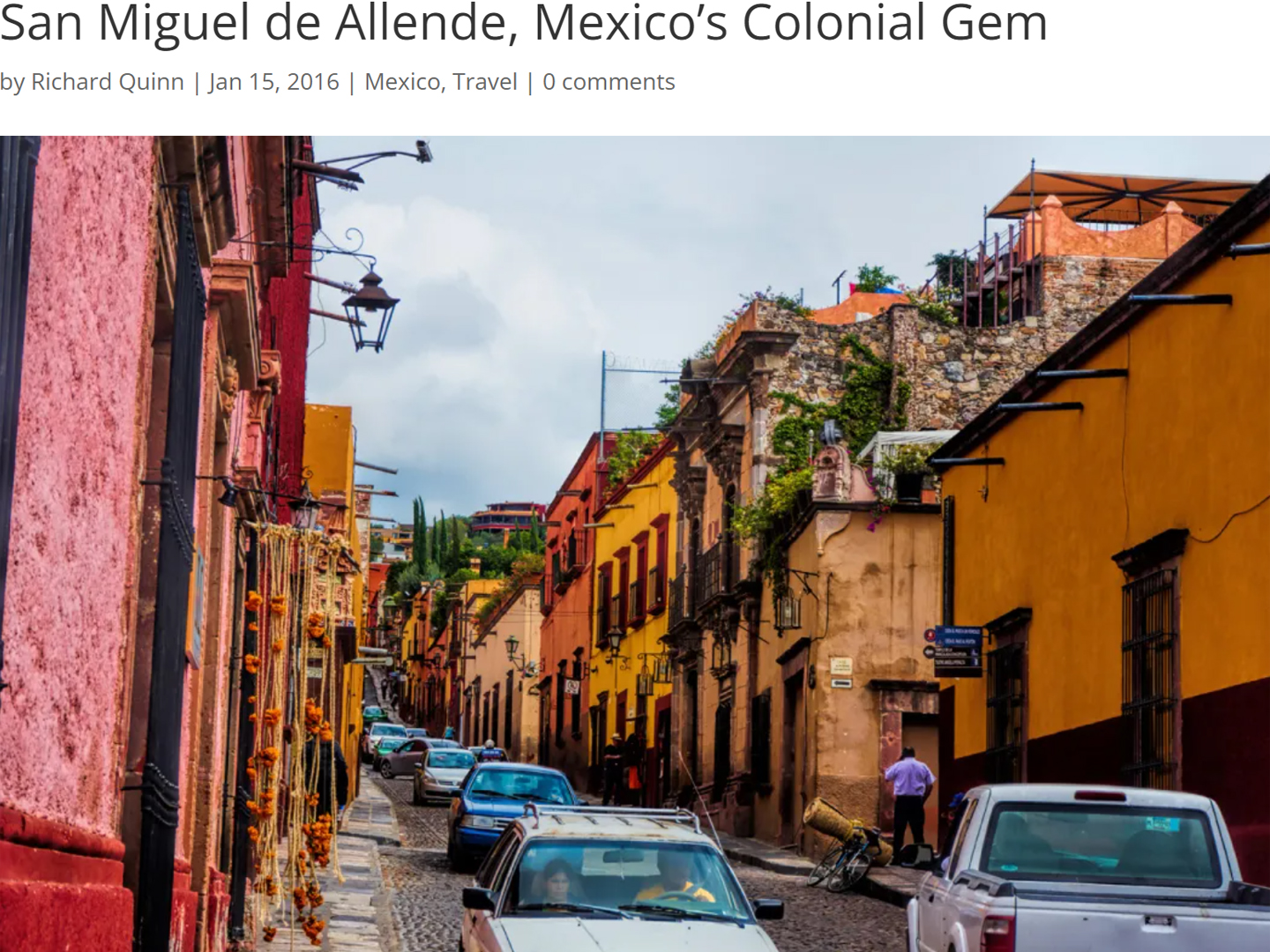
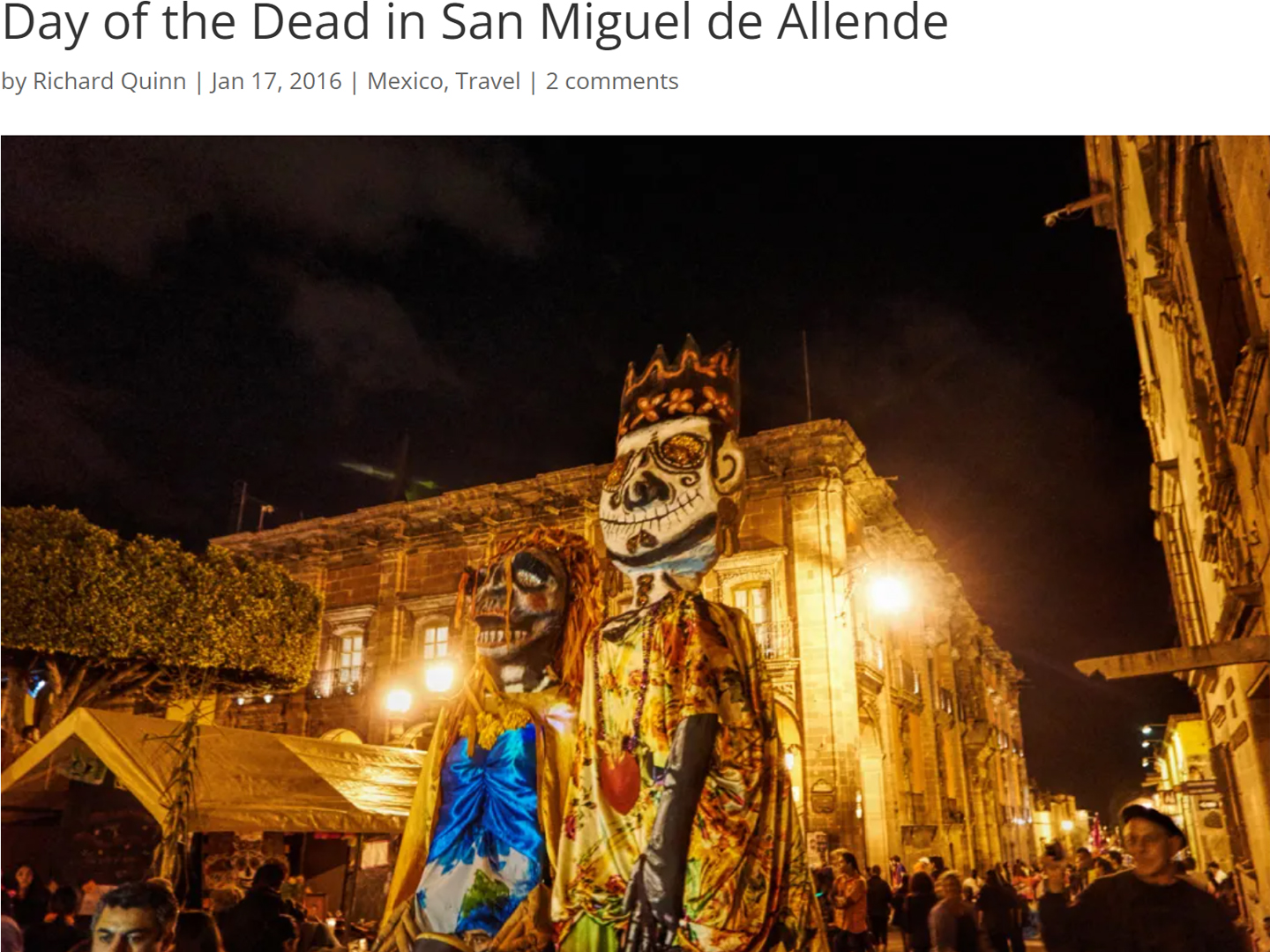
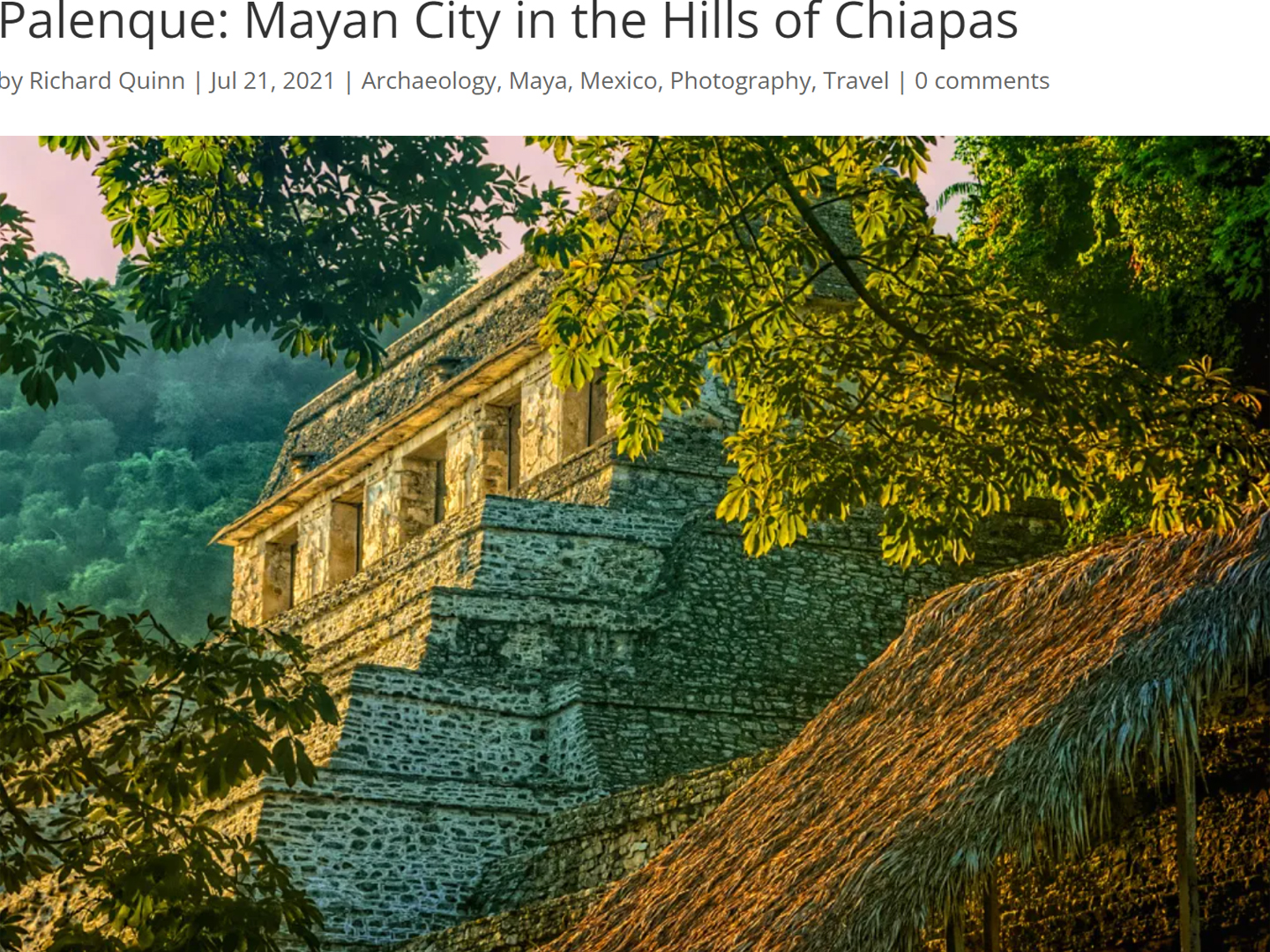
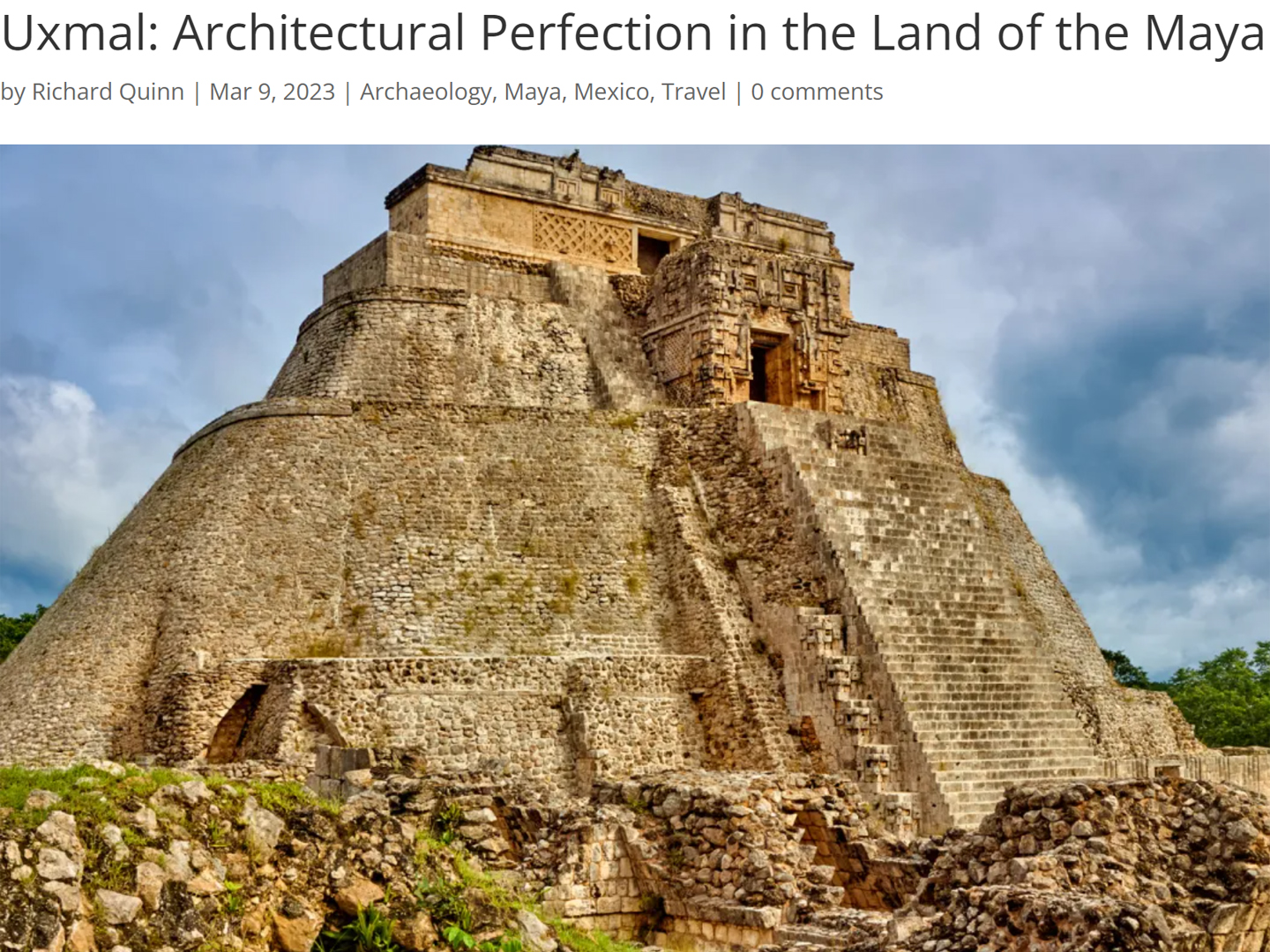
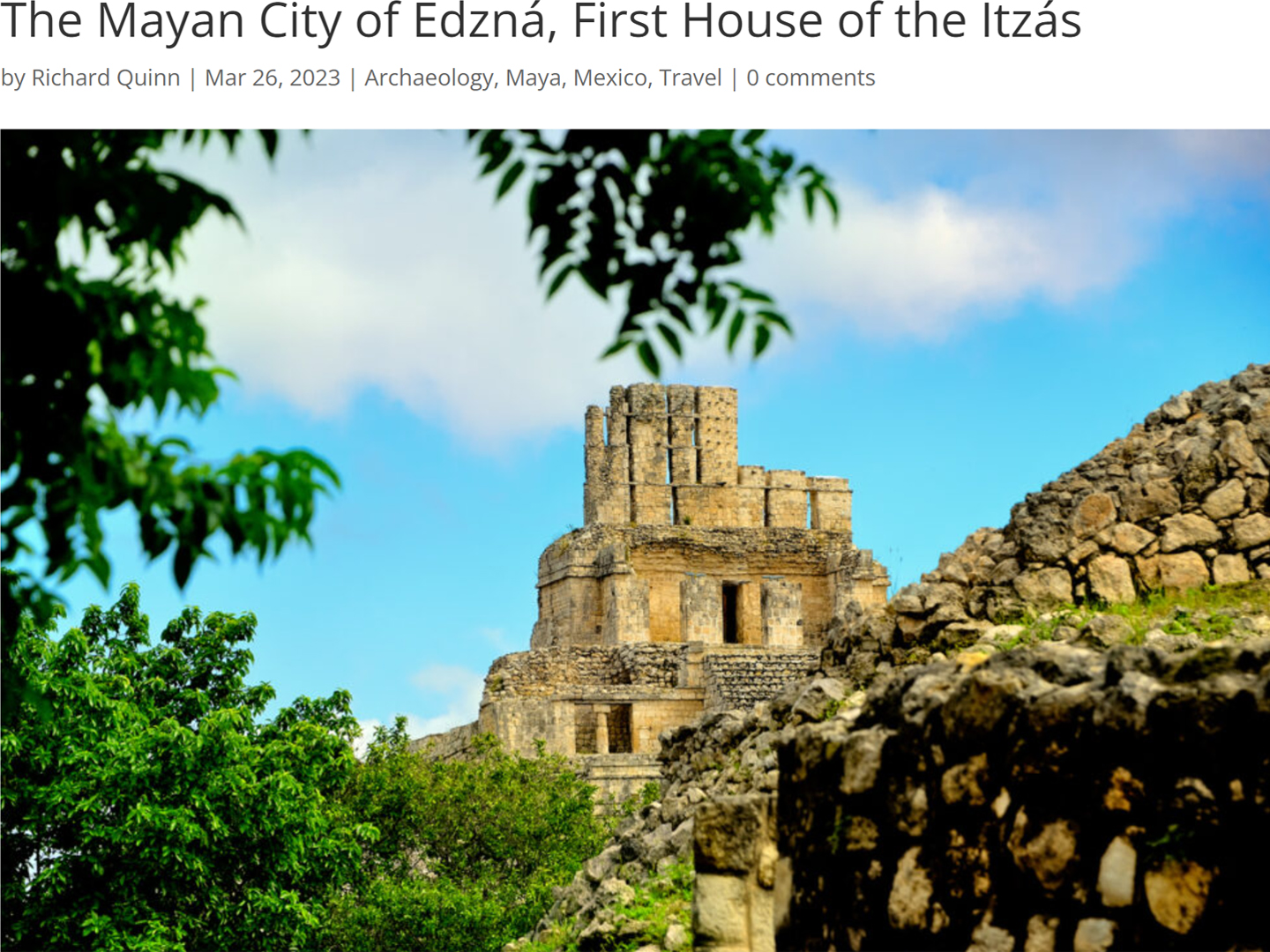
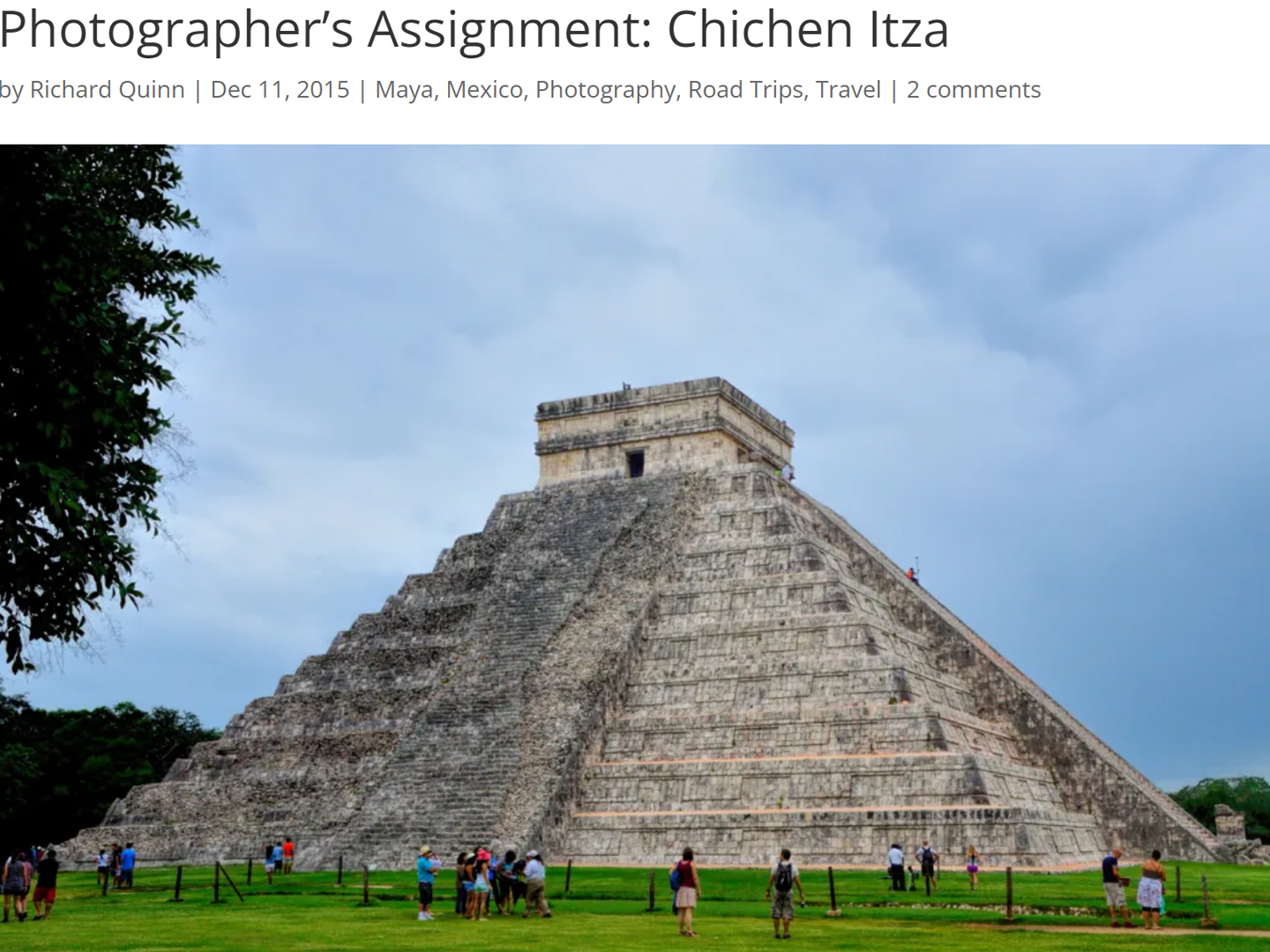
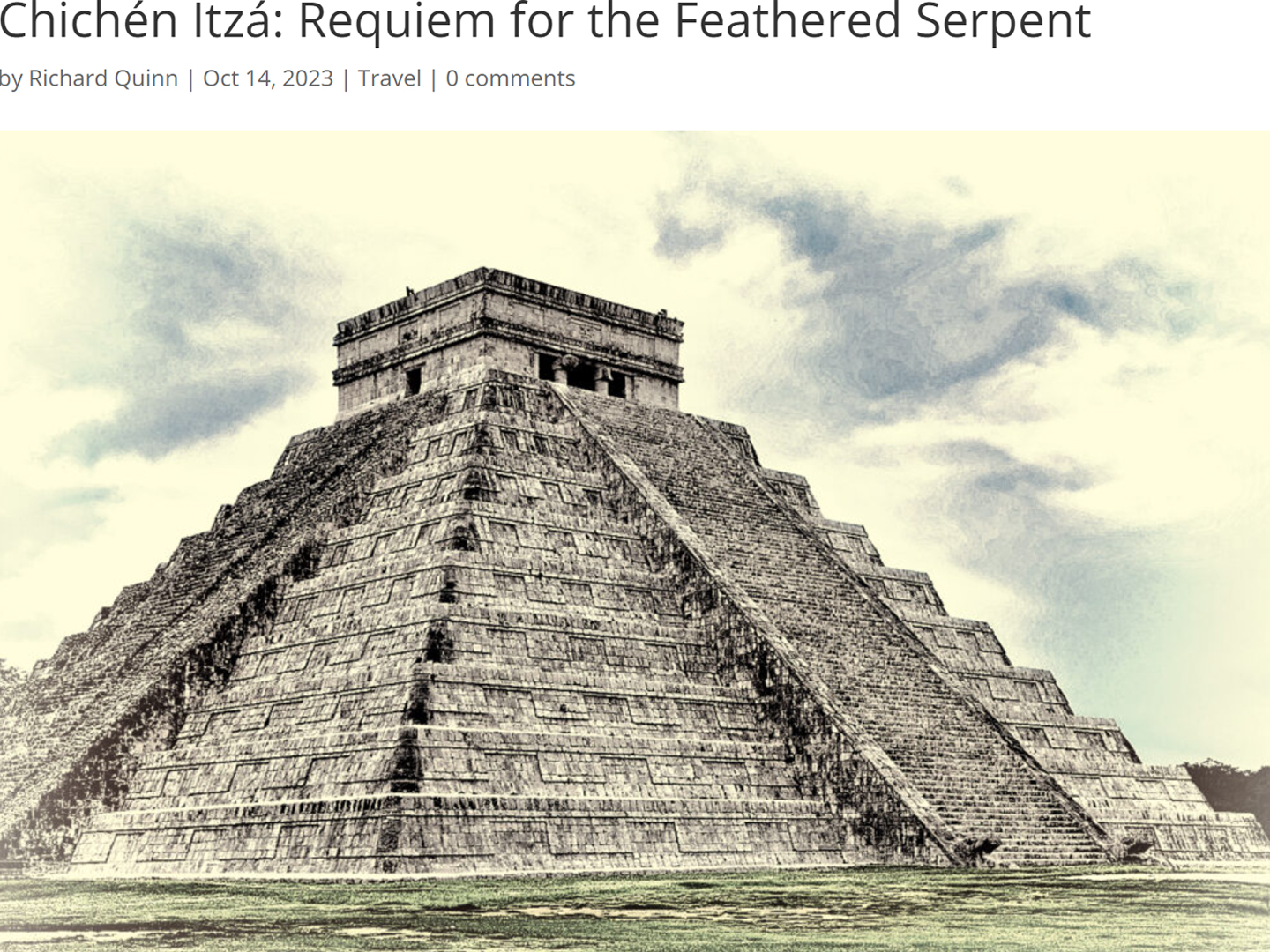
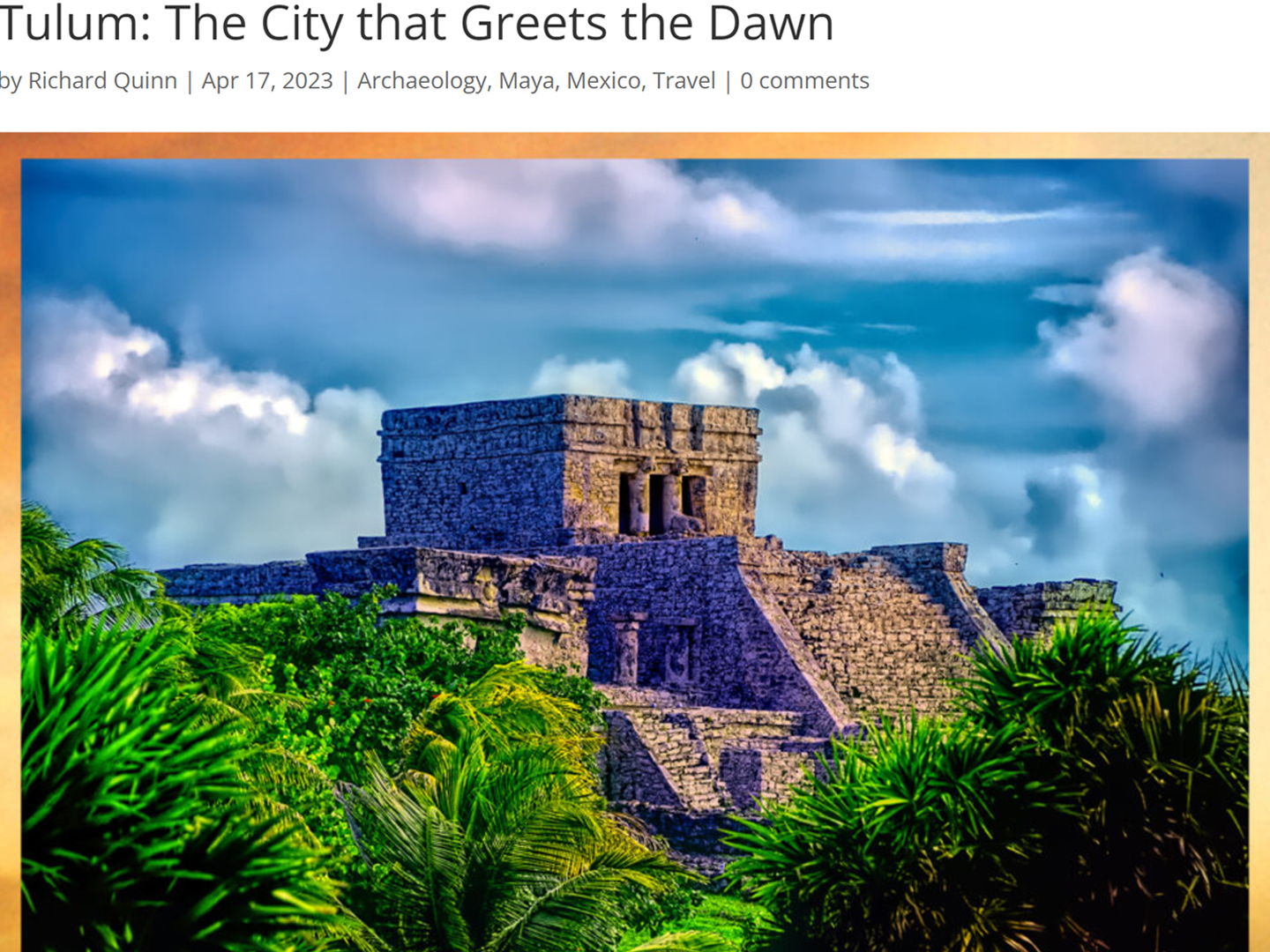
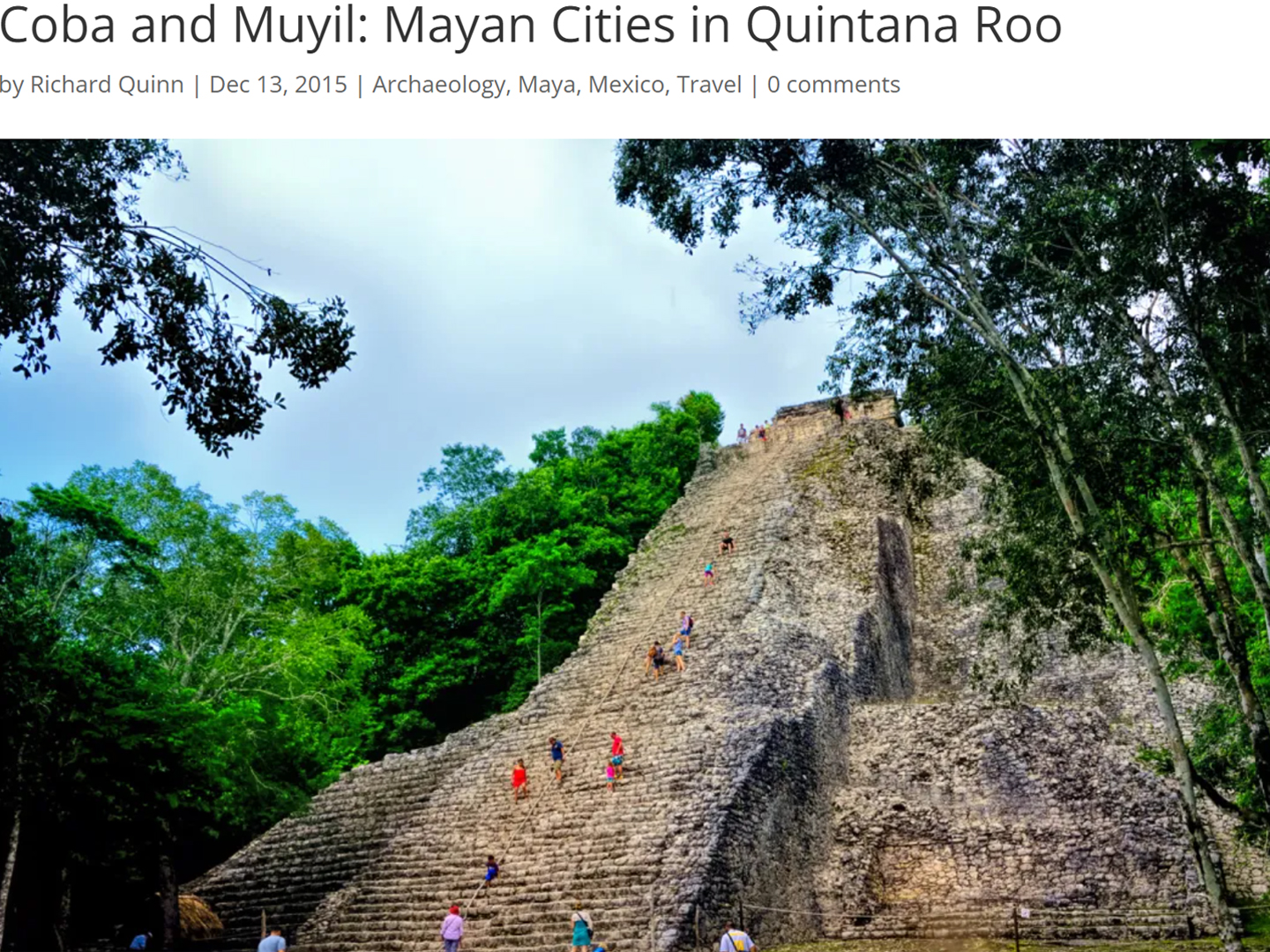
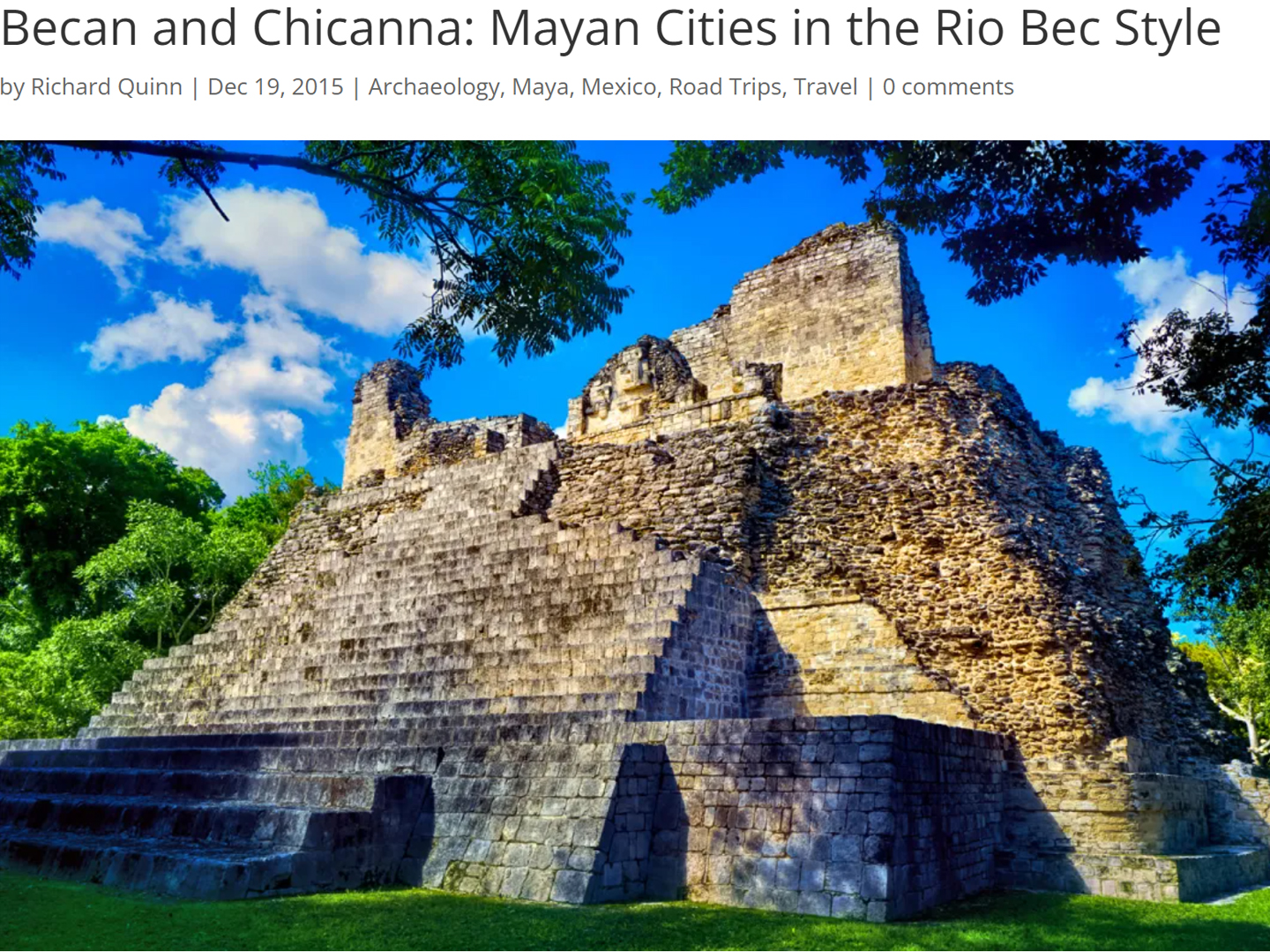
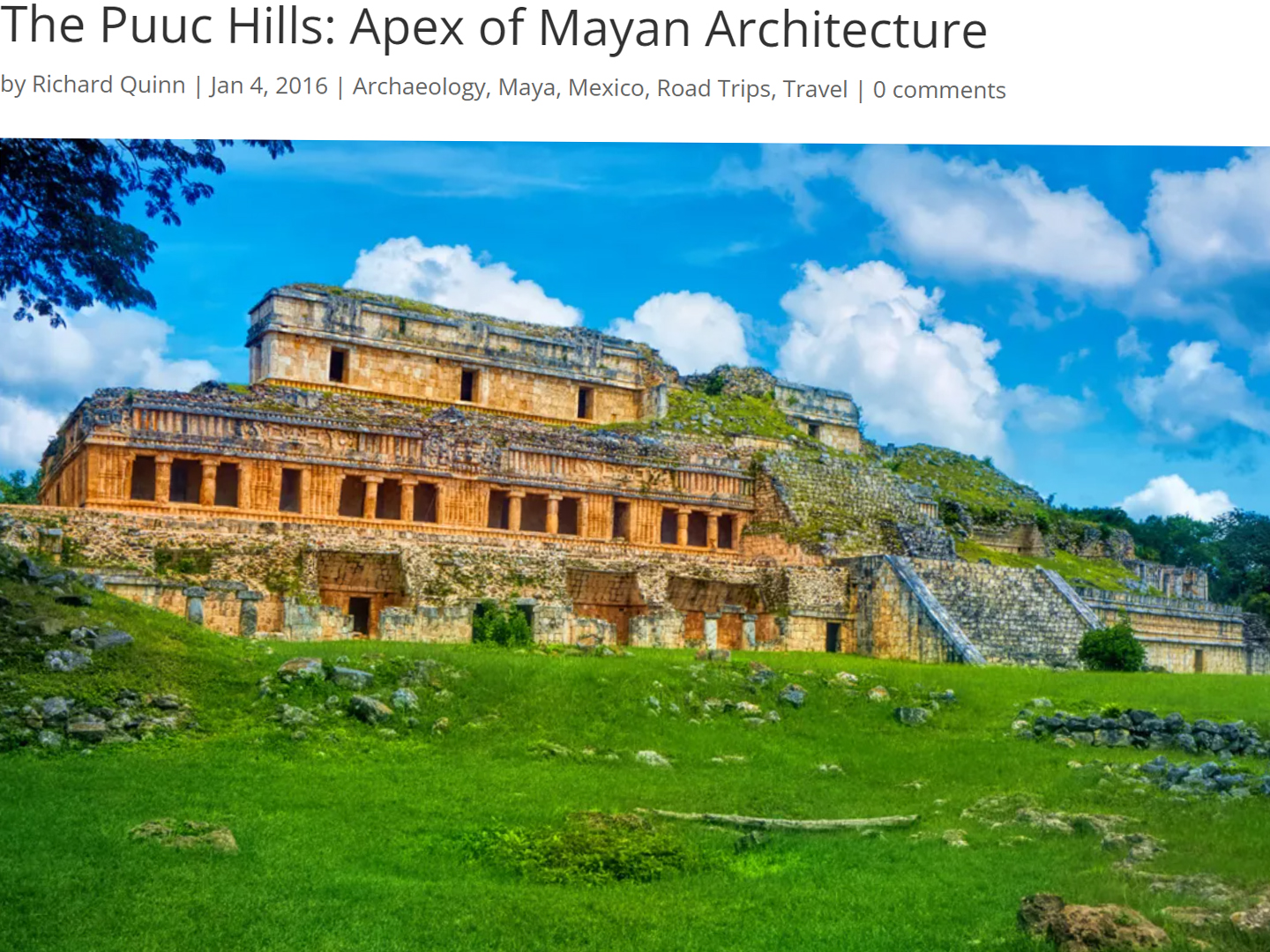
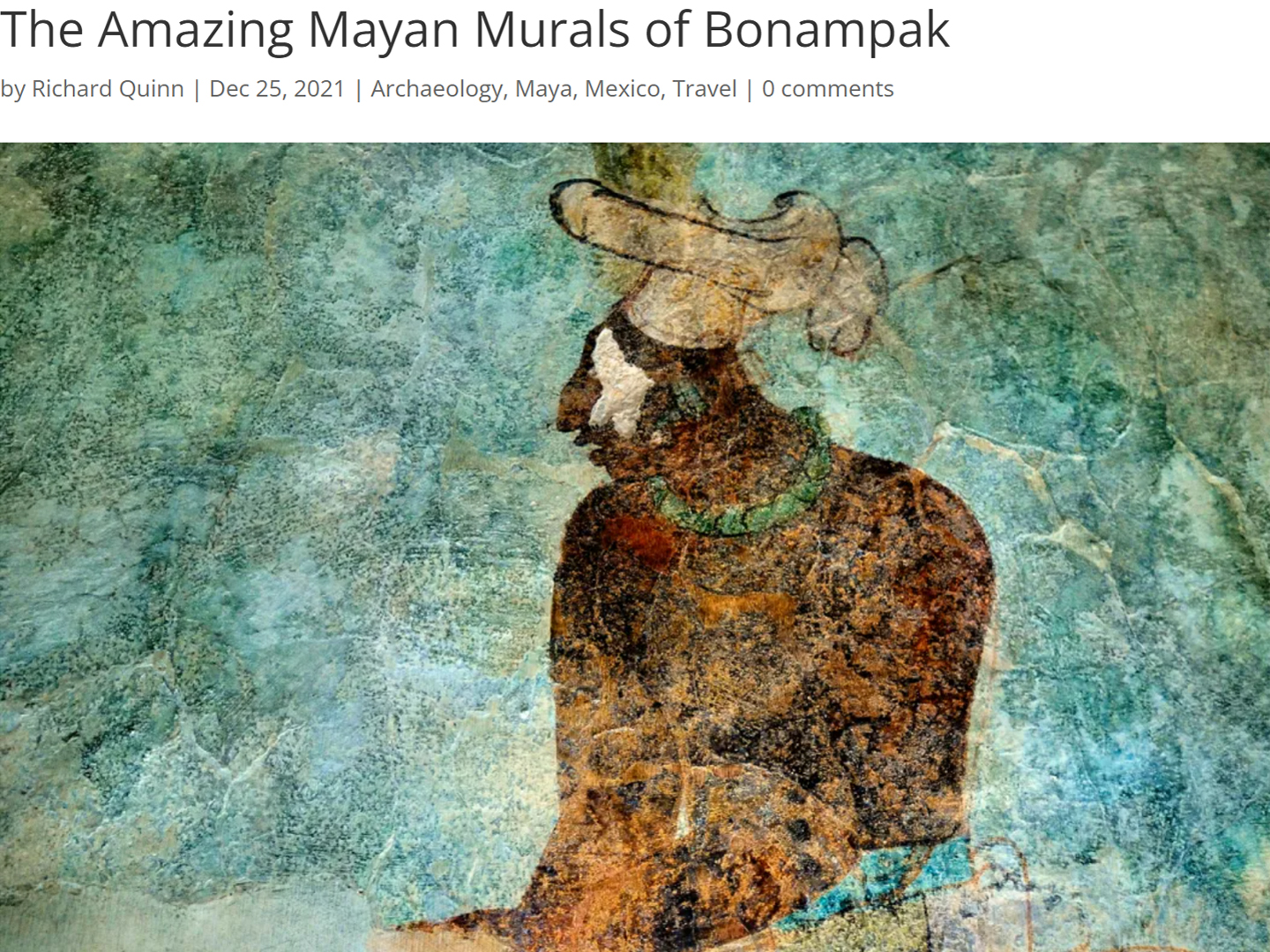
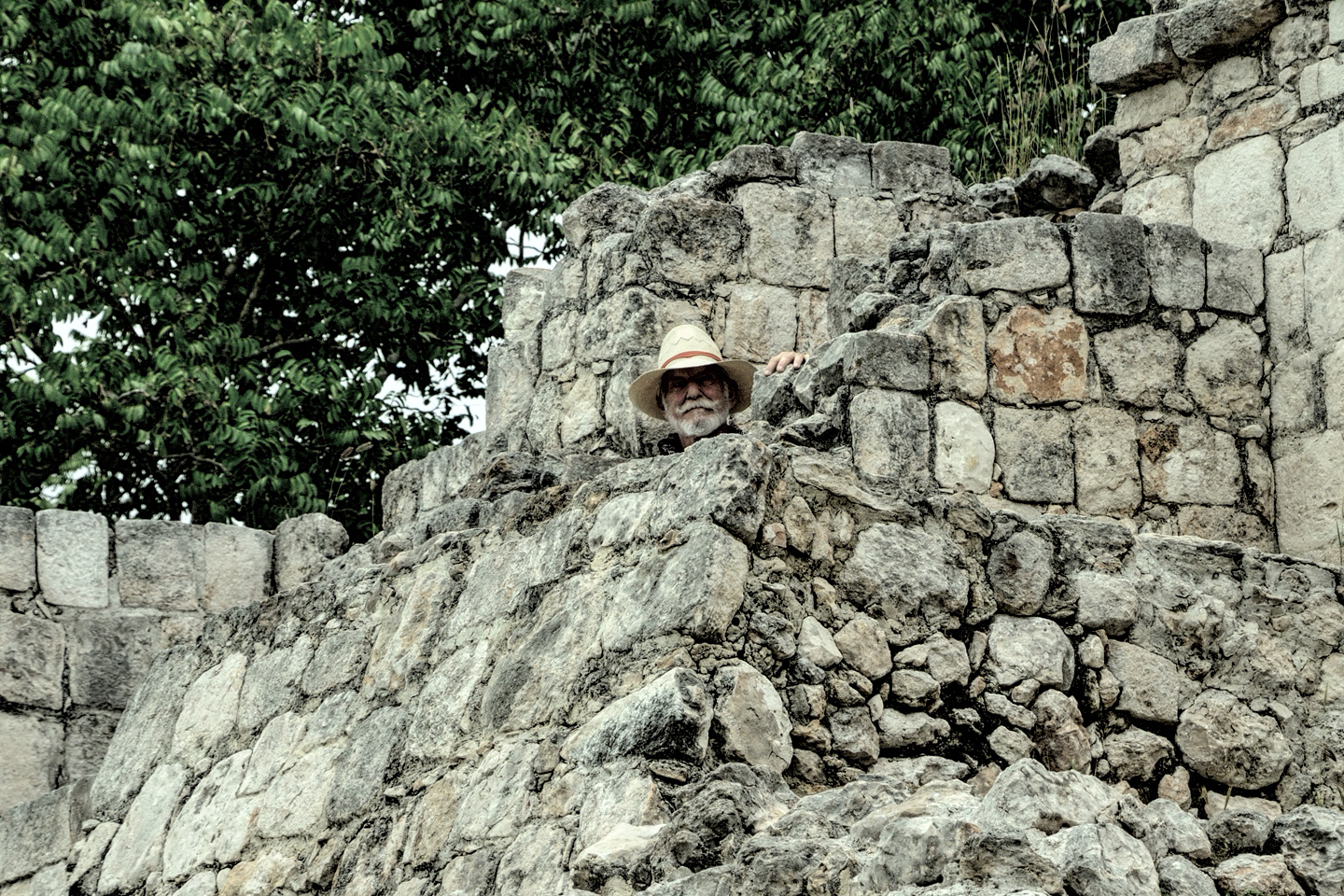


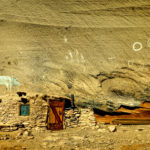

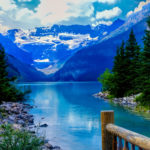

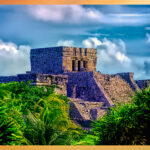
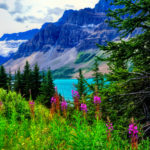


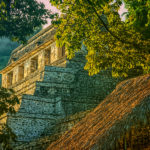
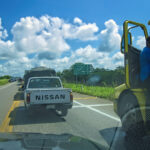
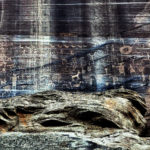
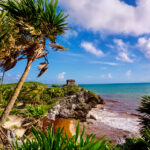
Recent Comments